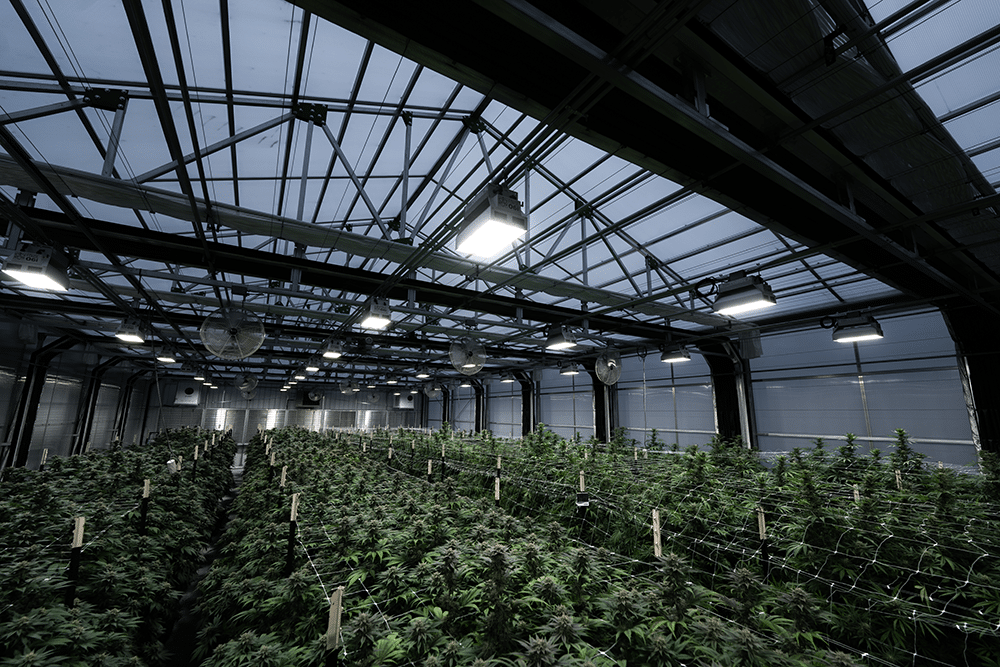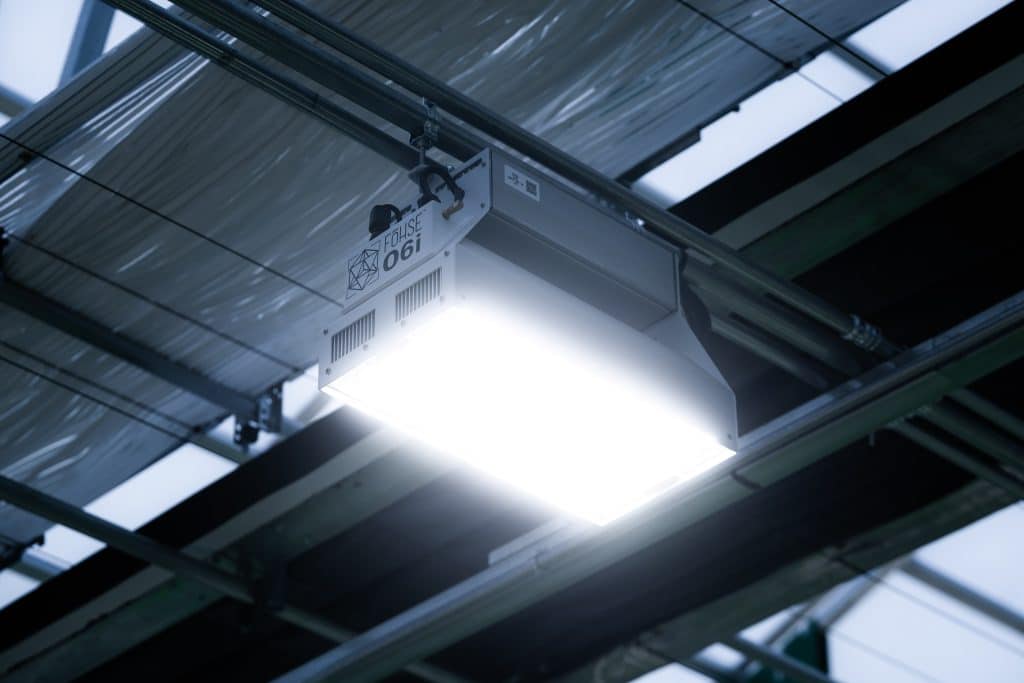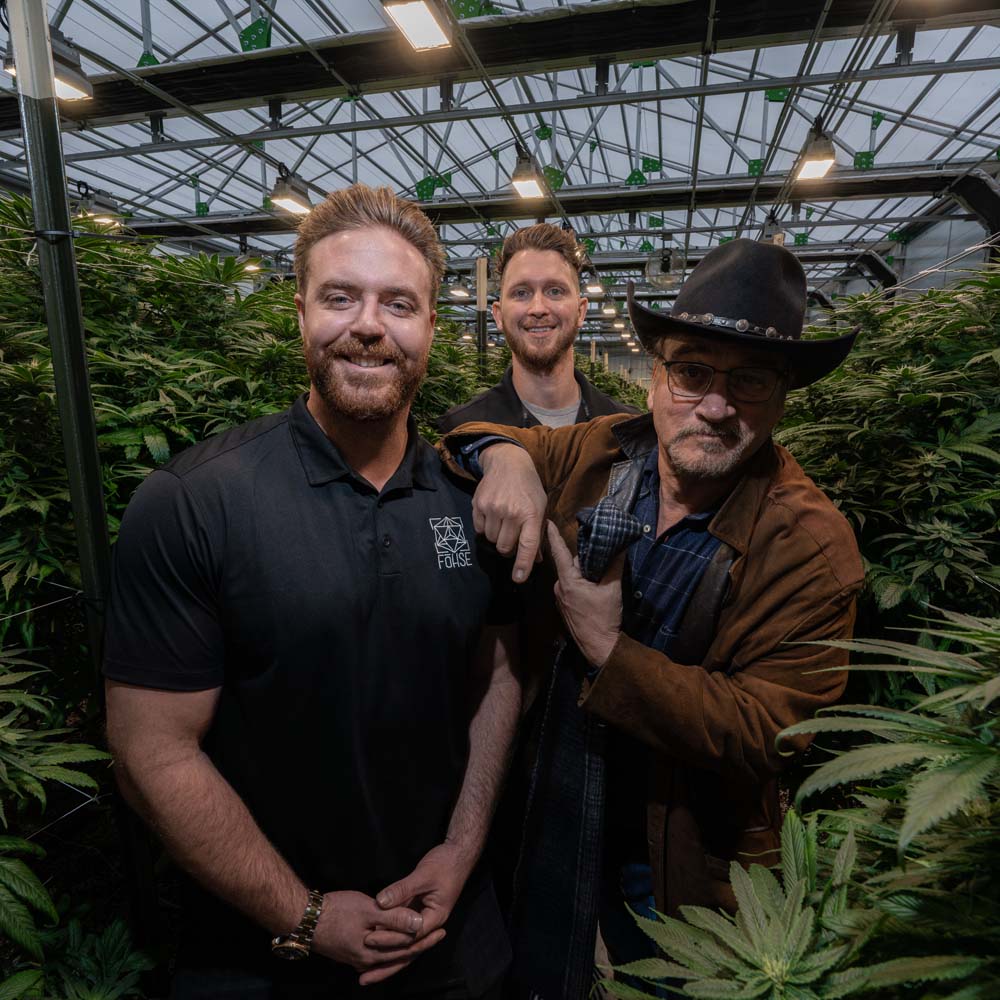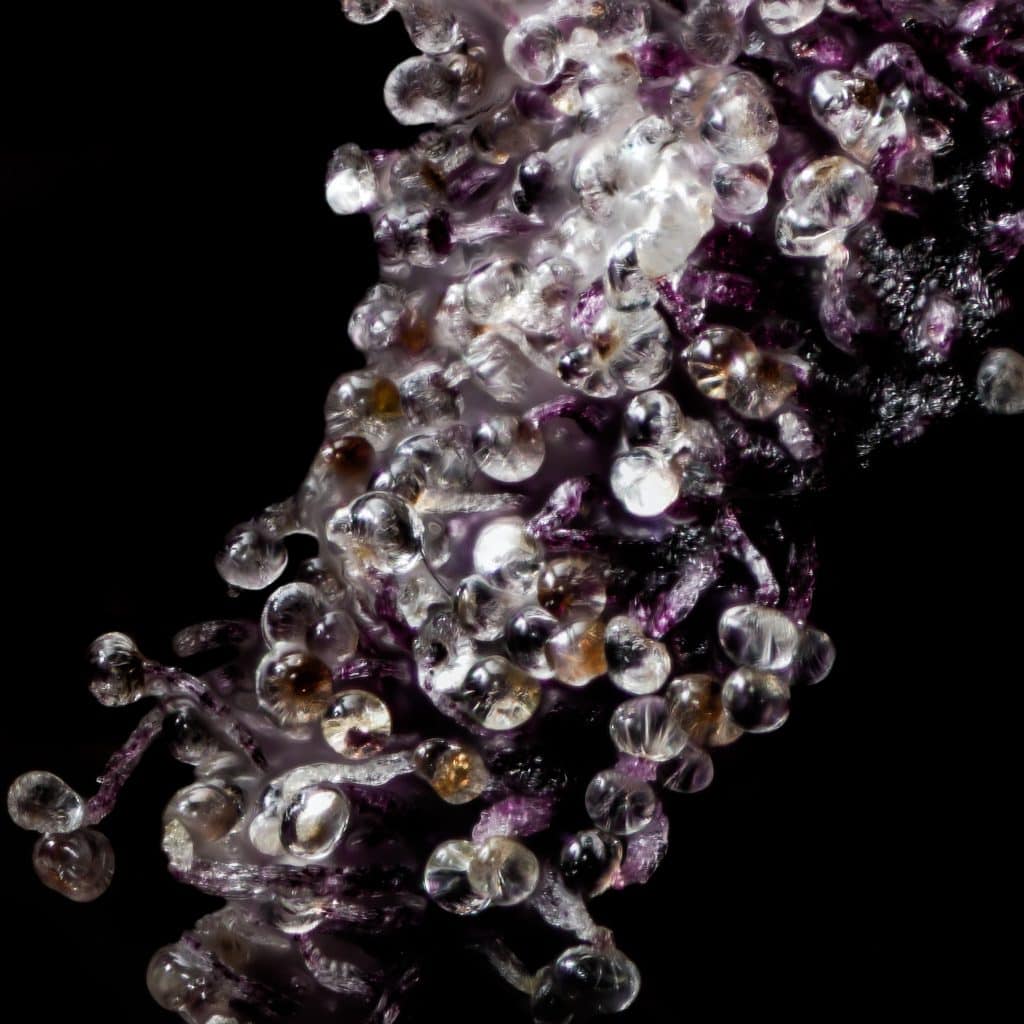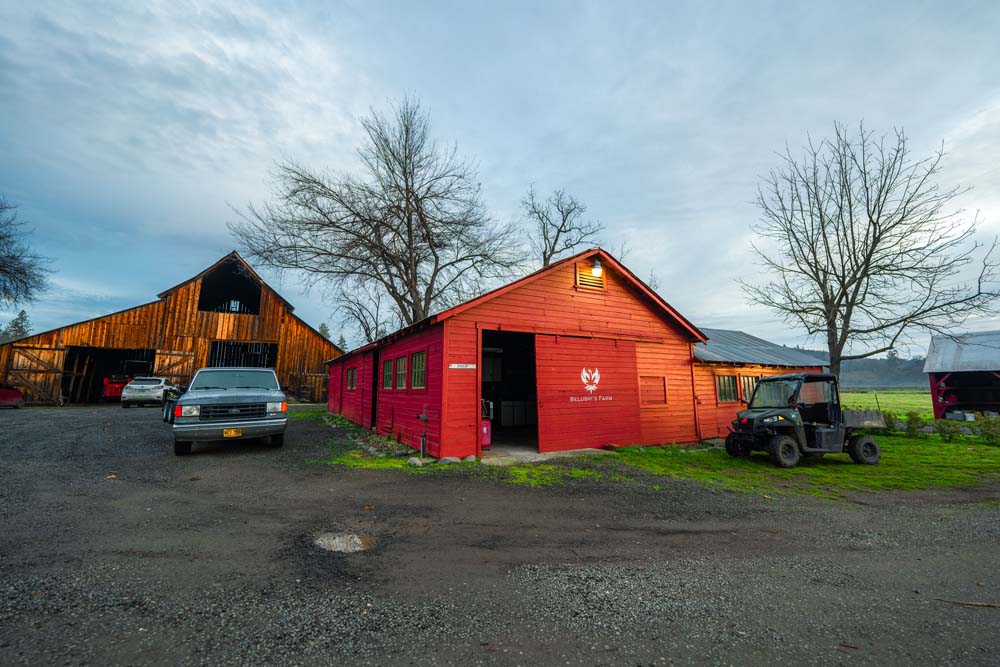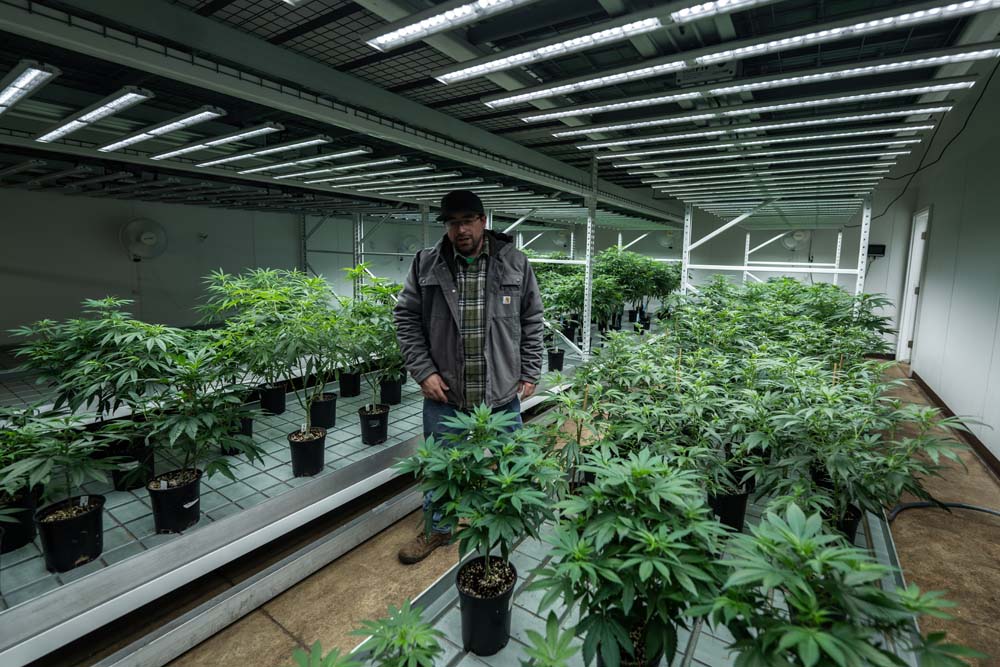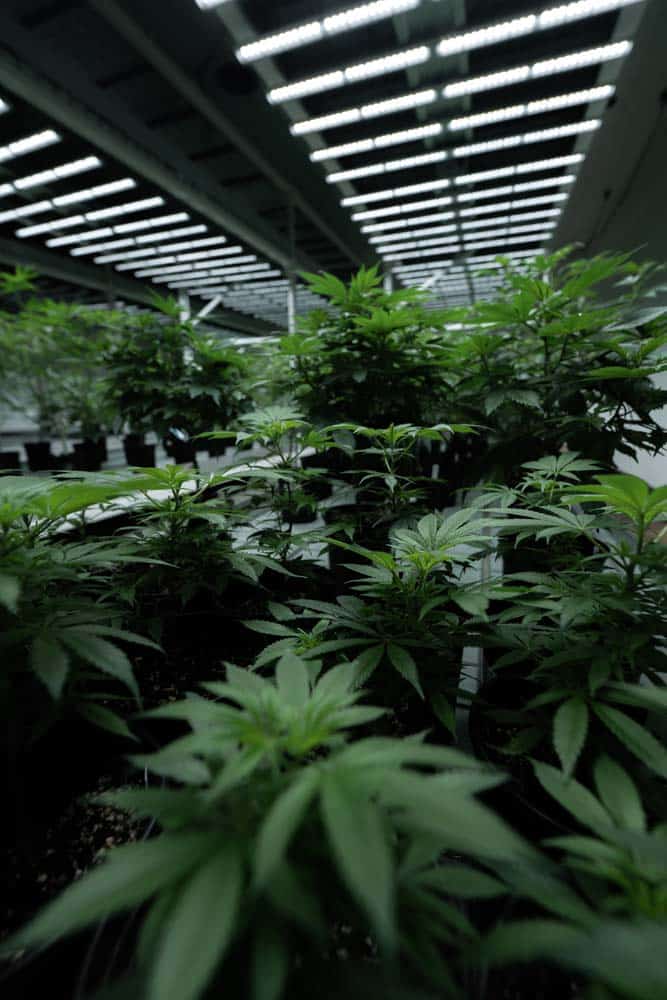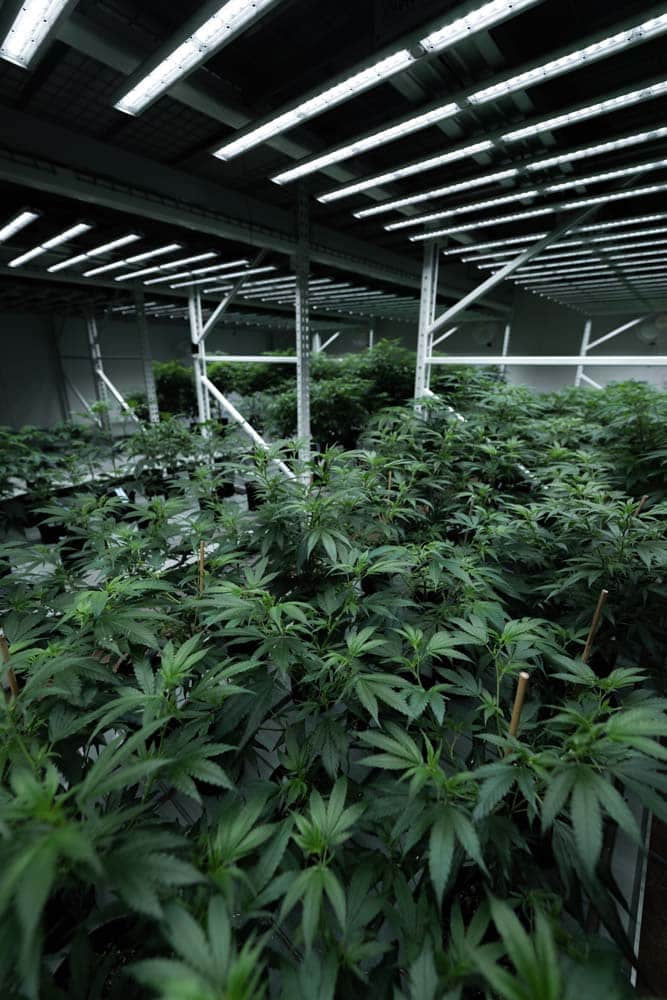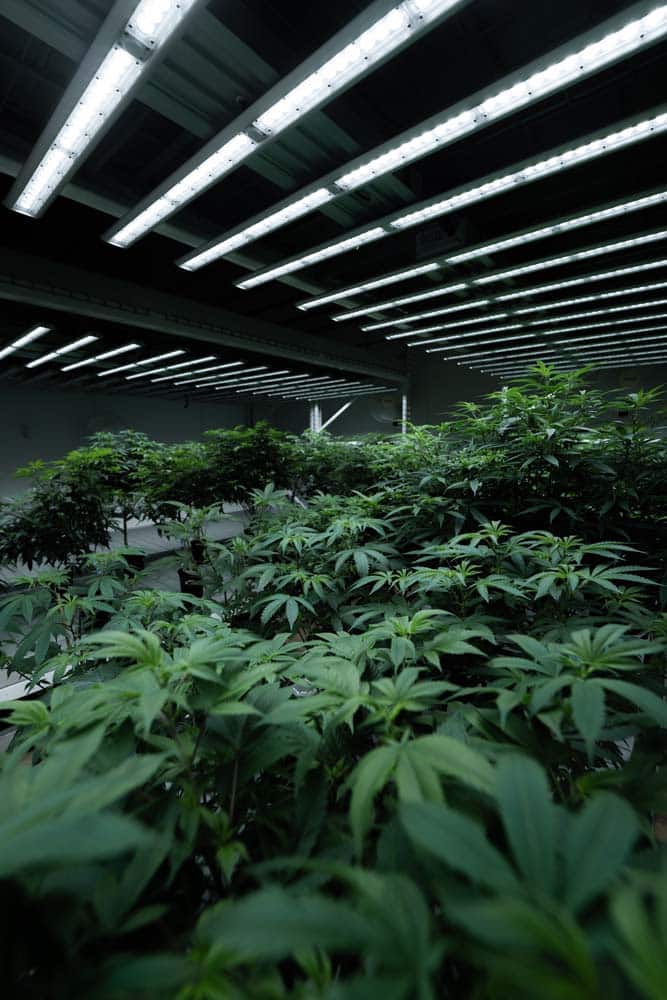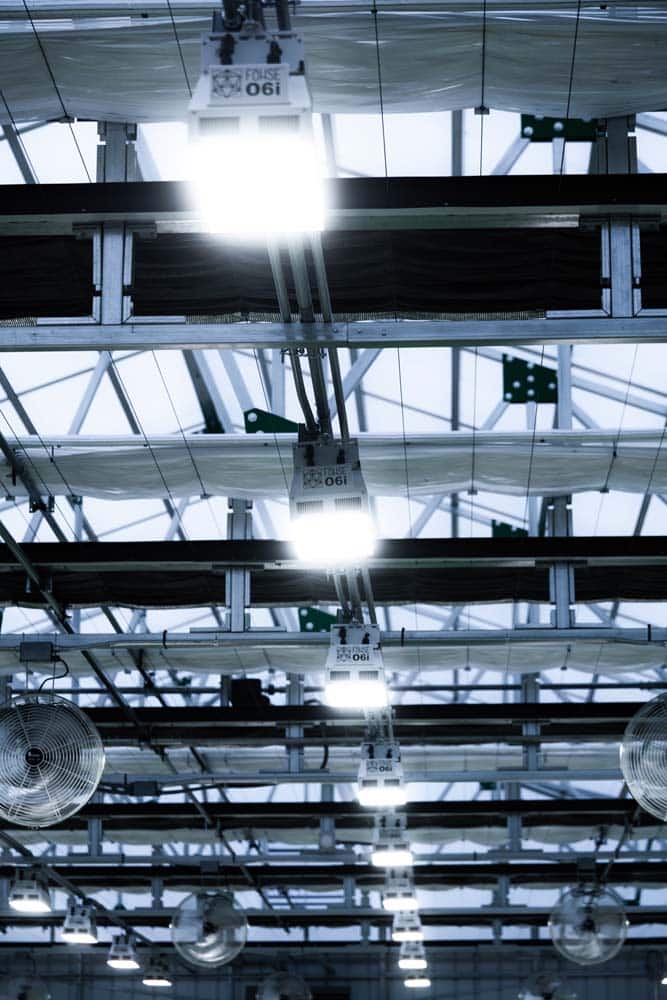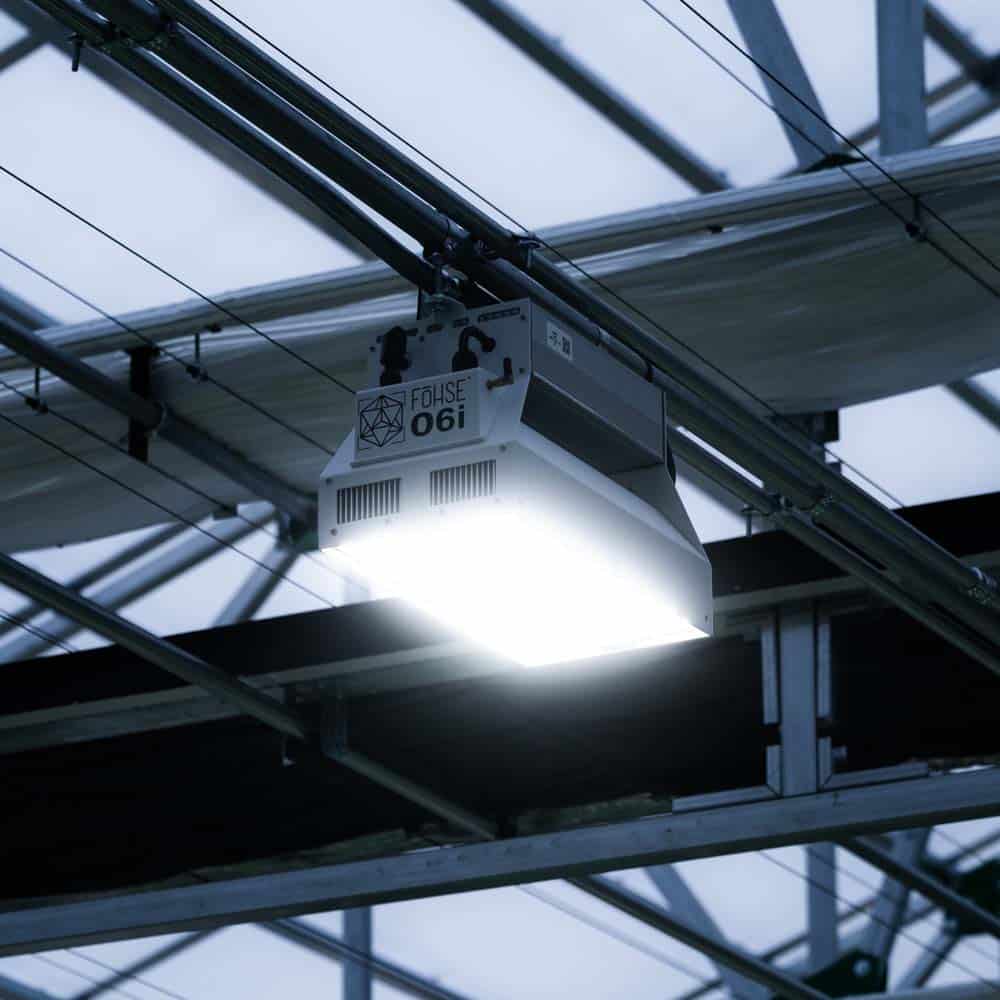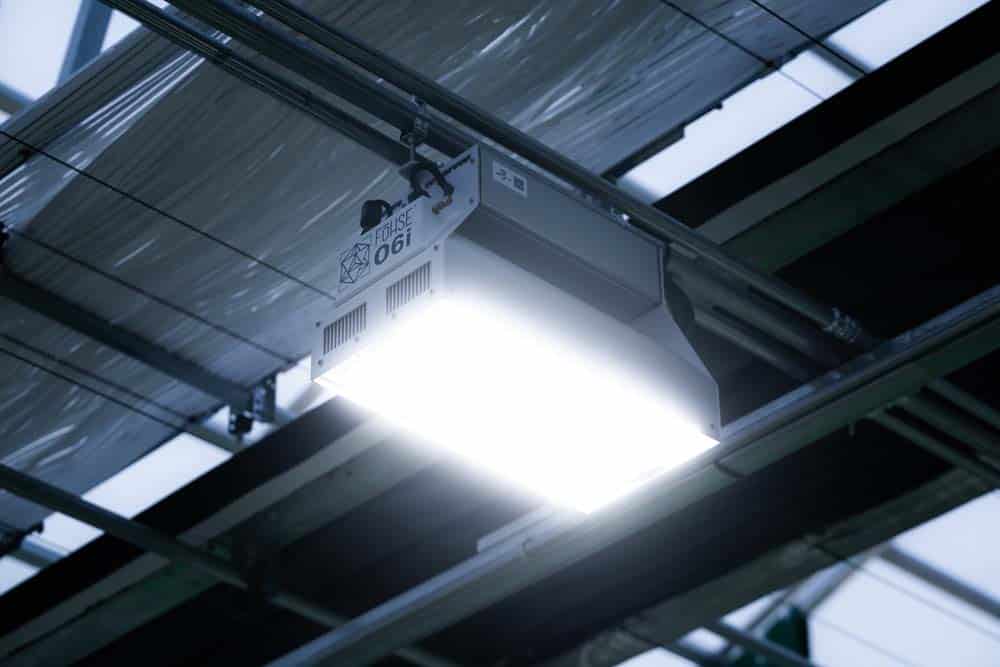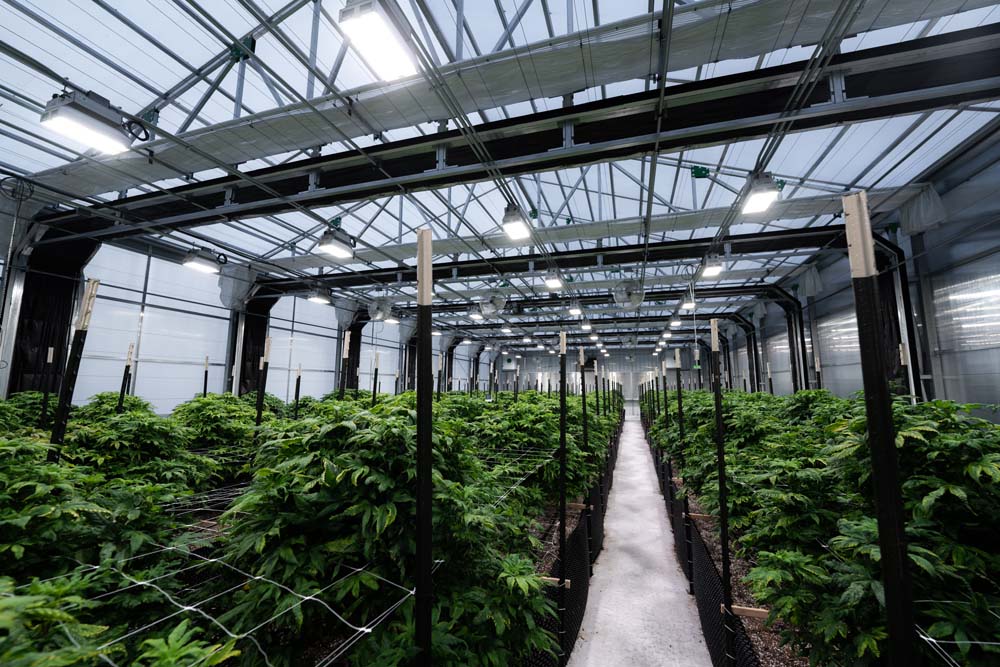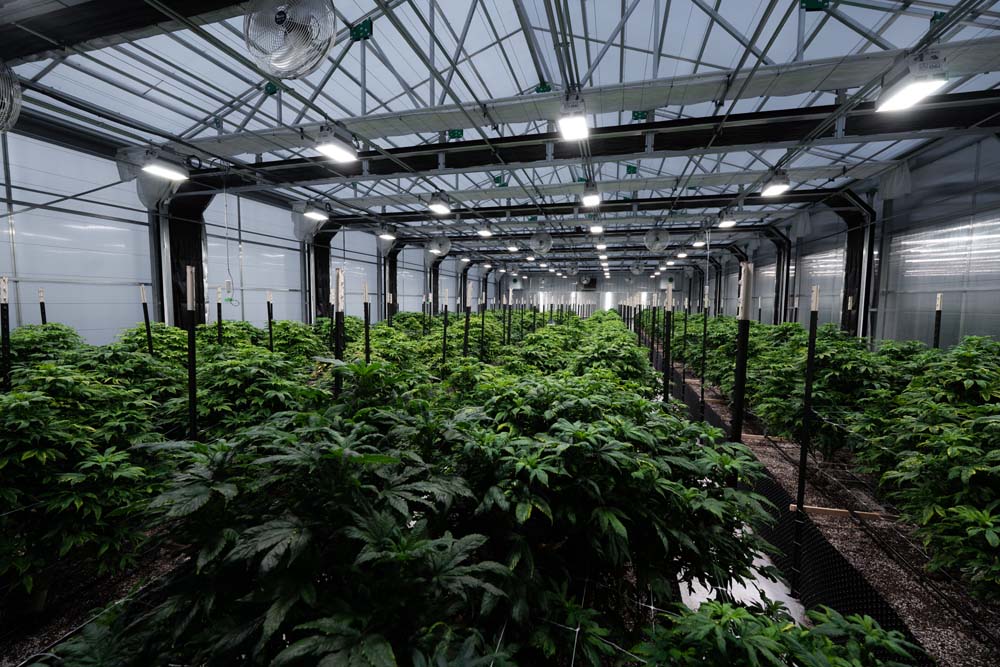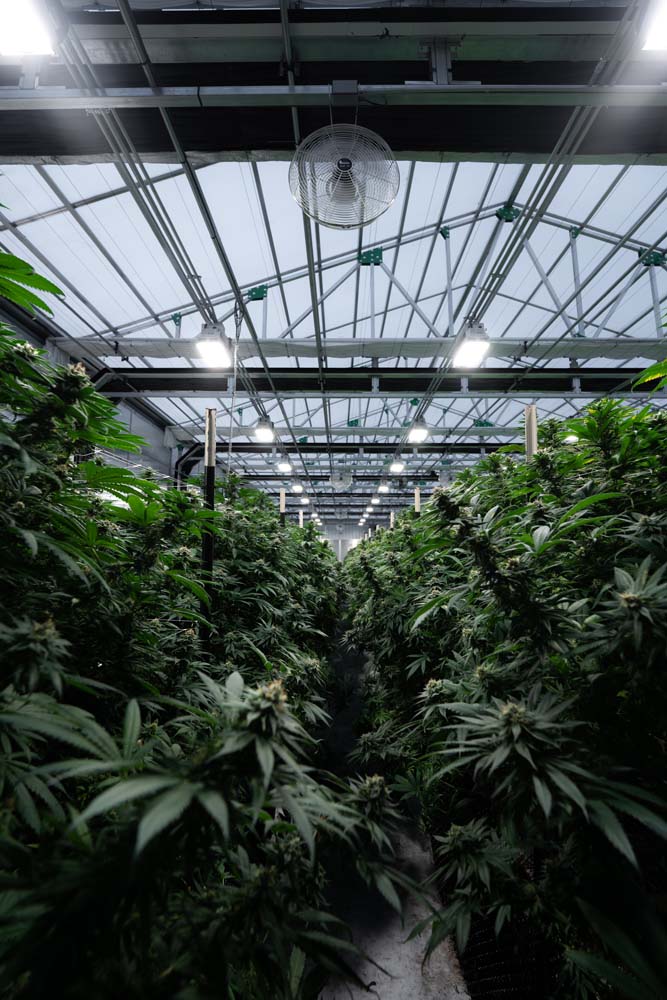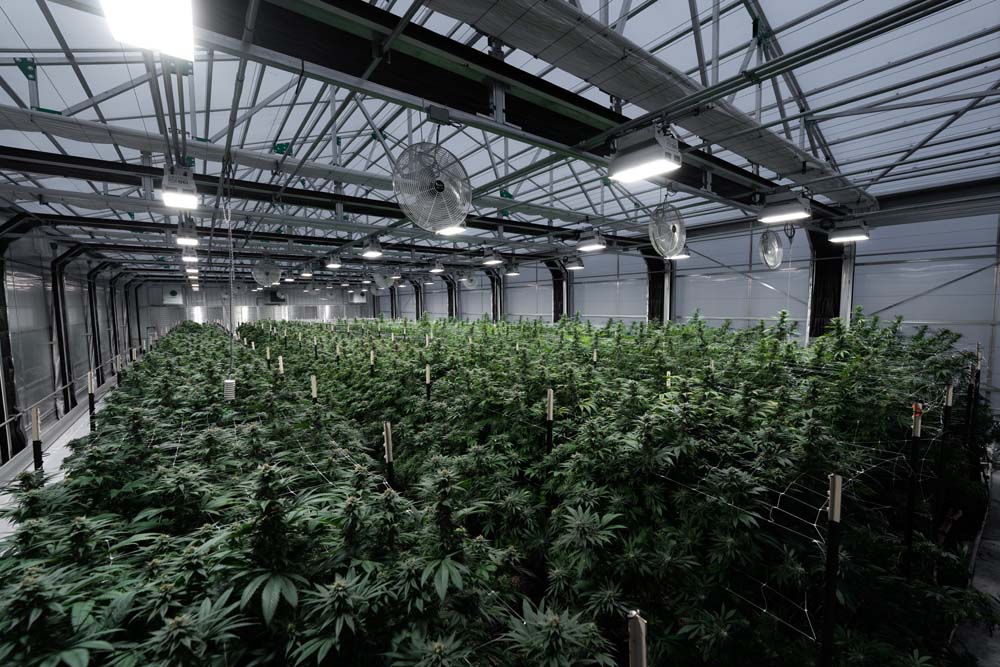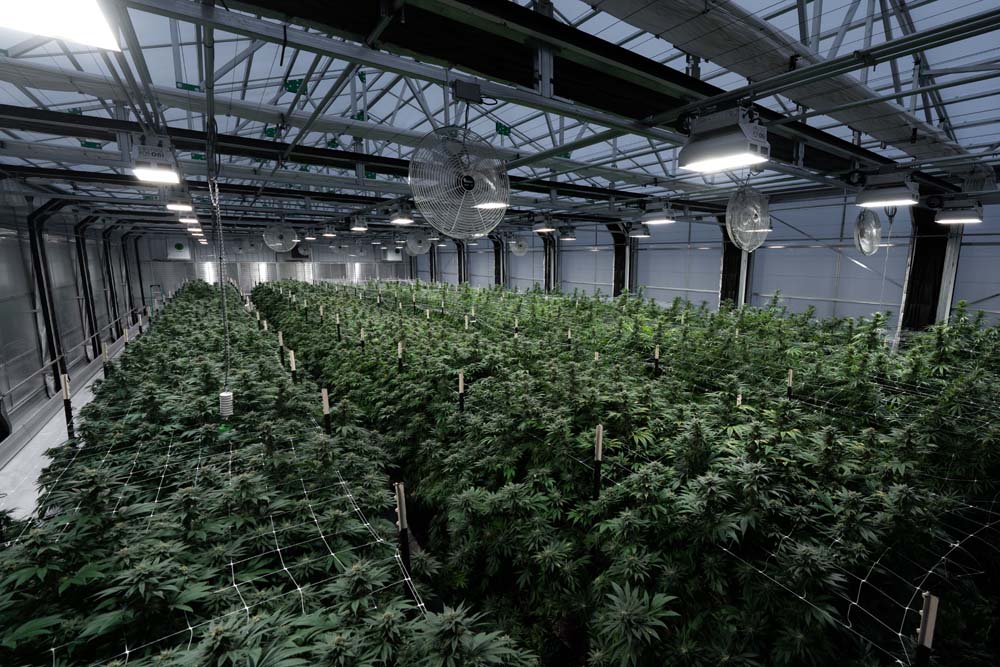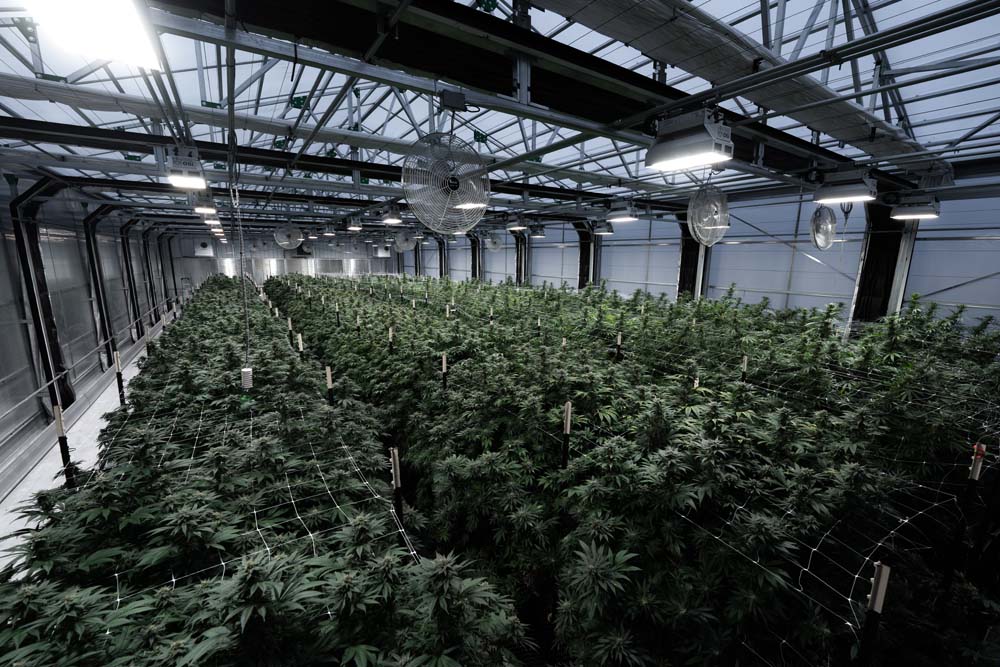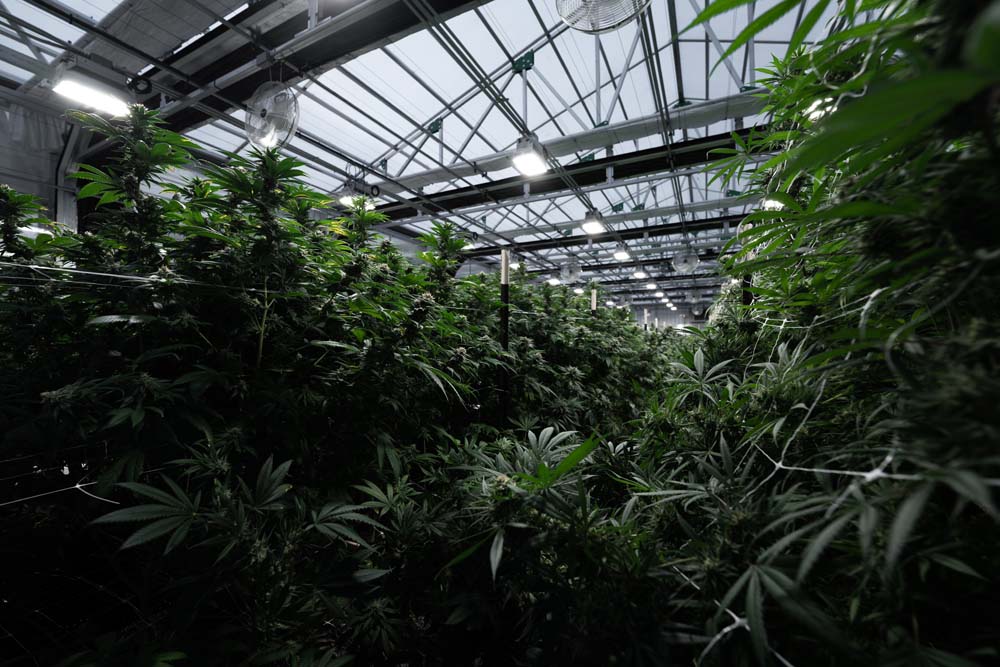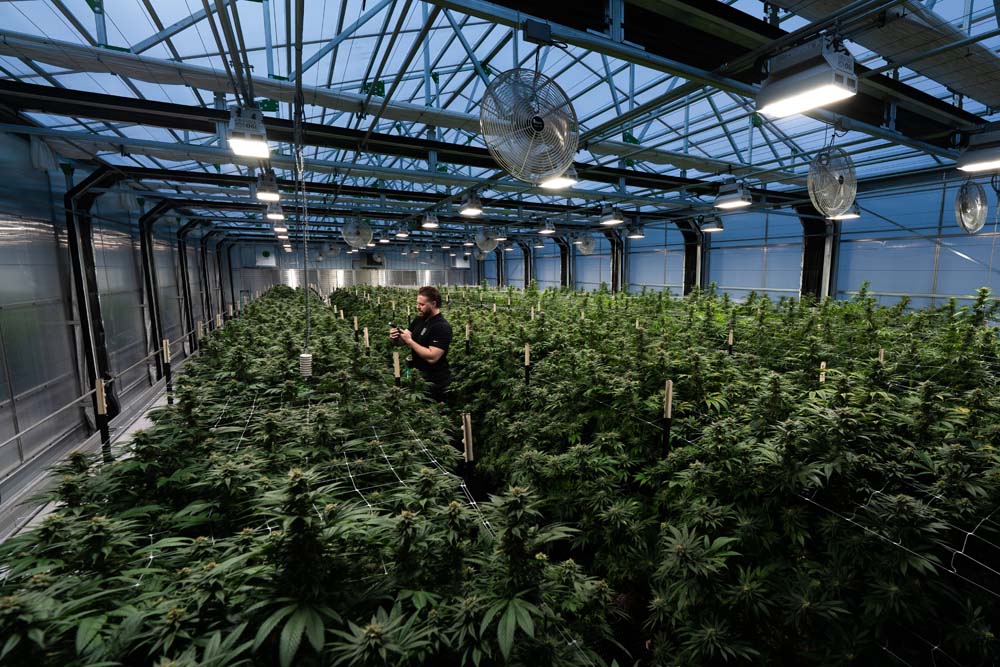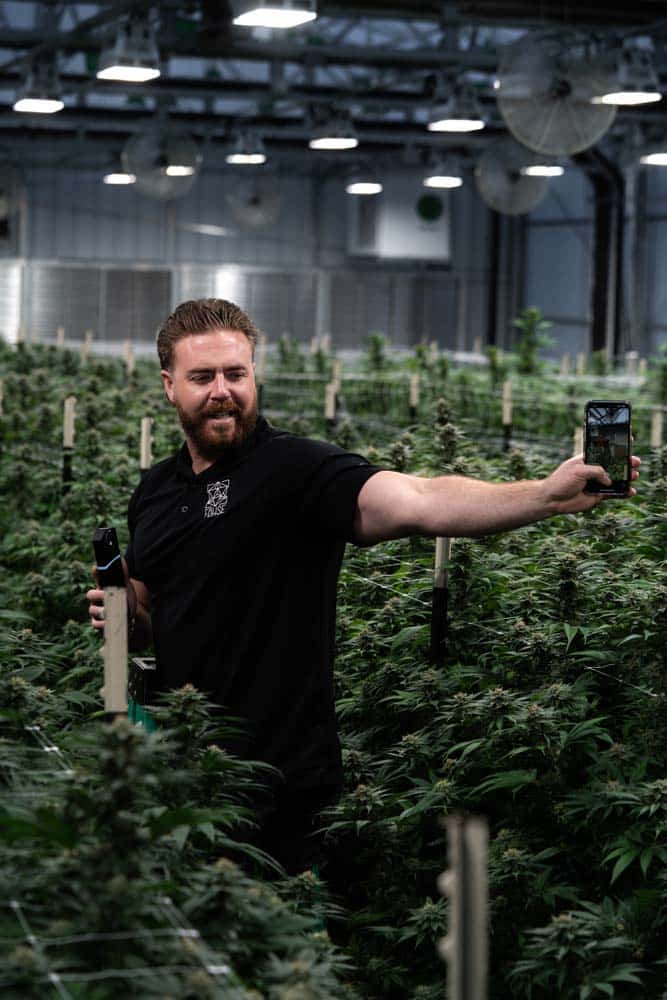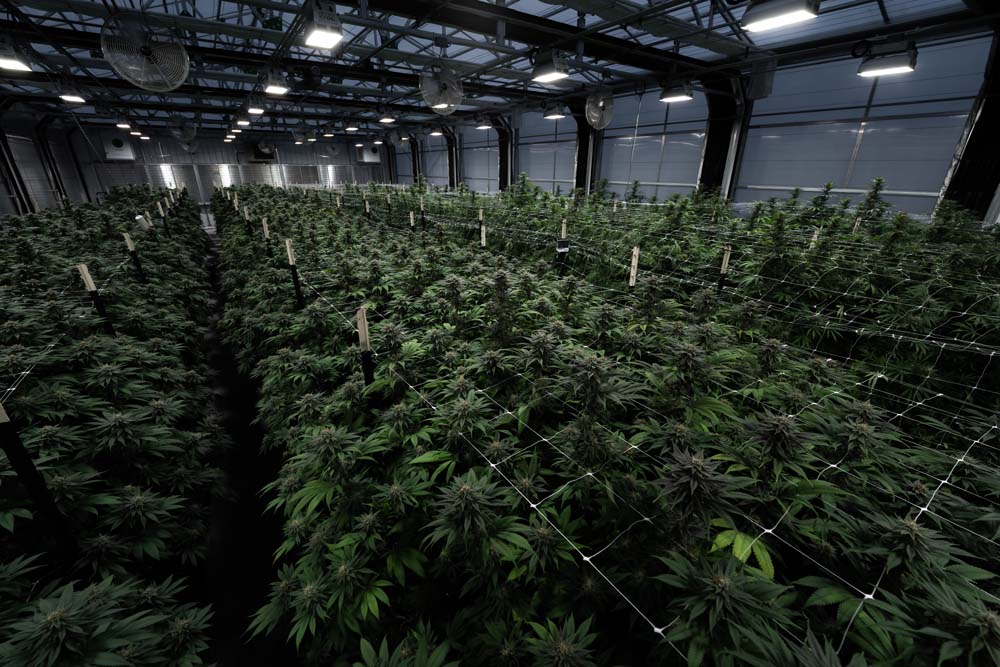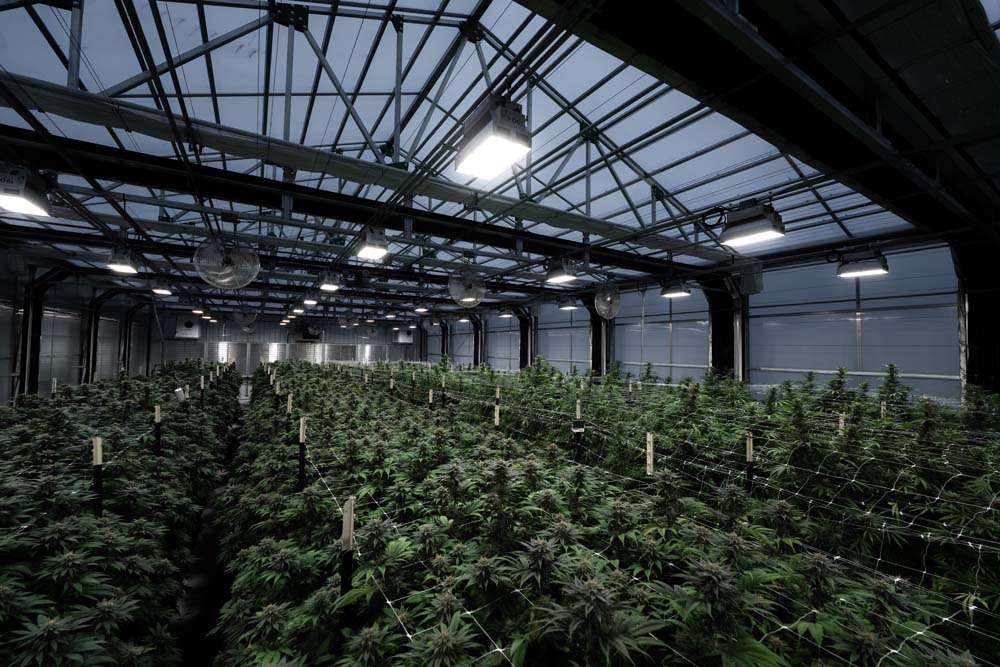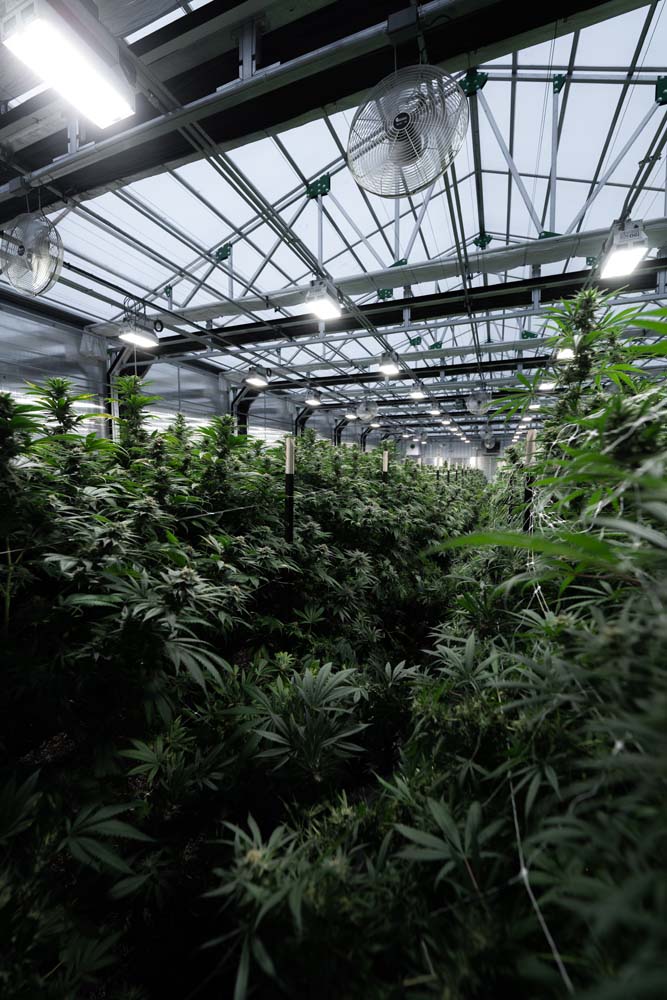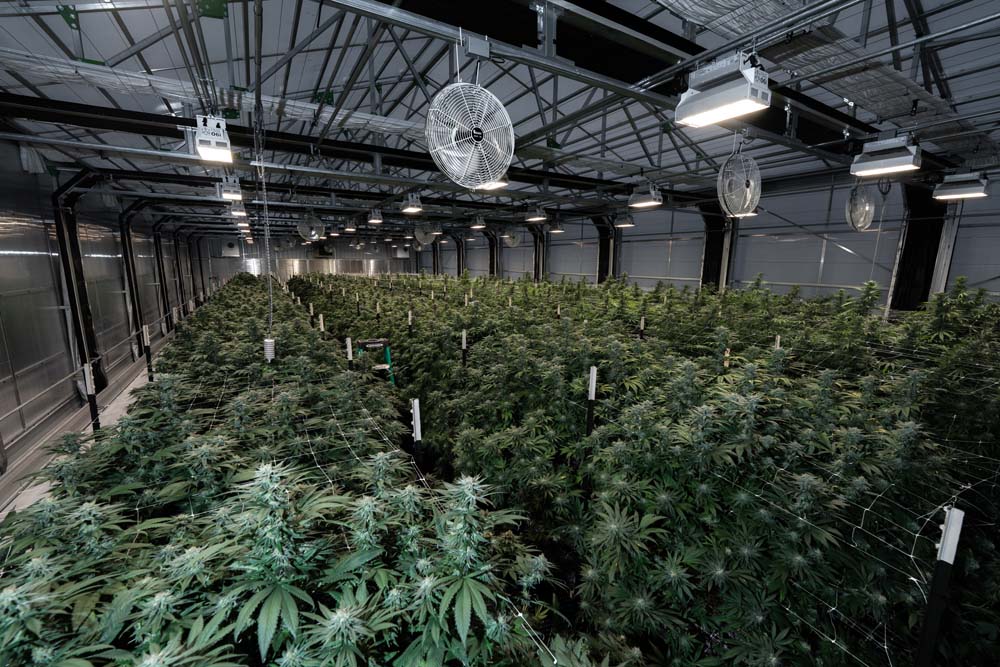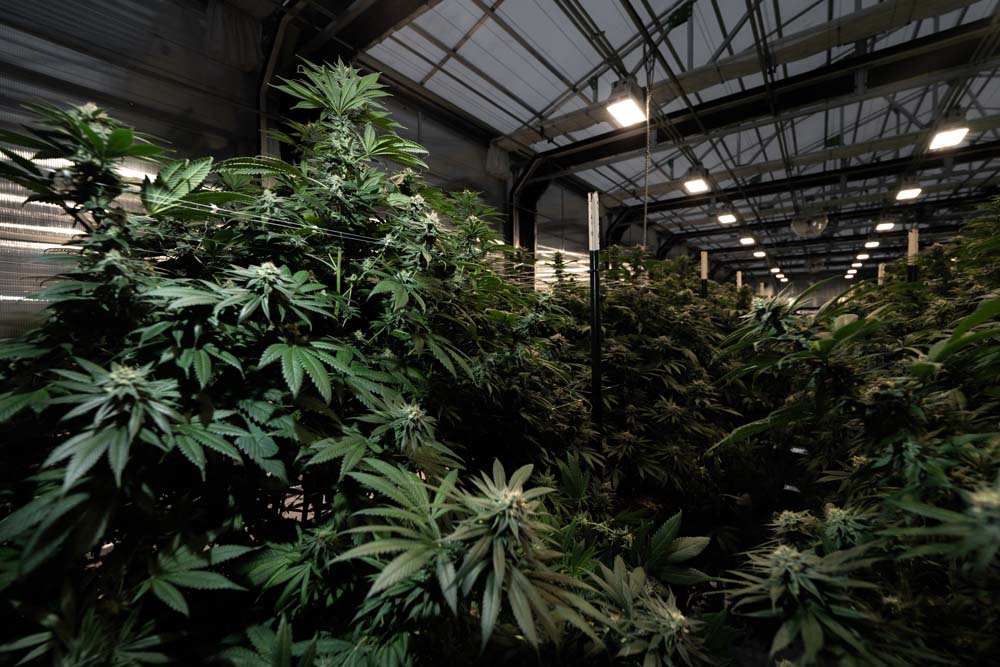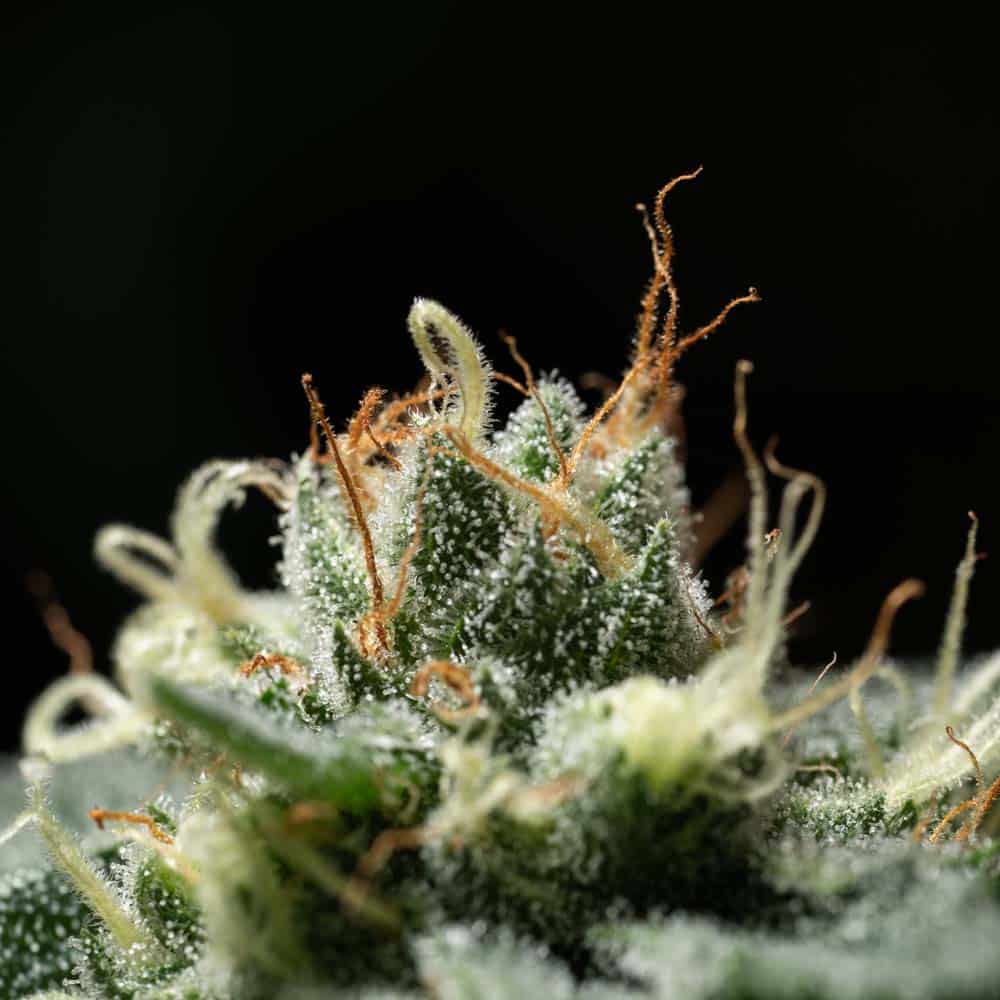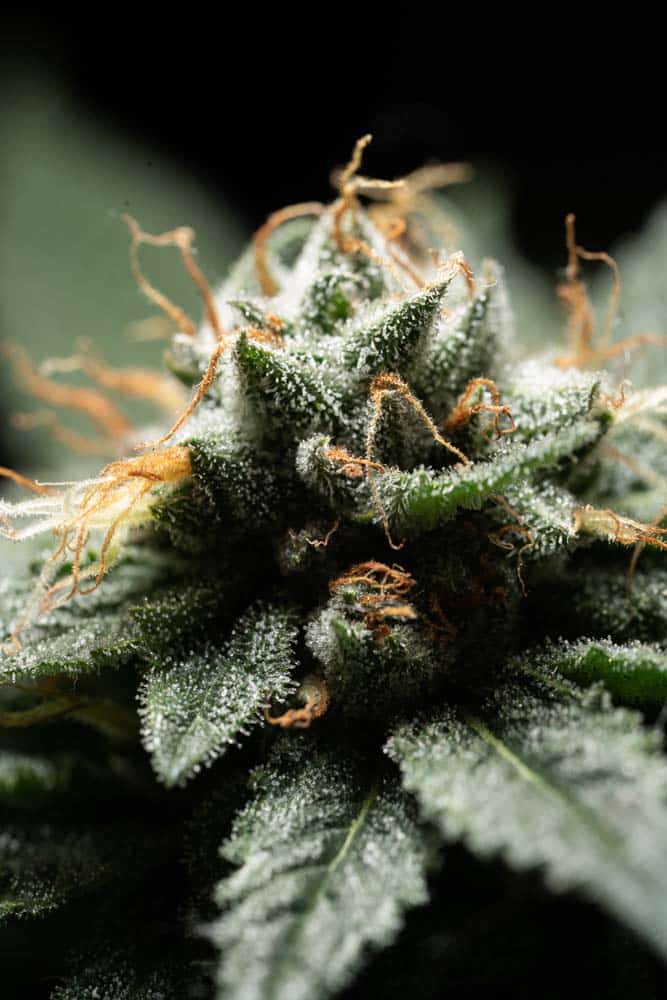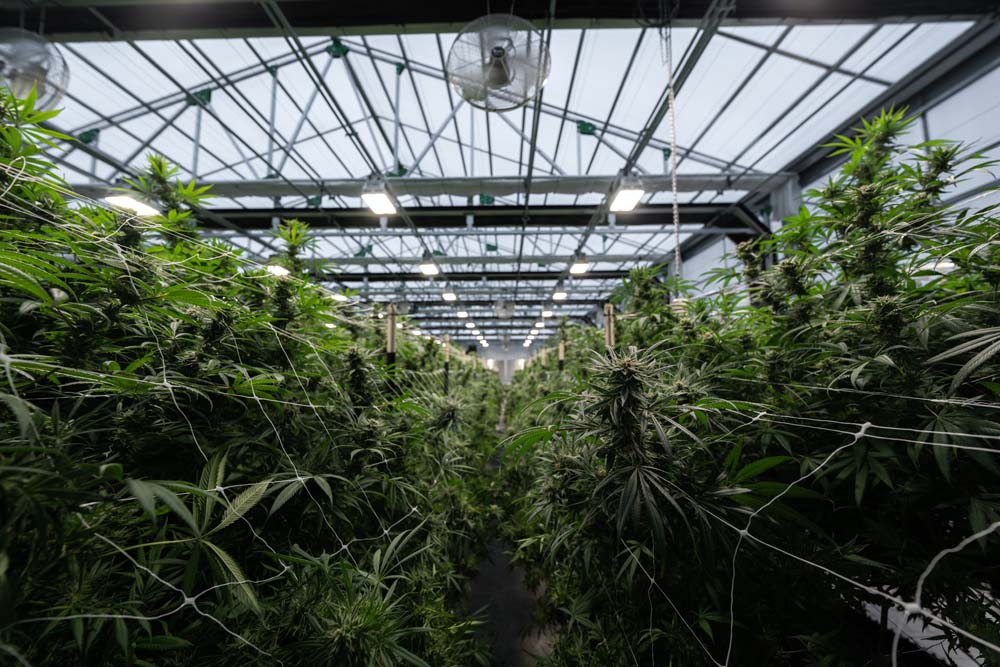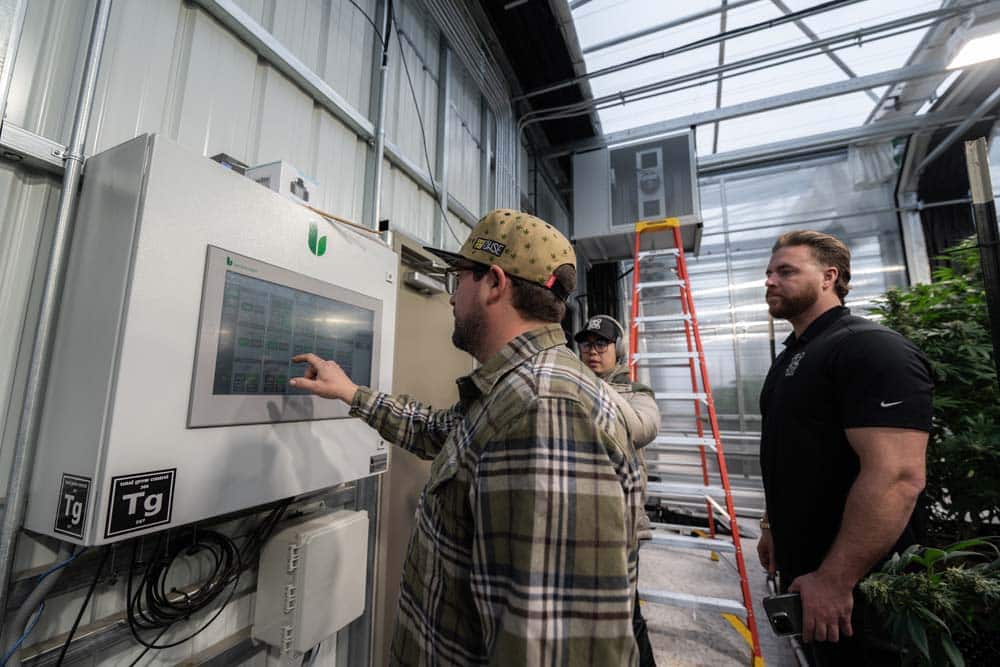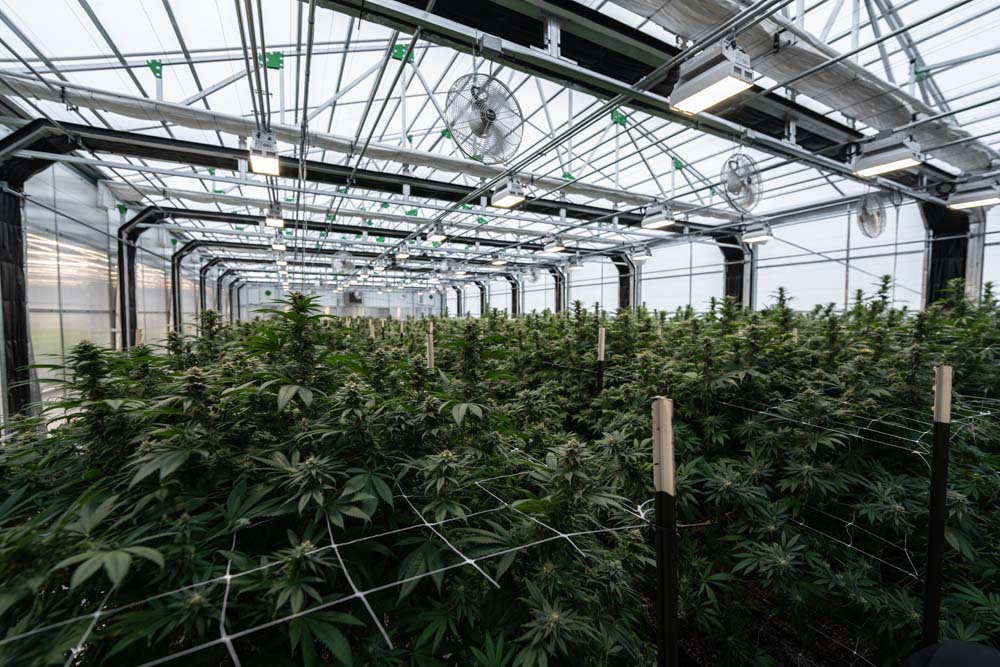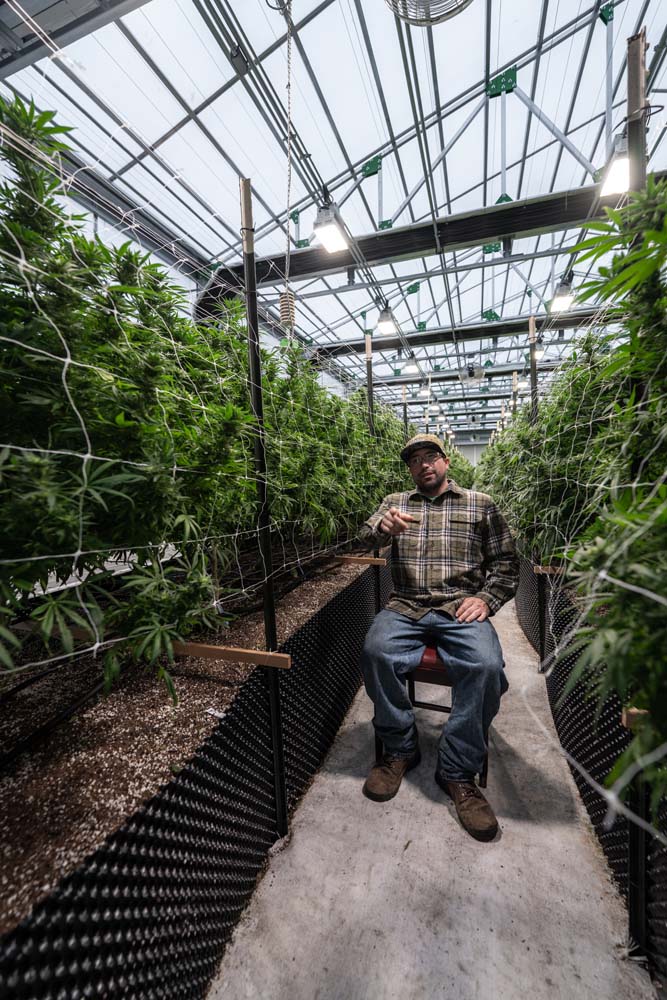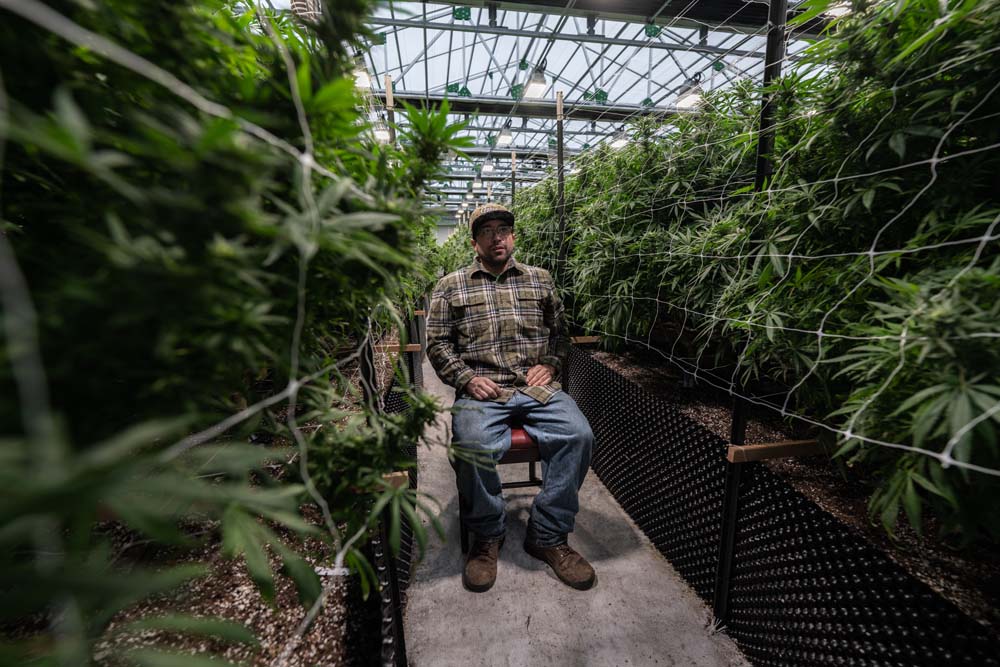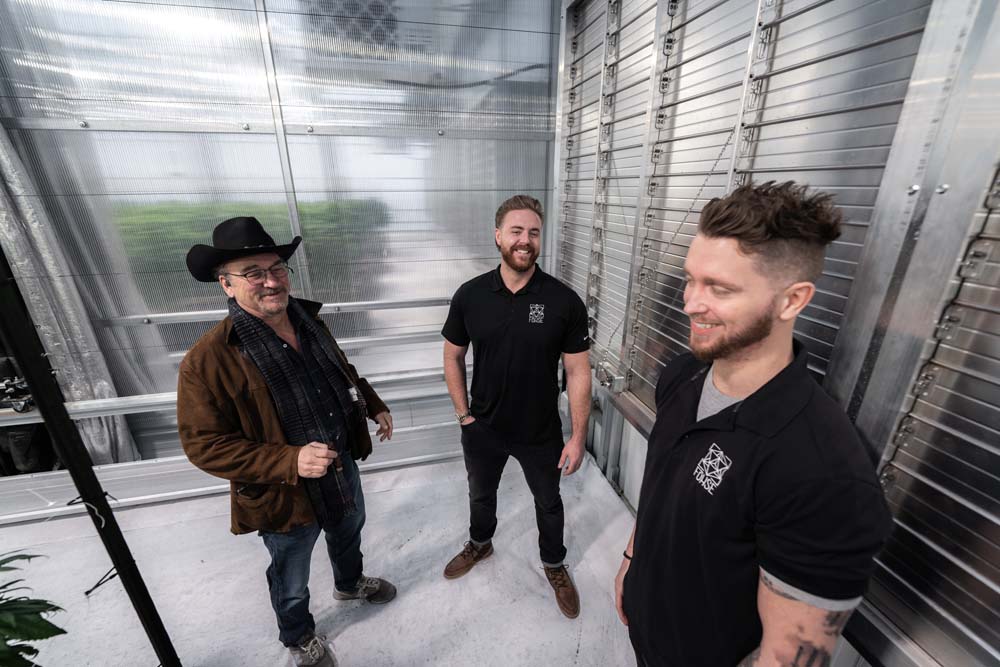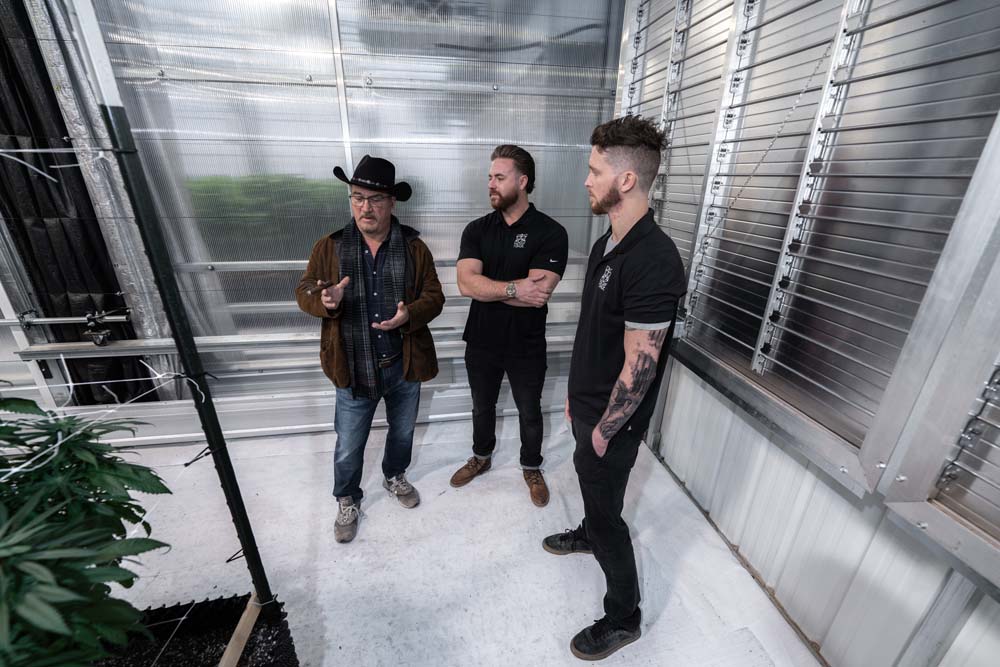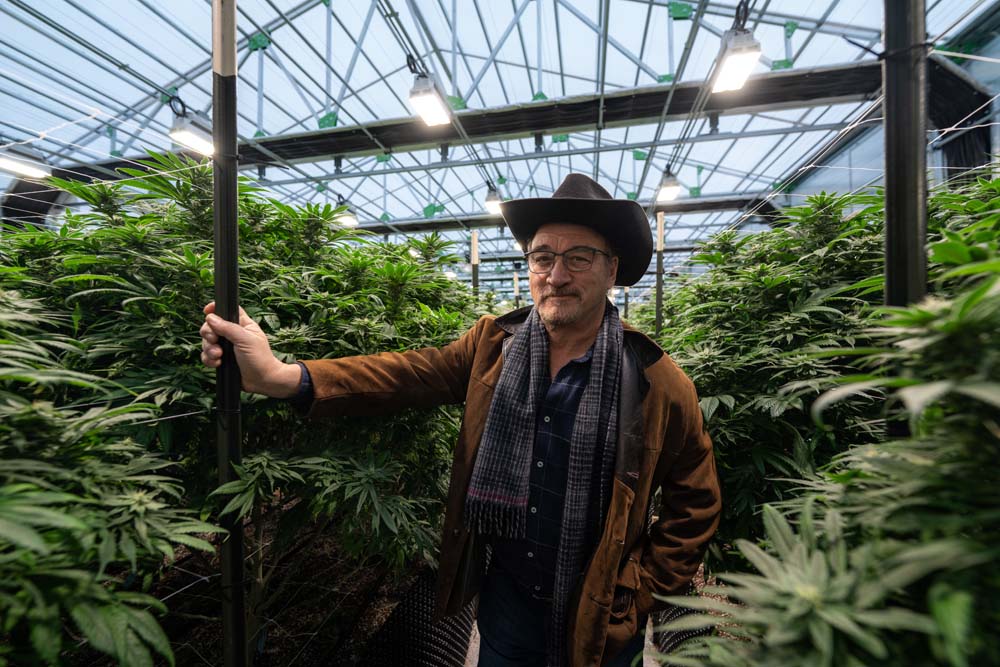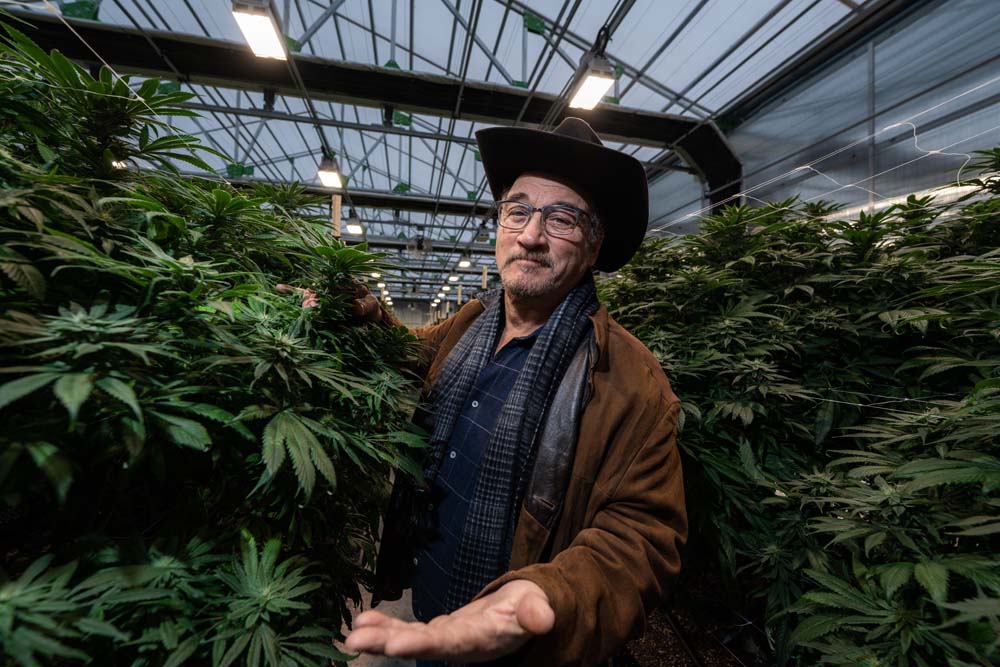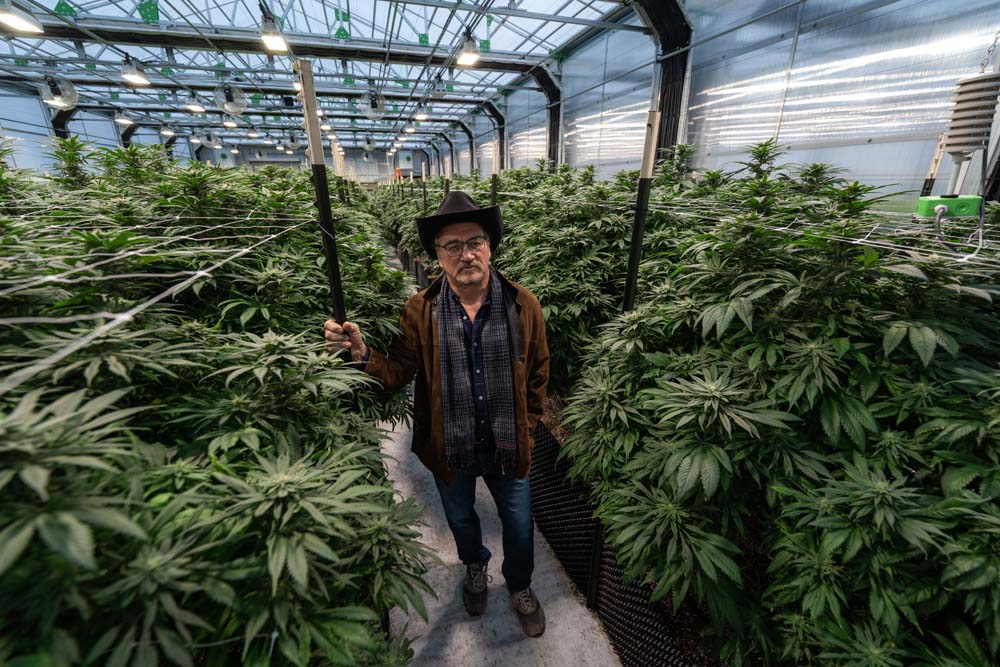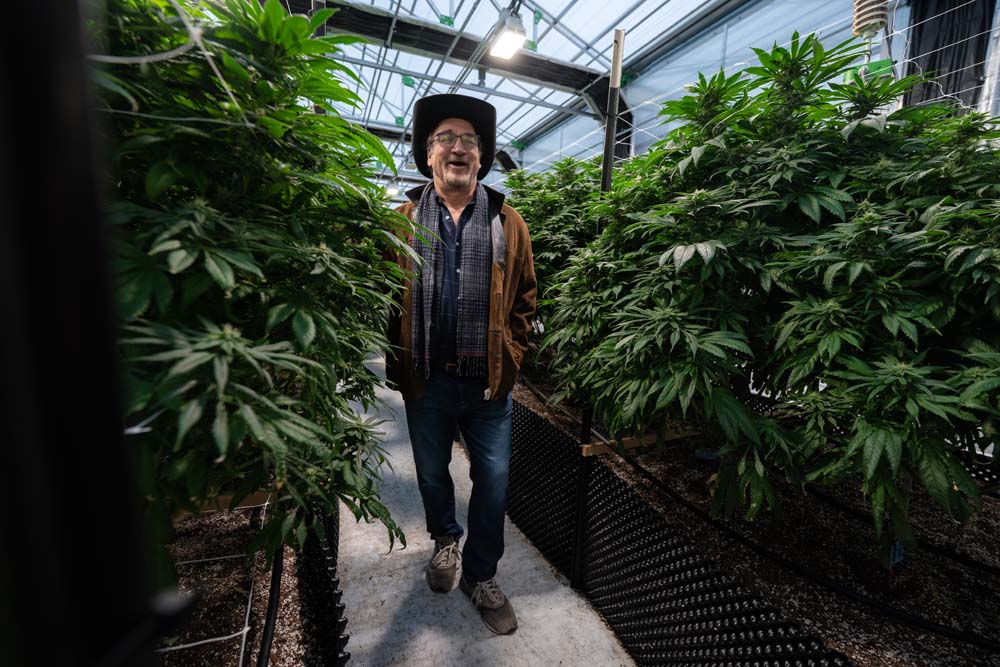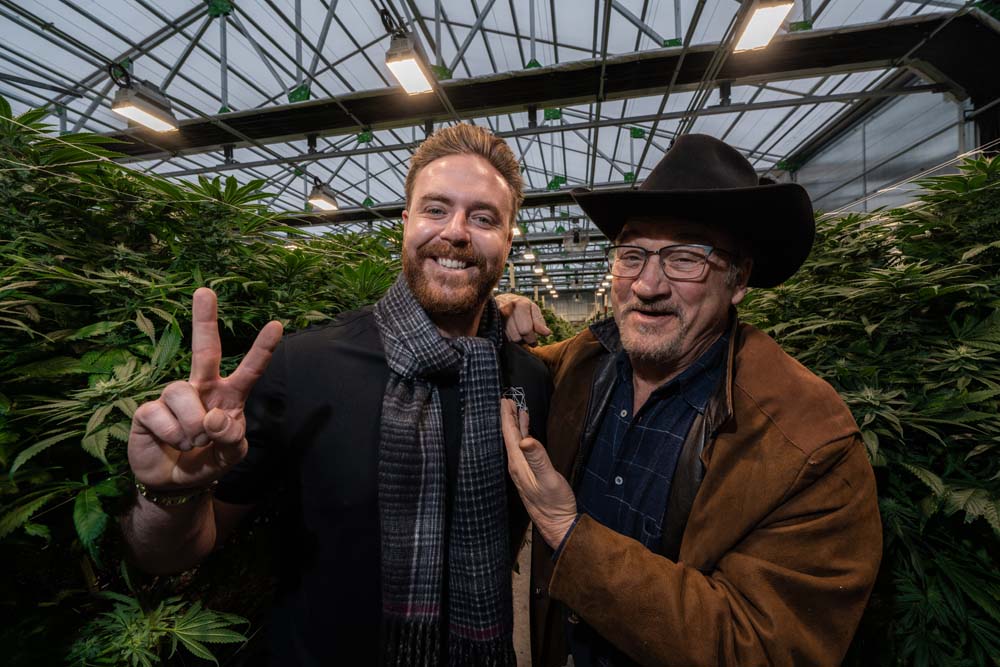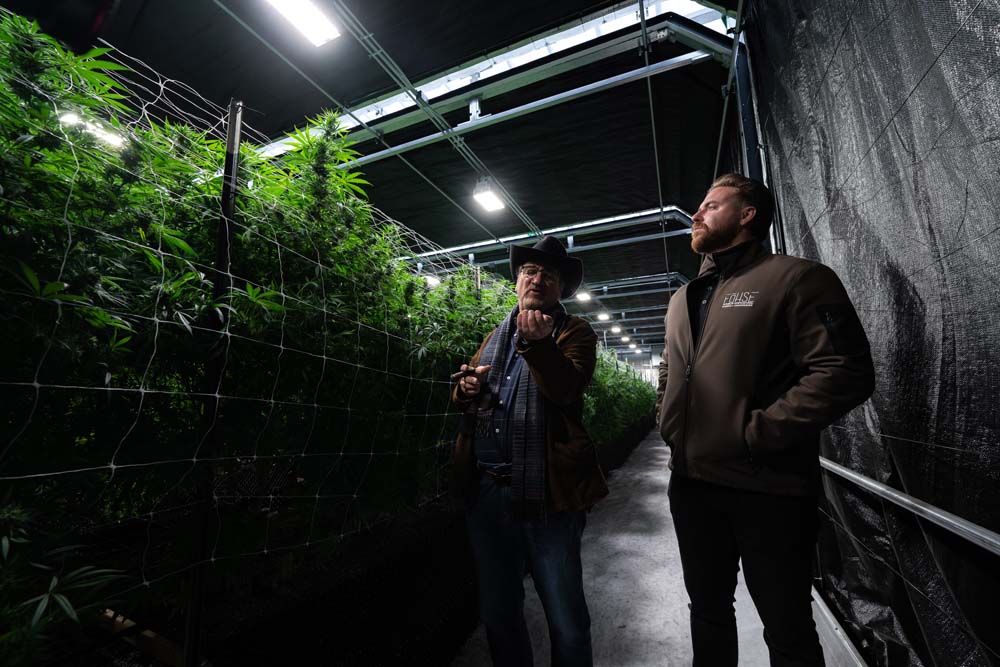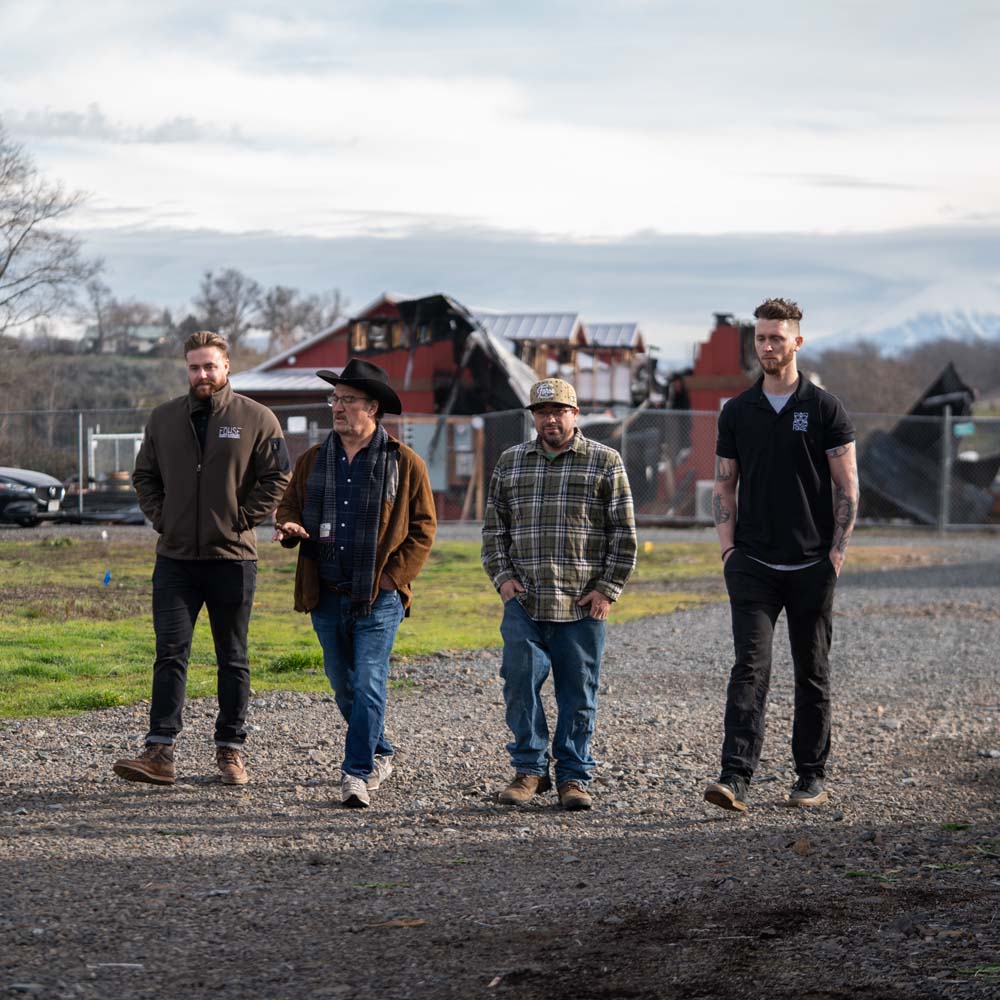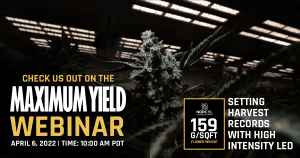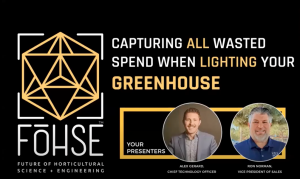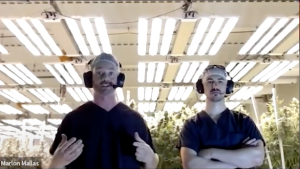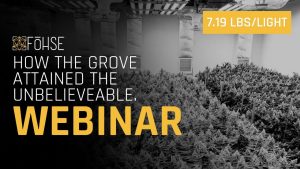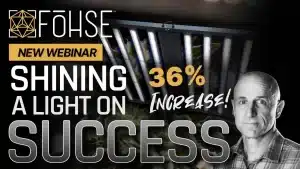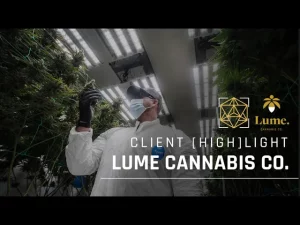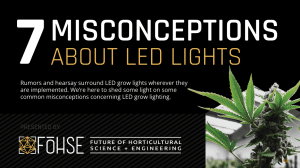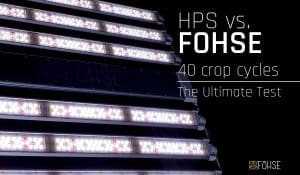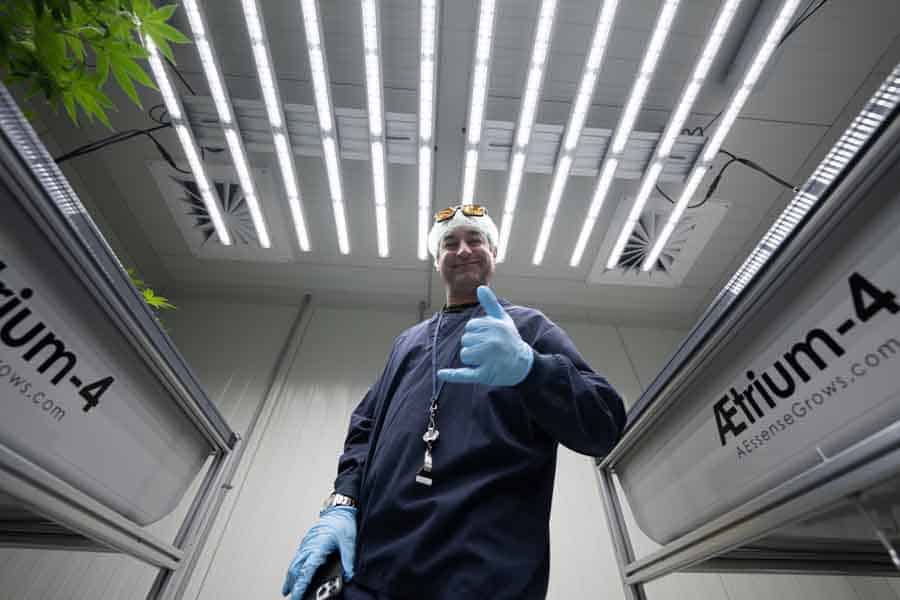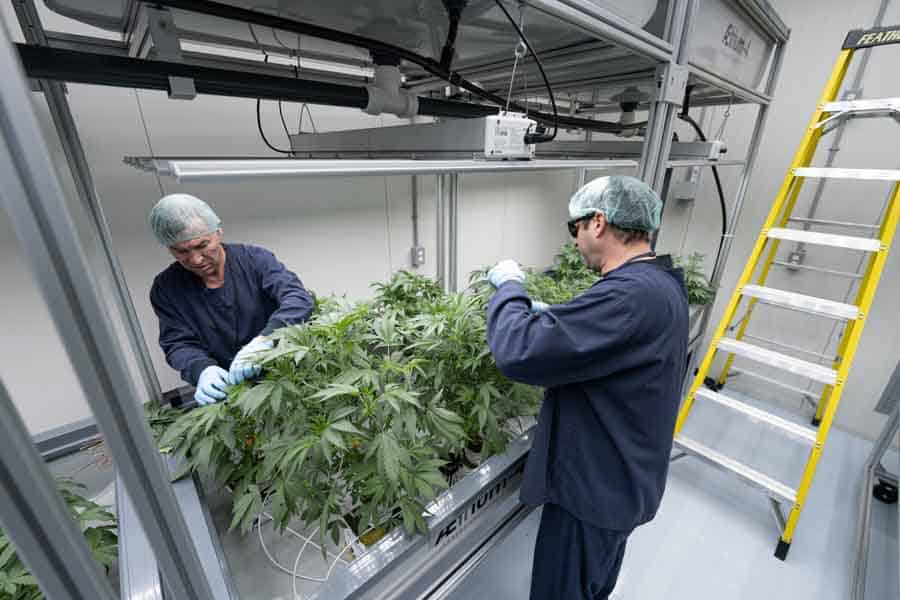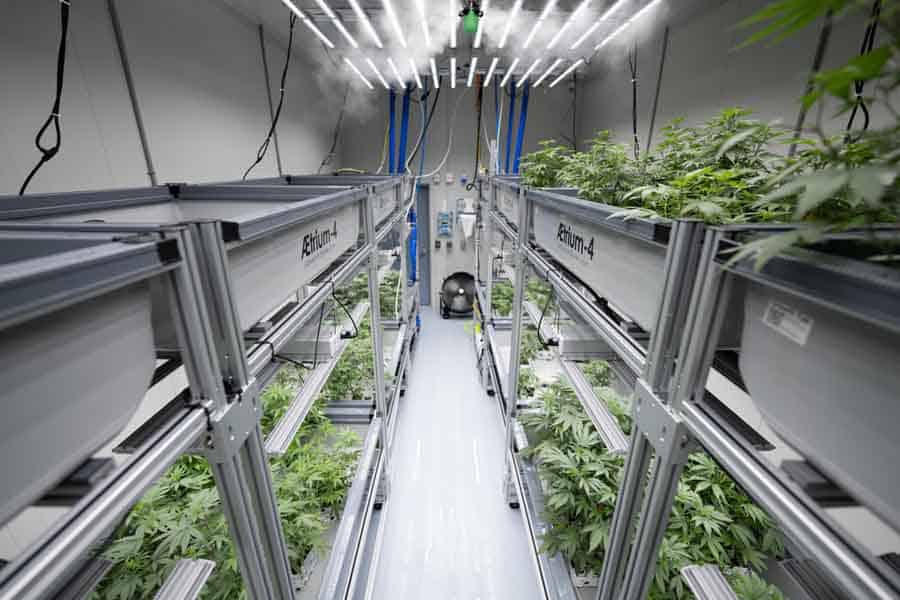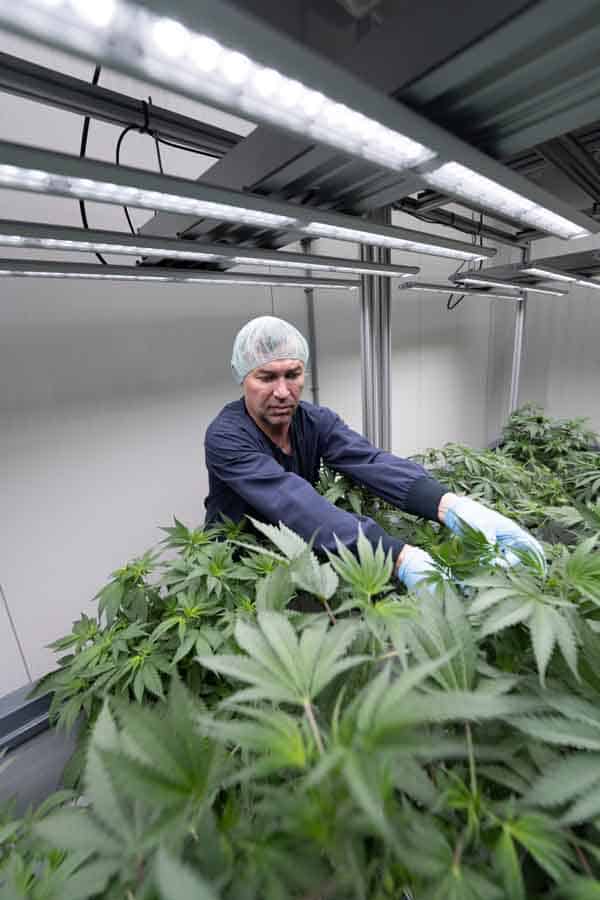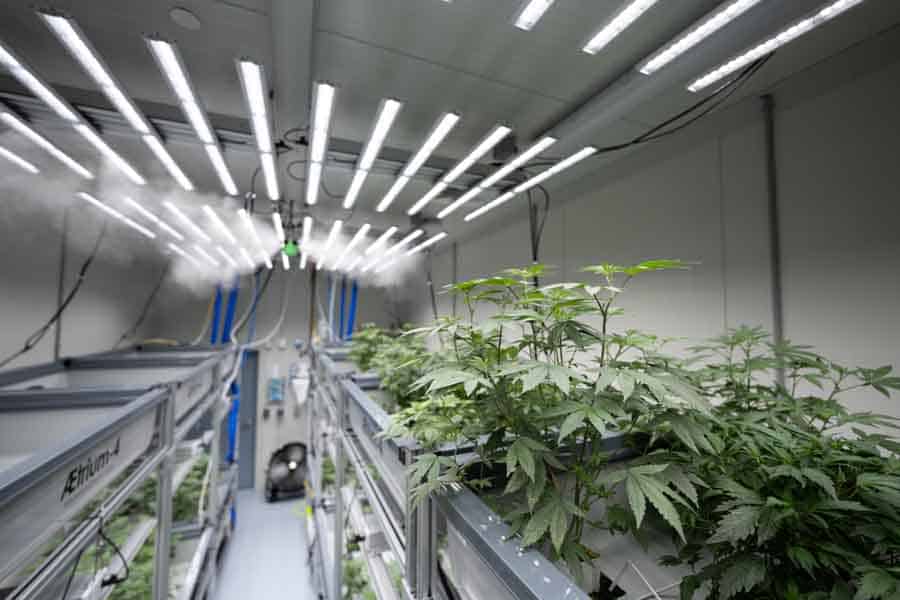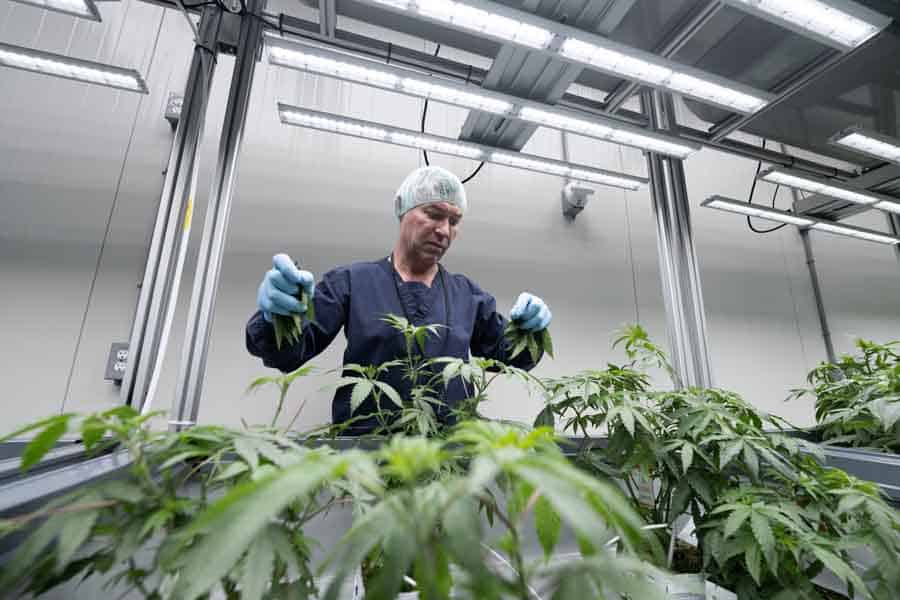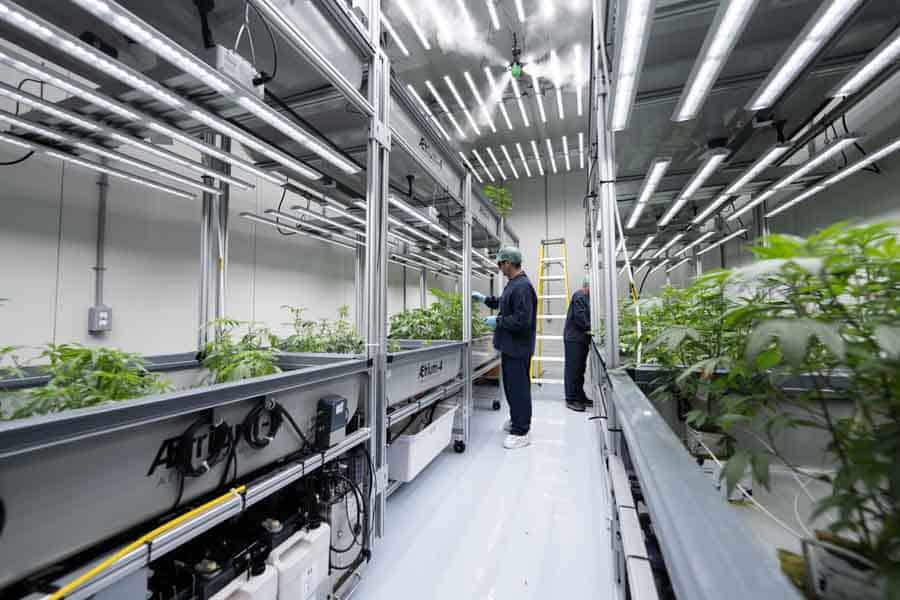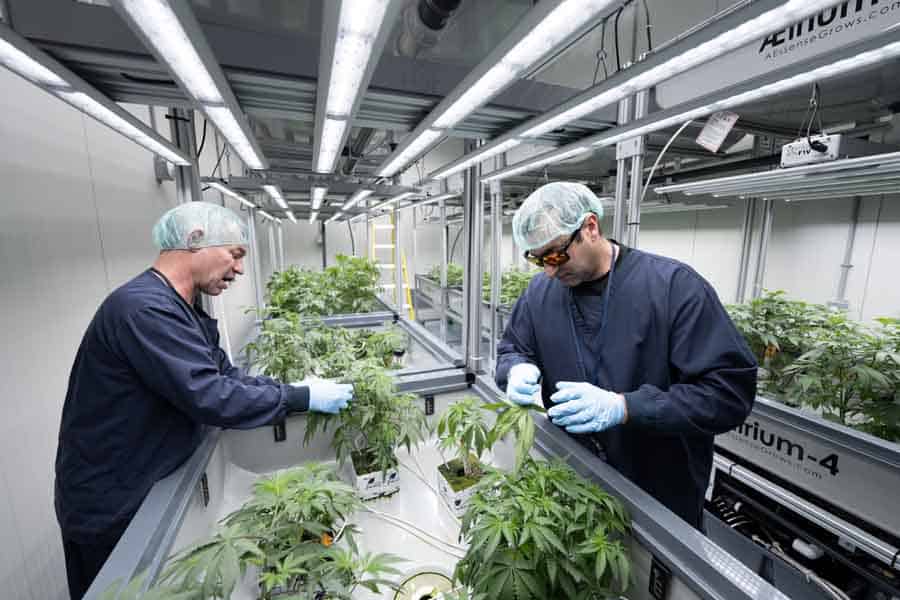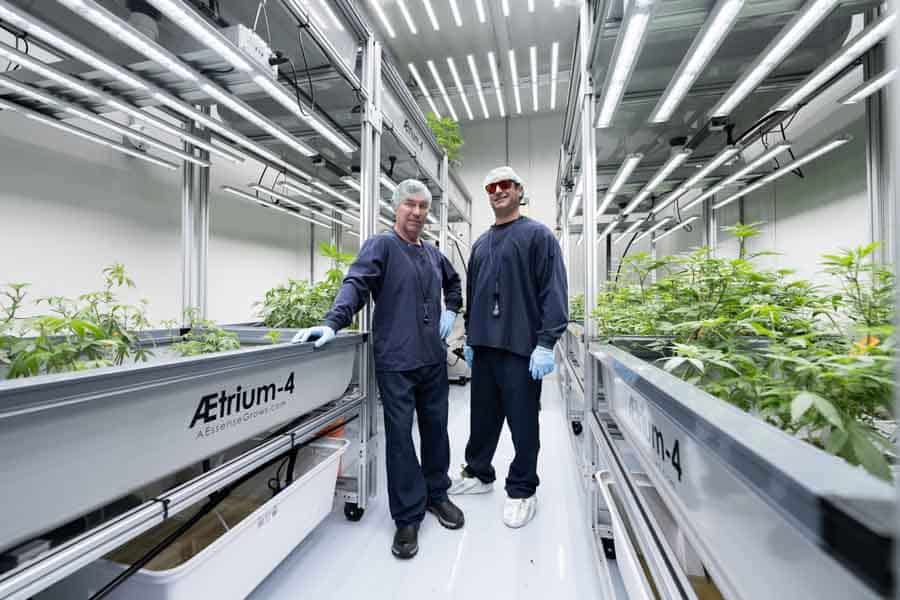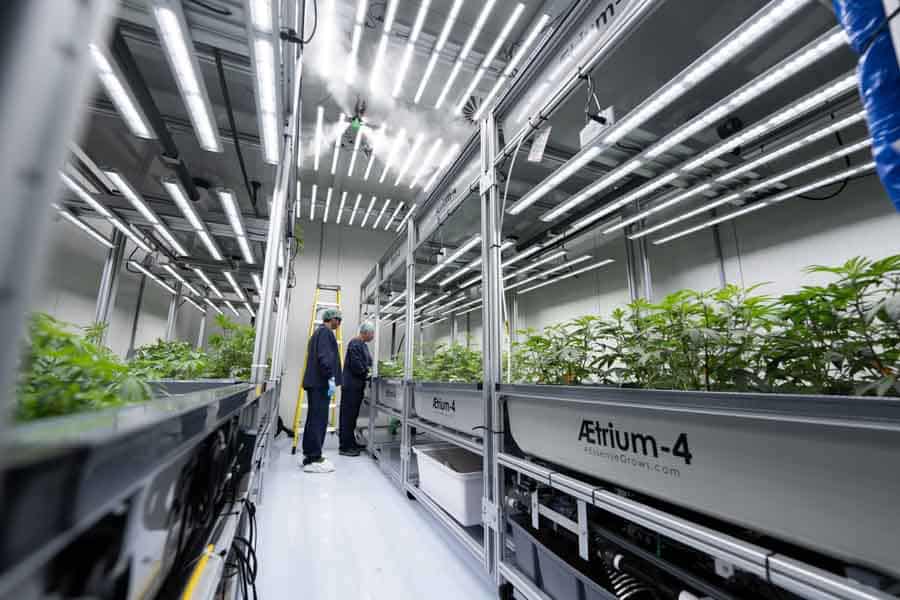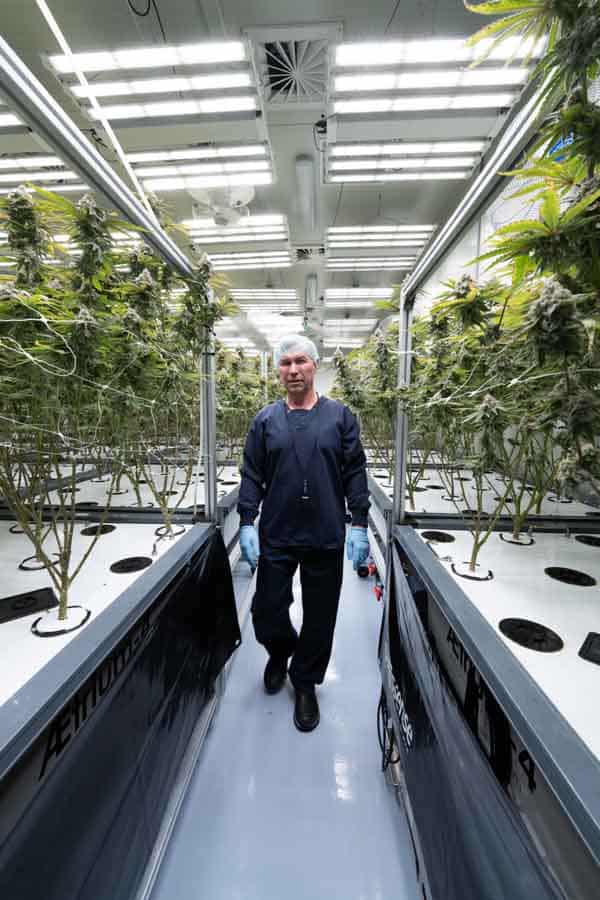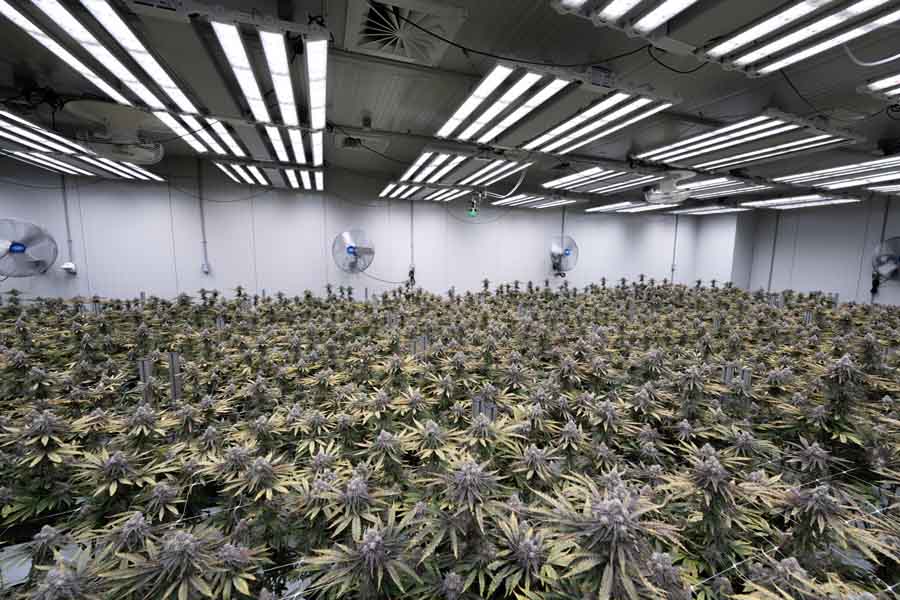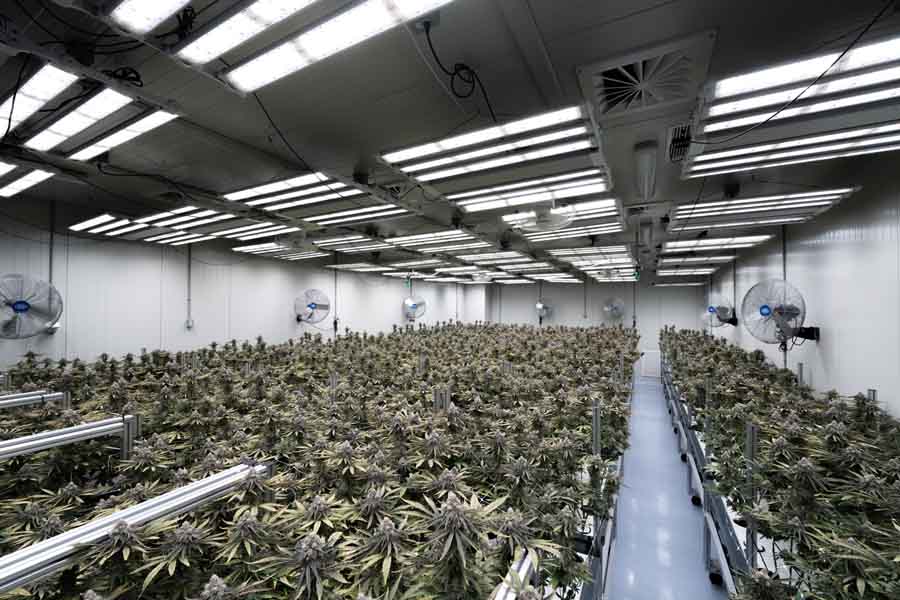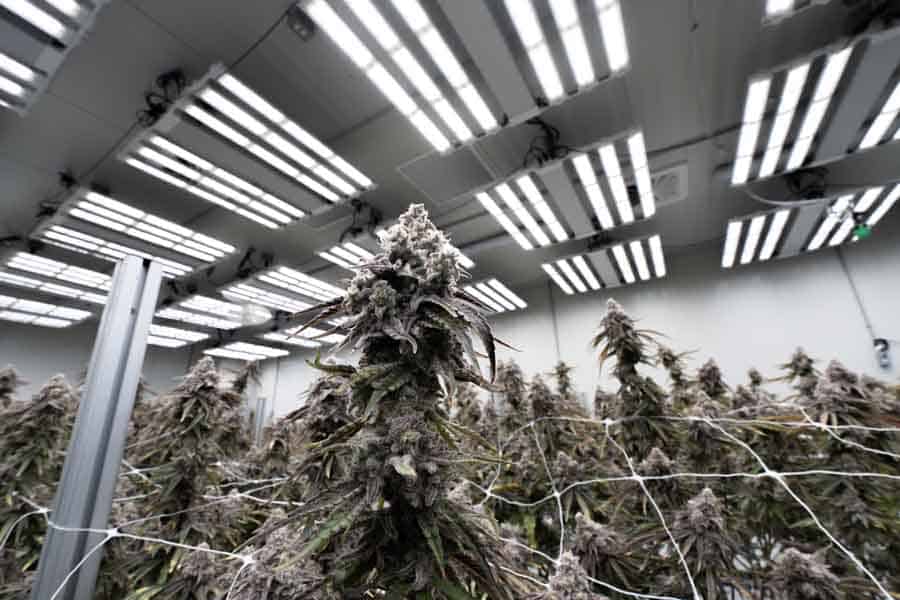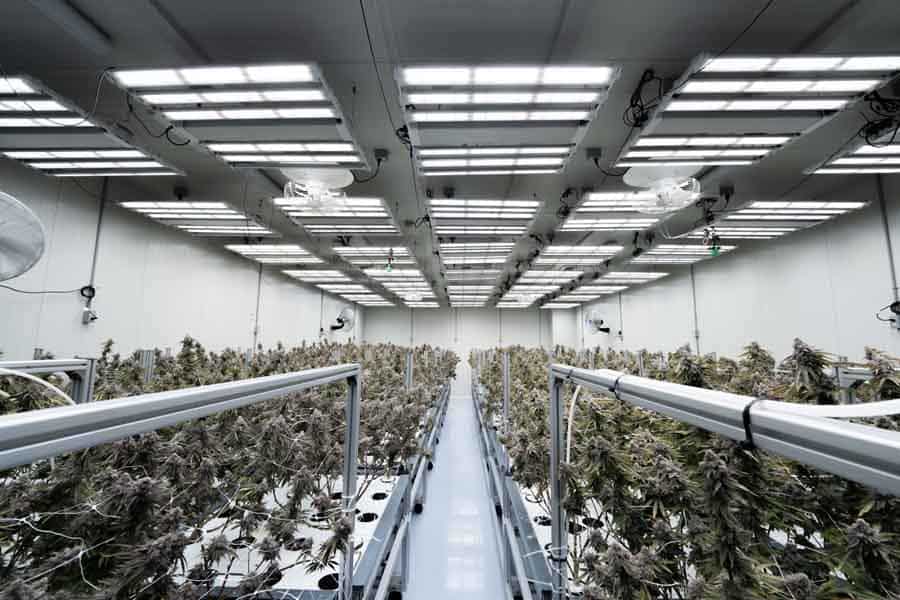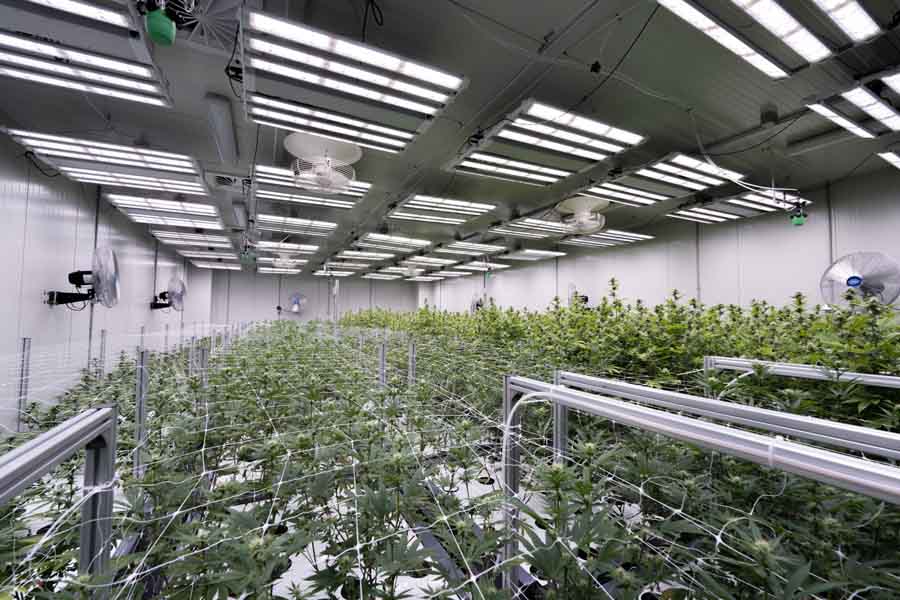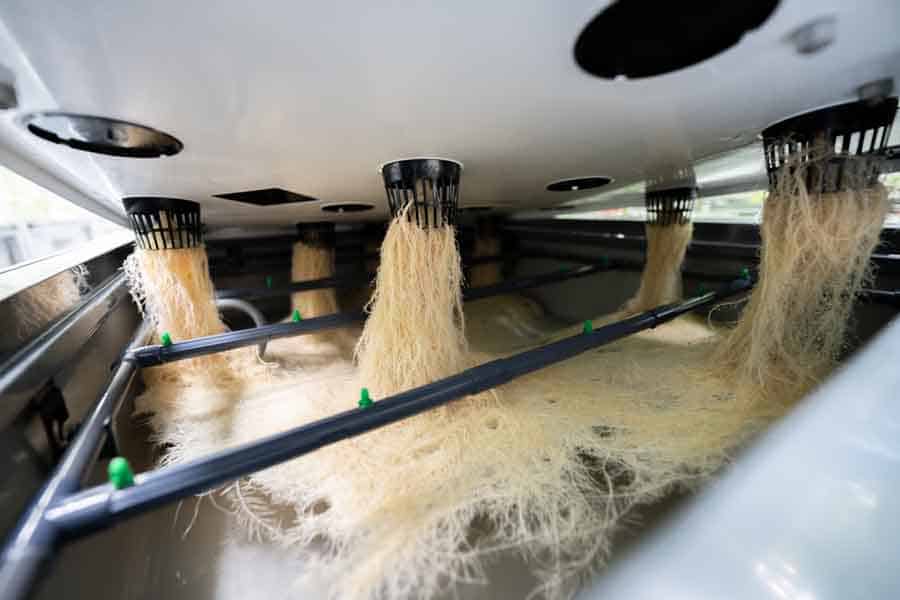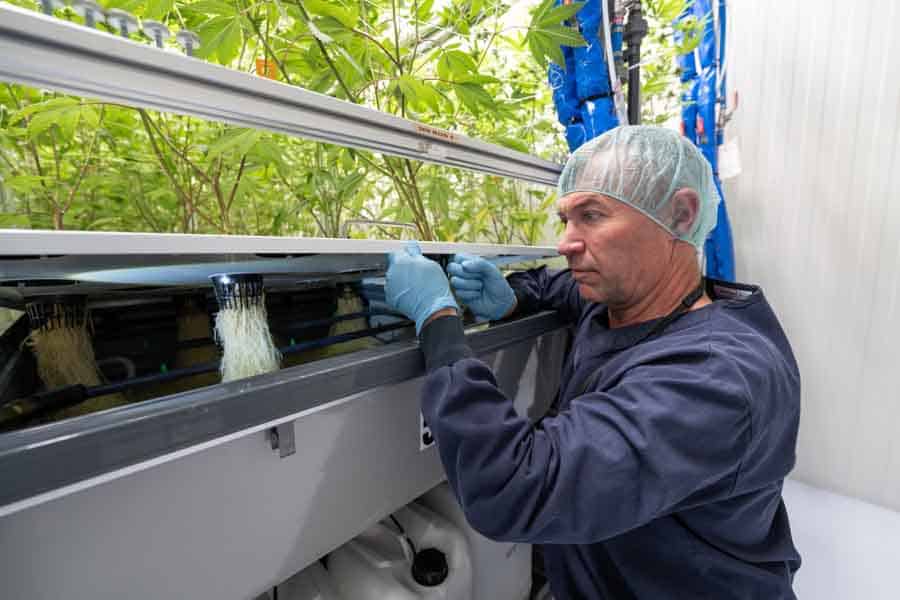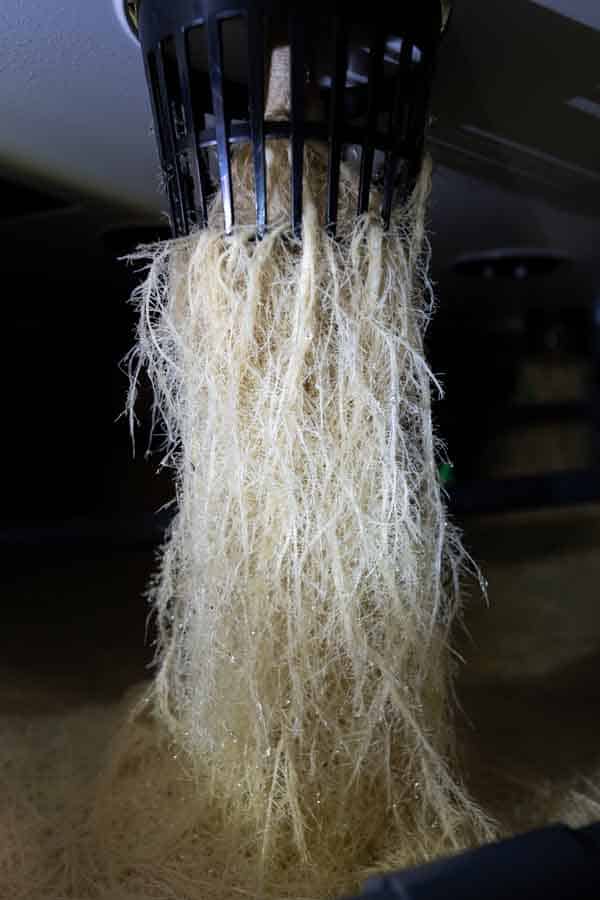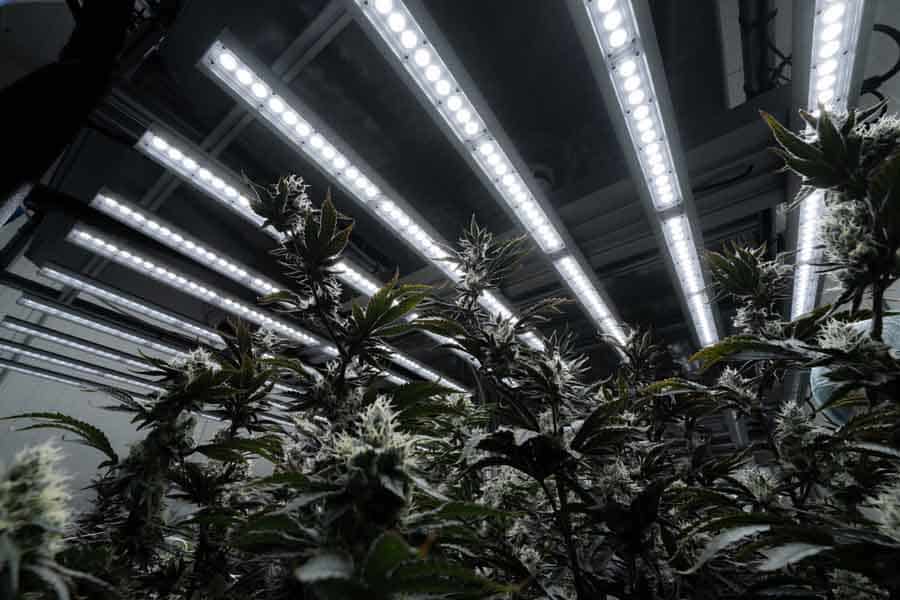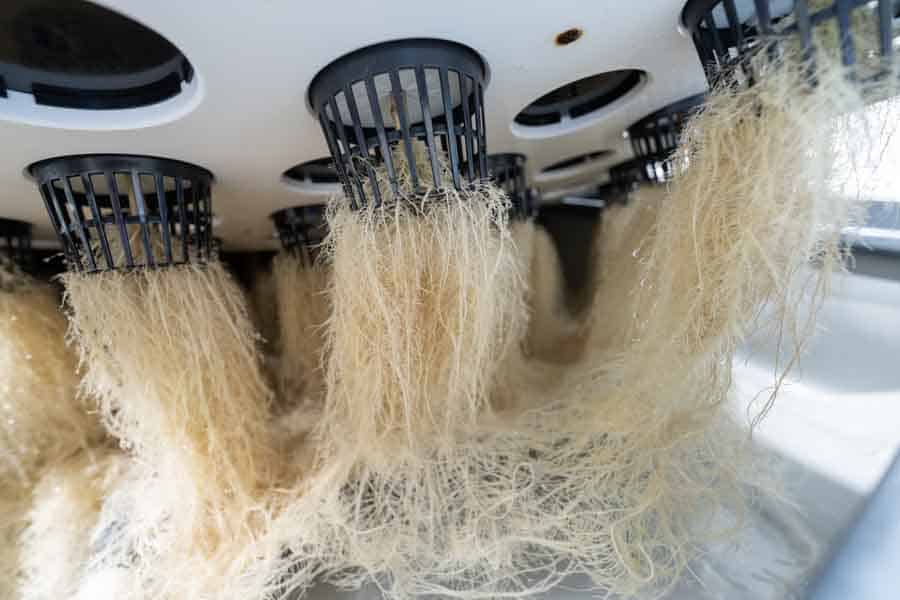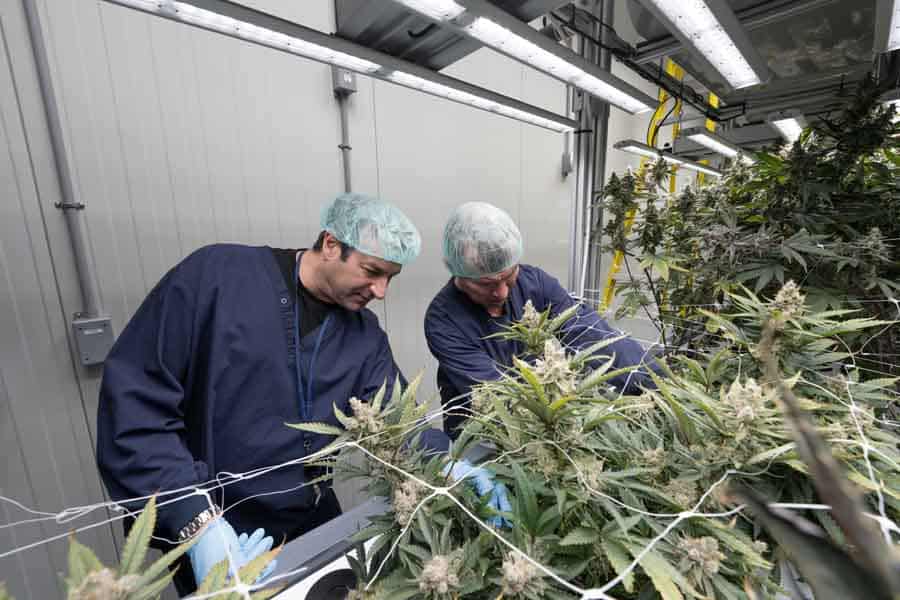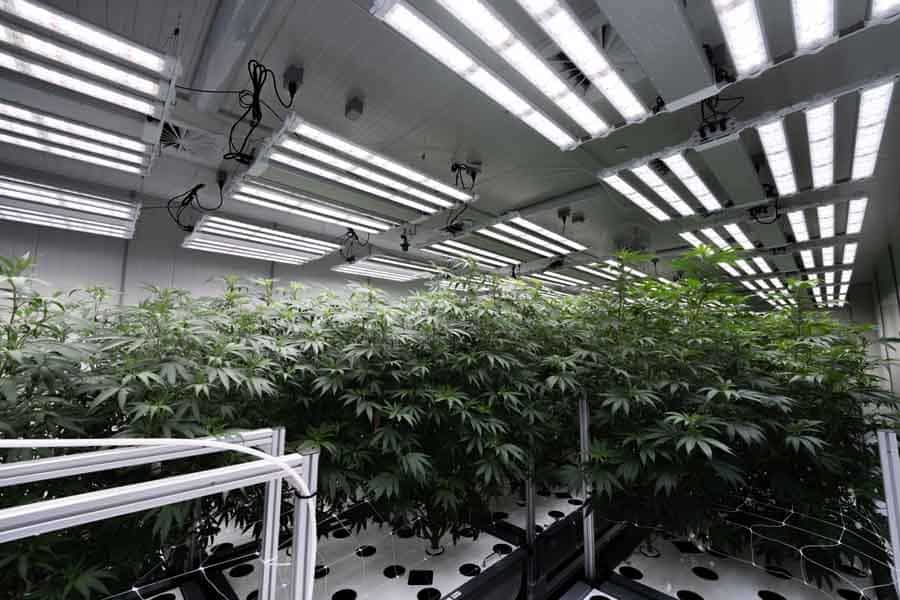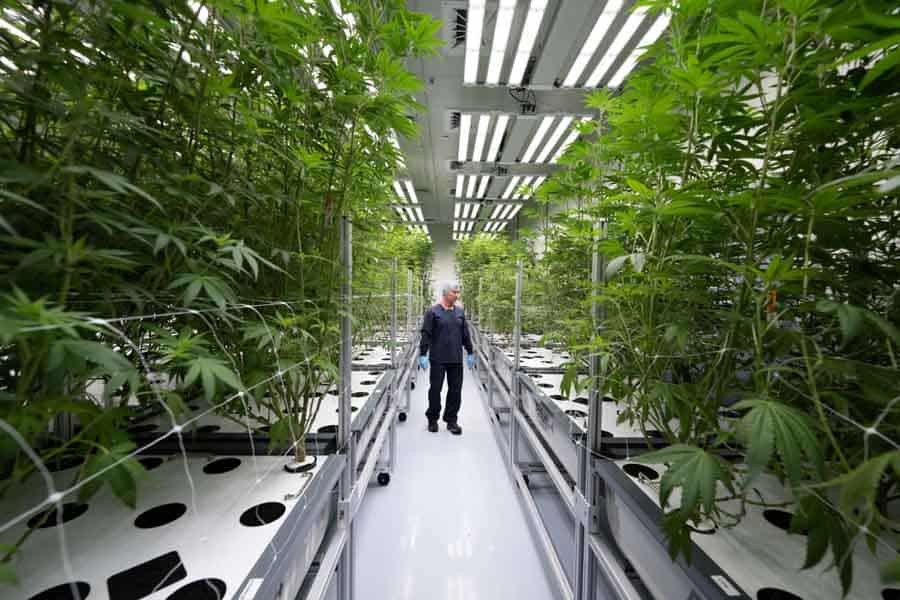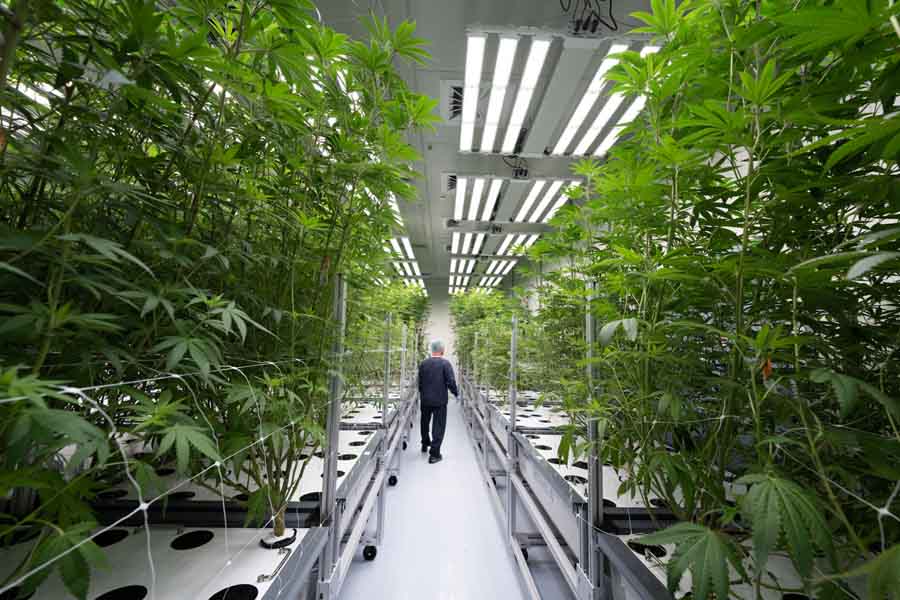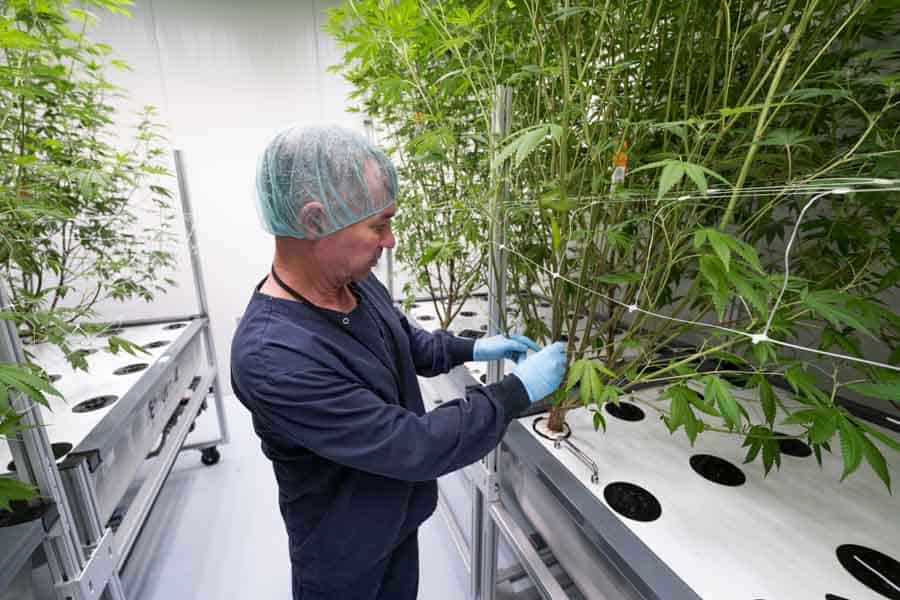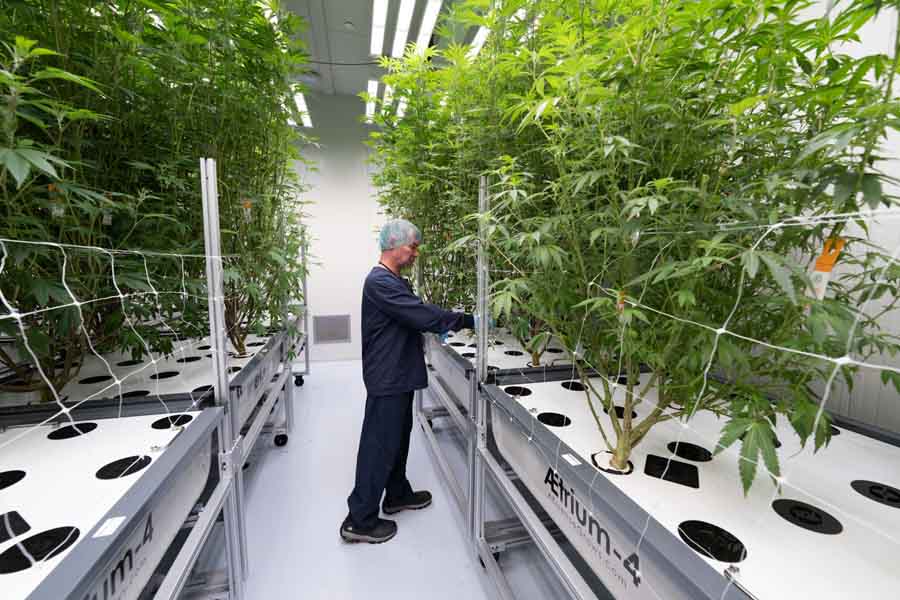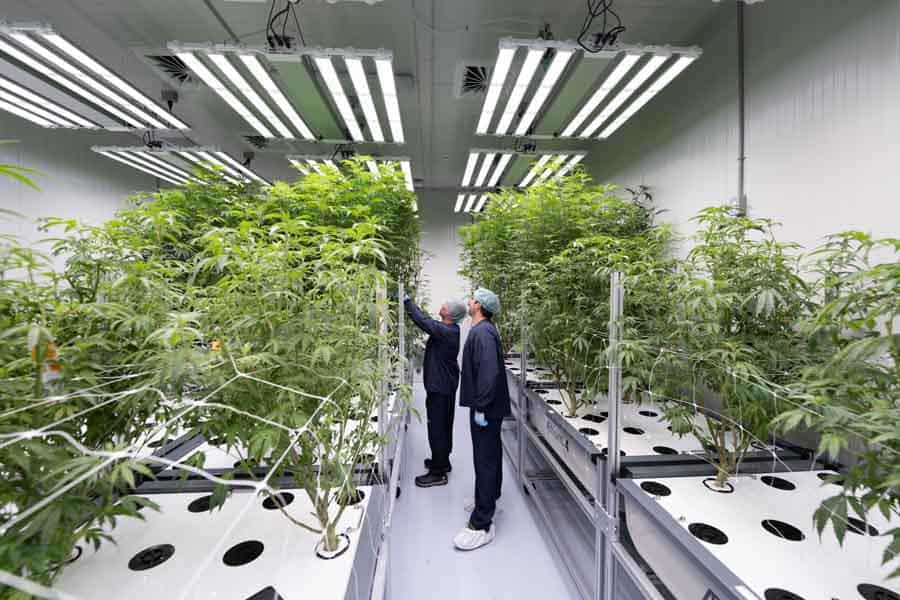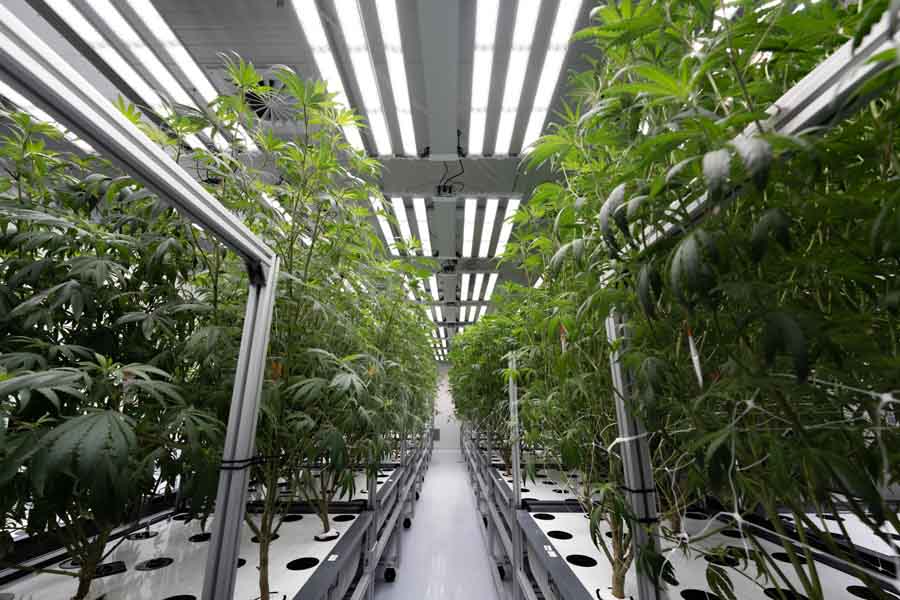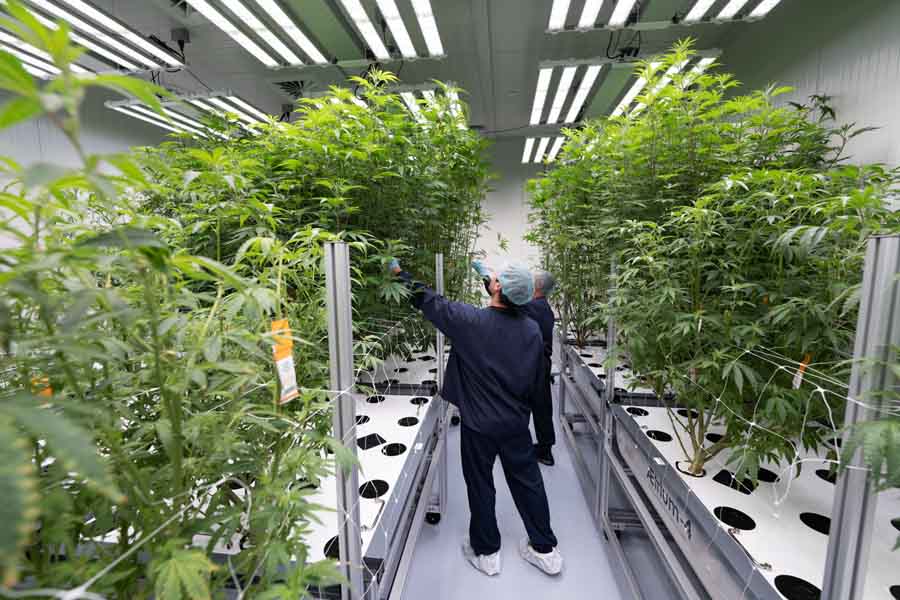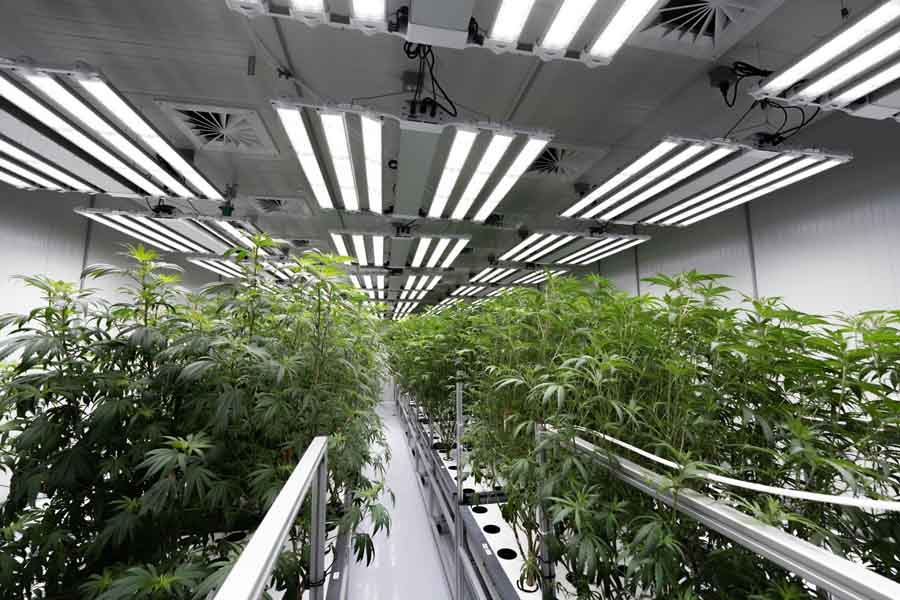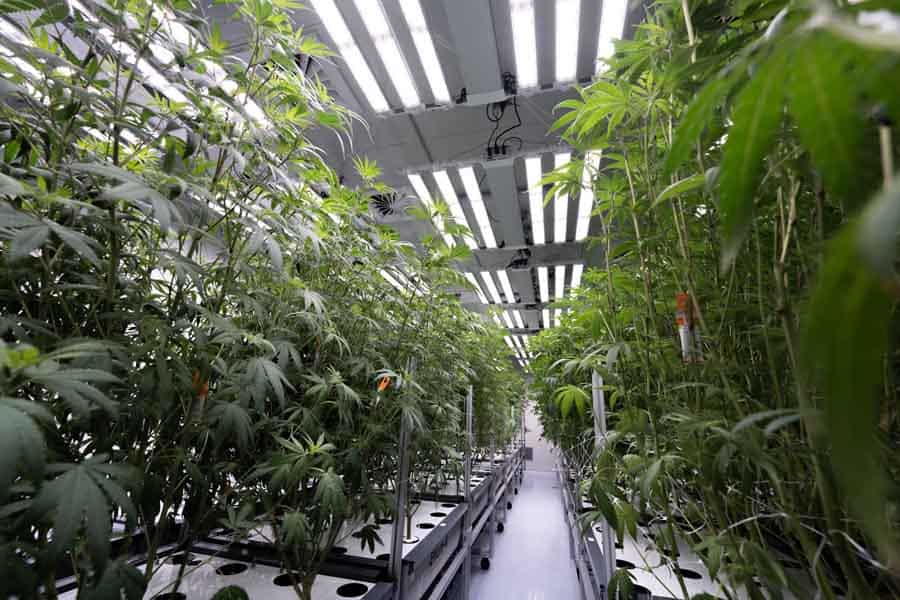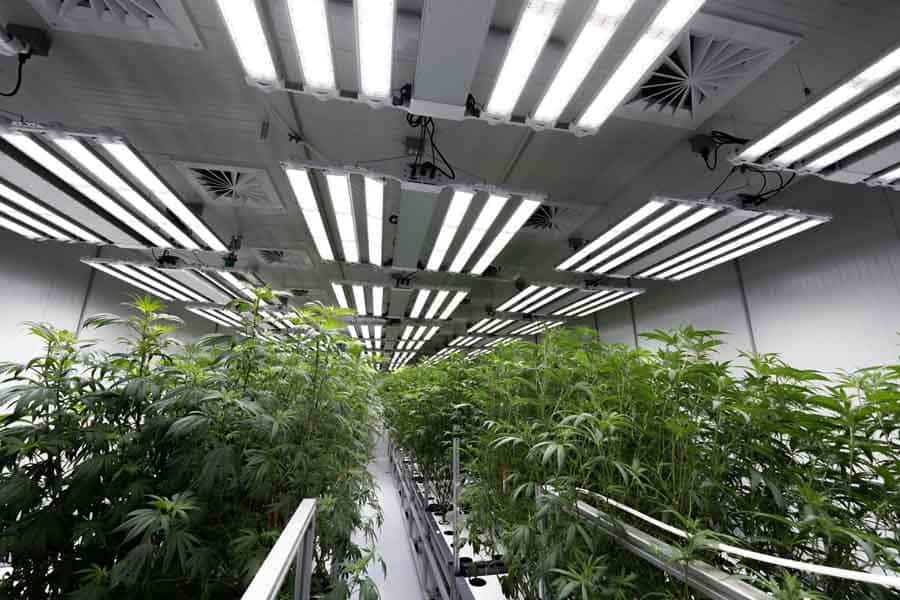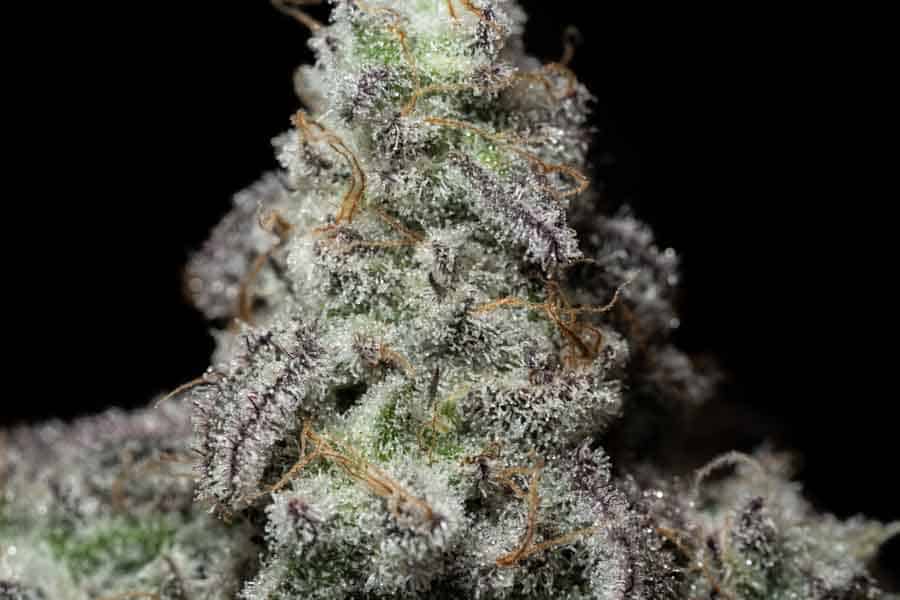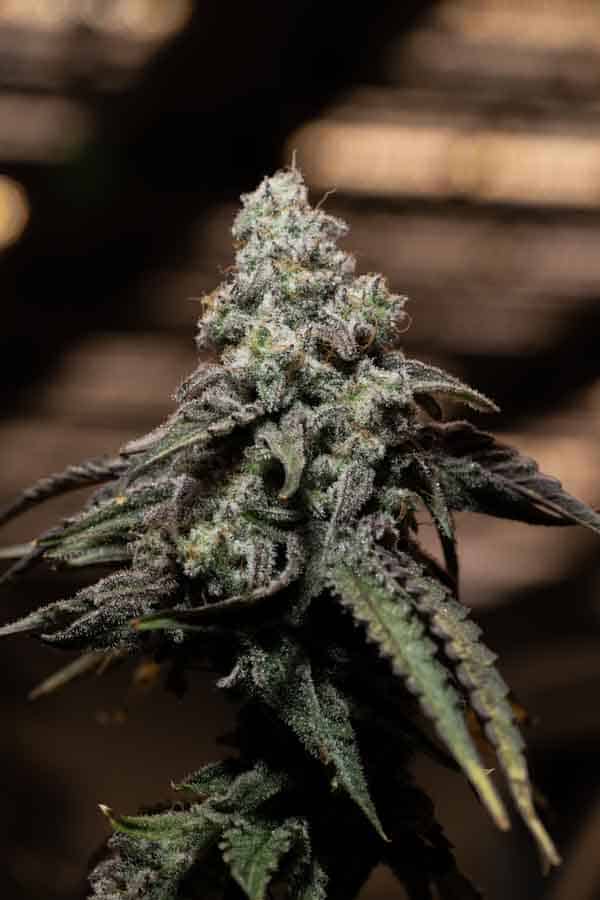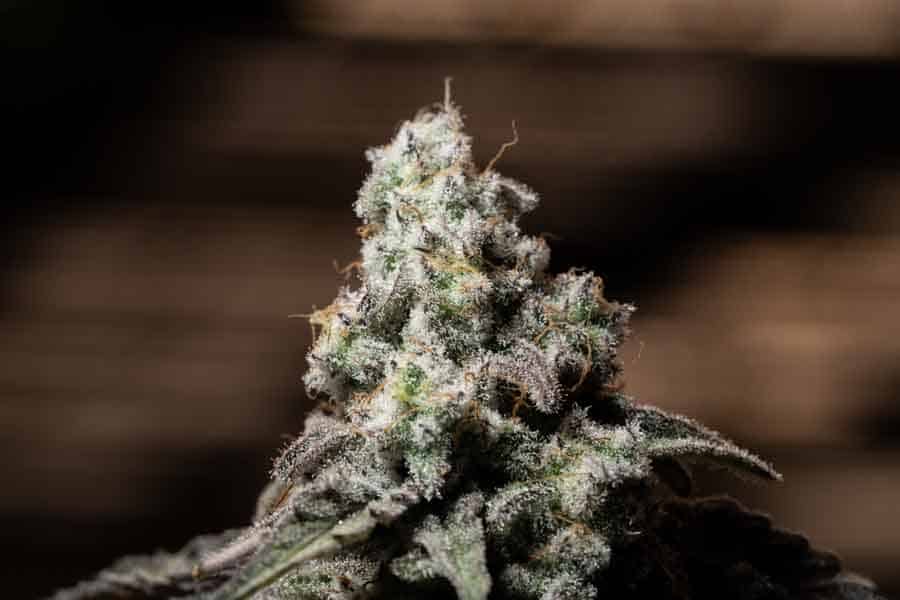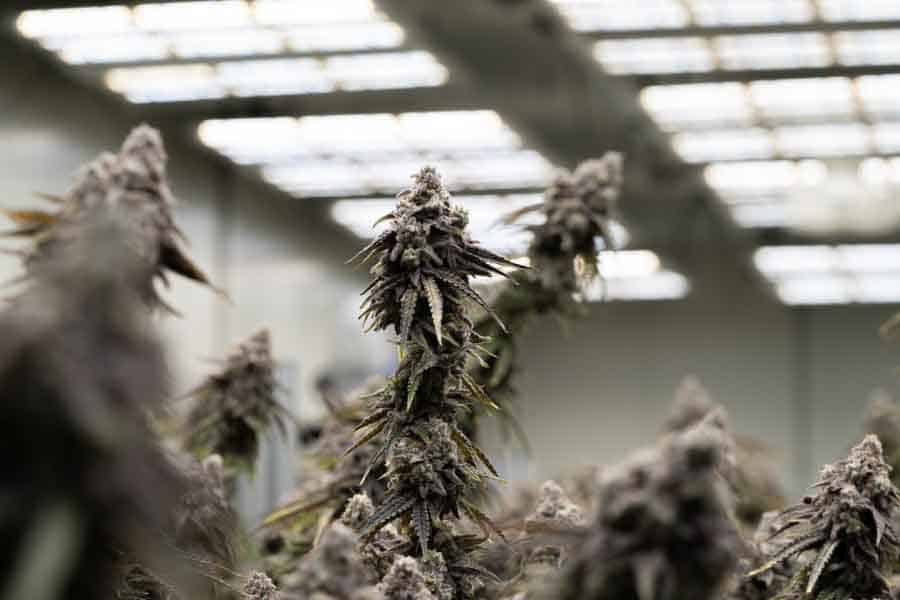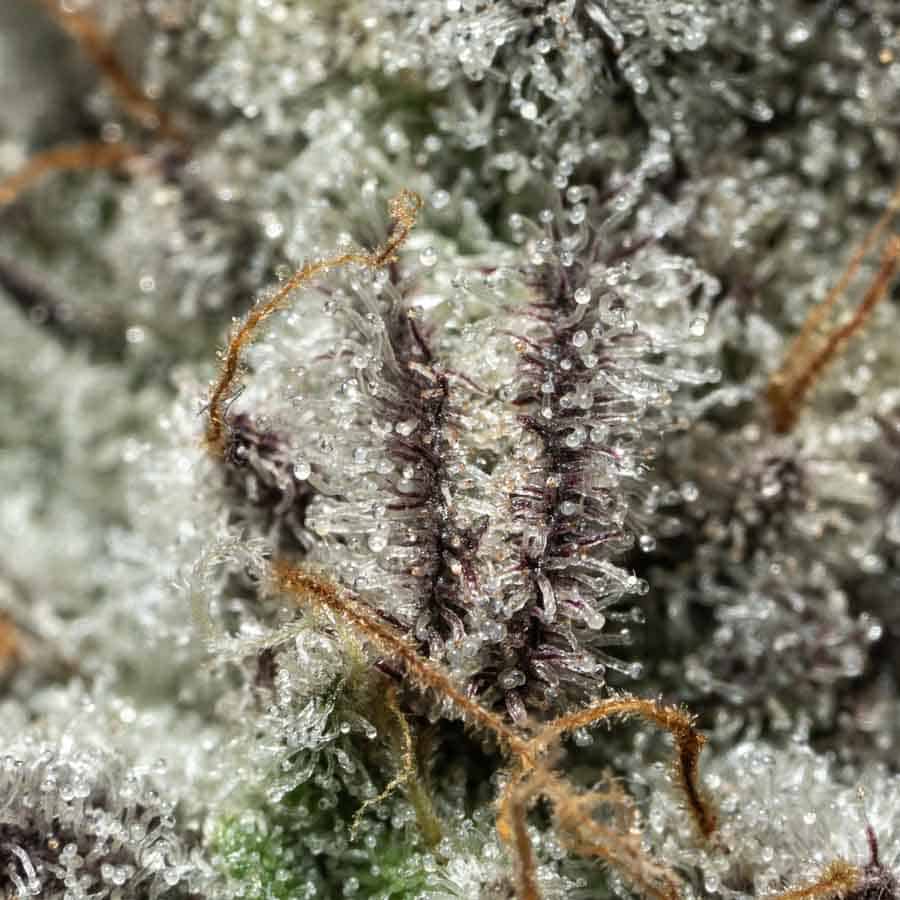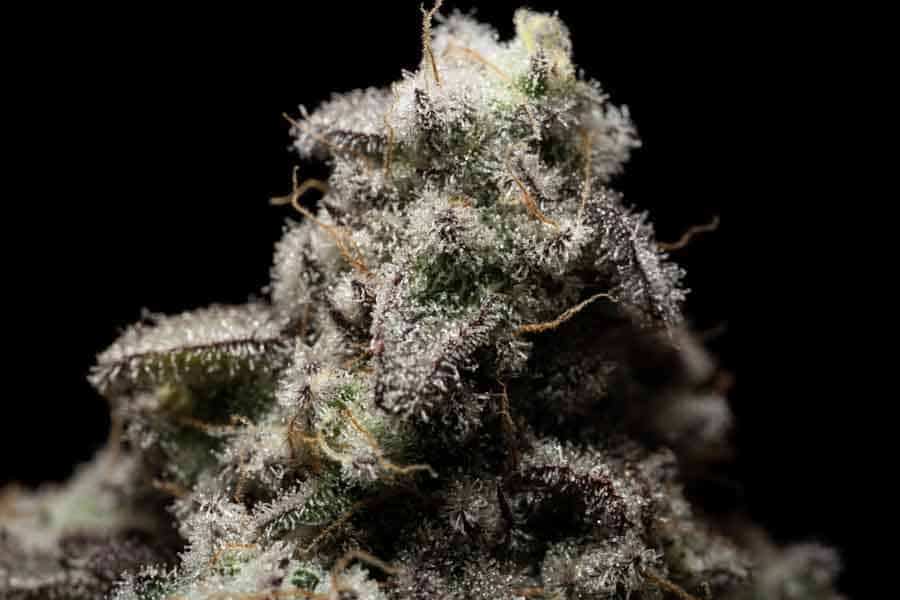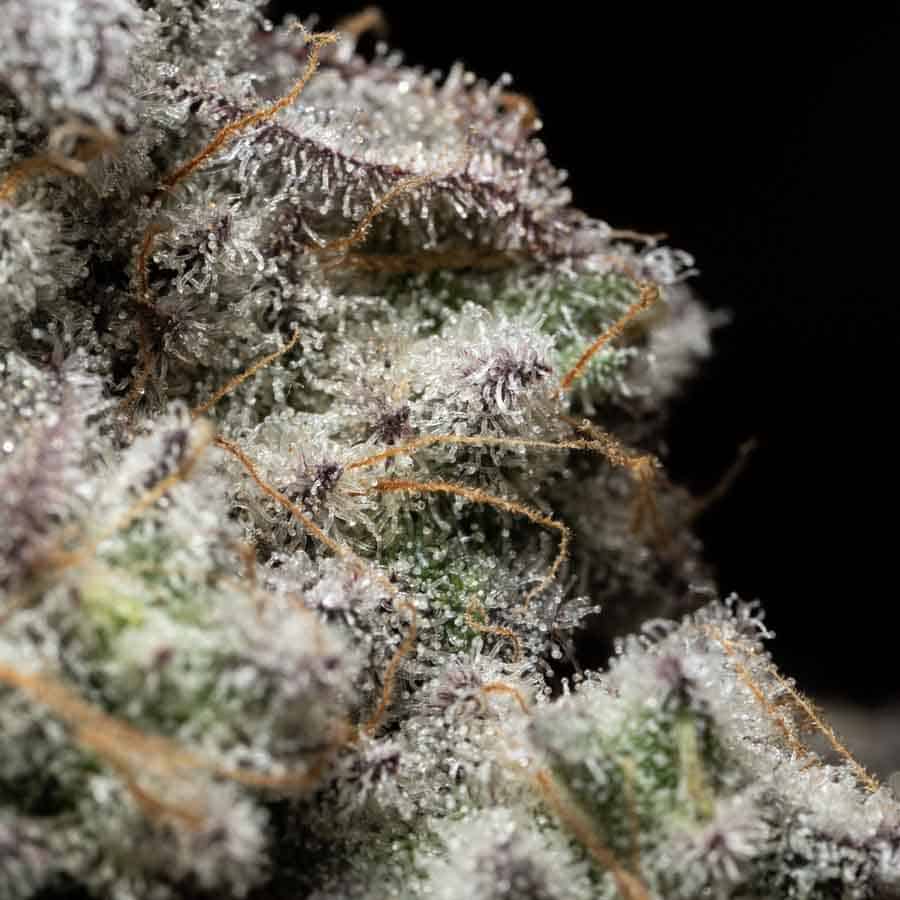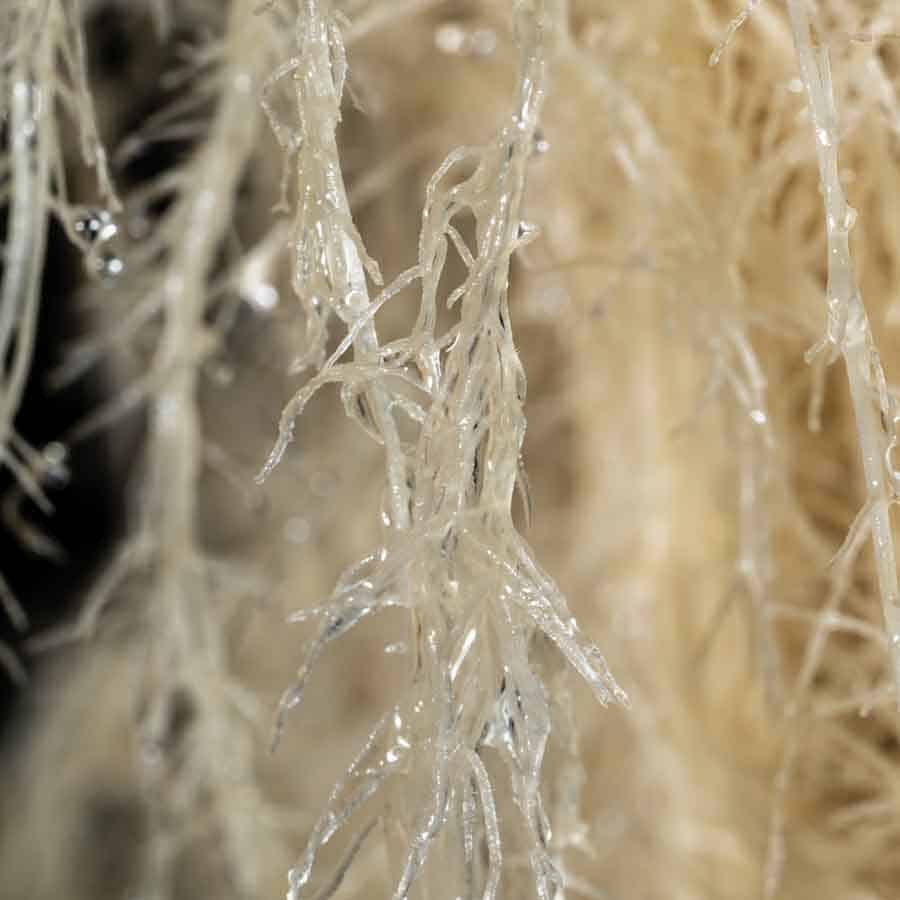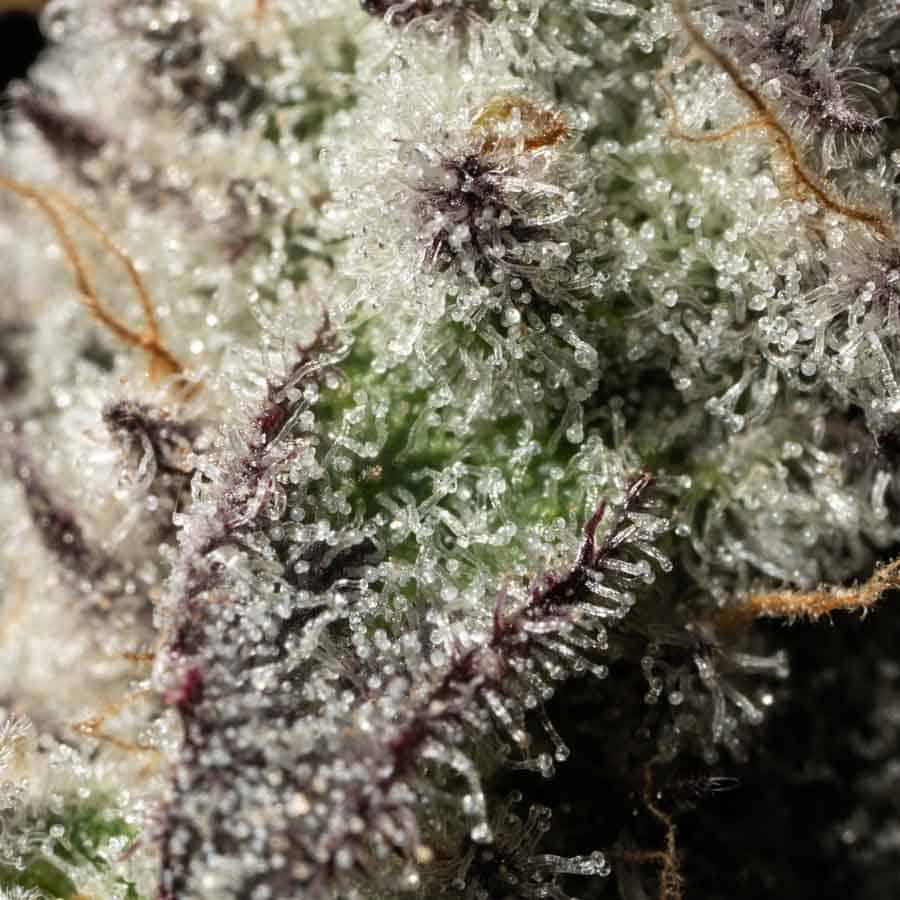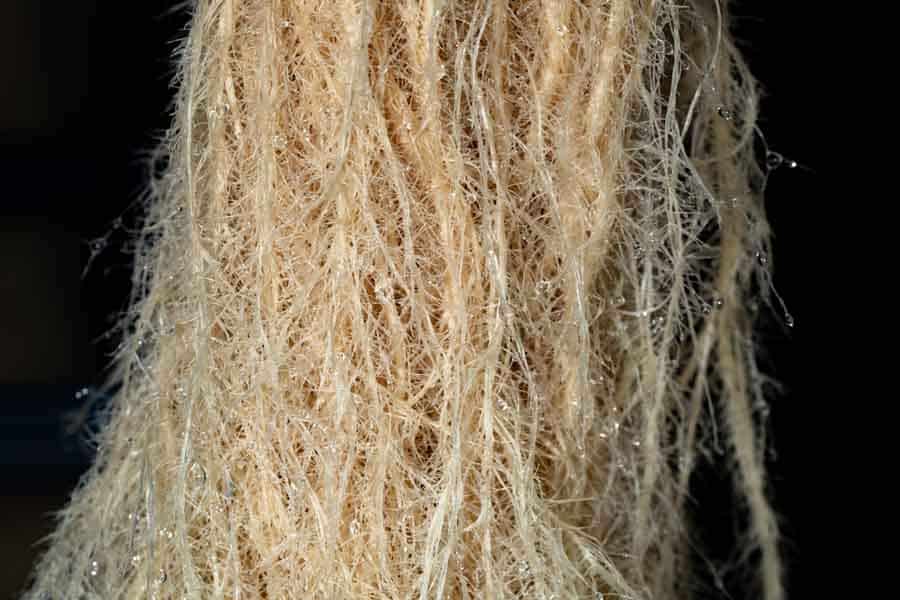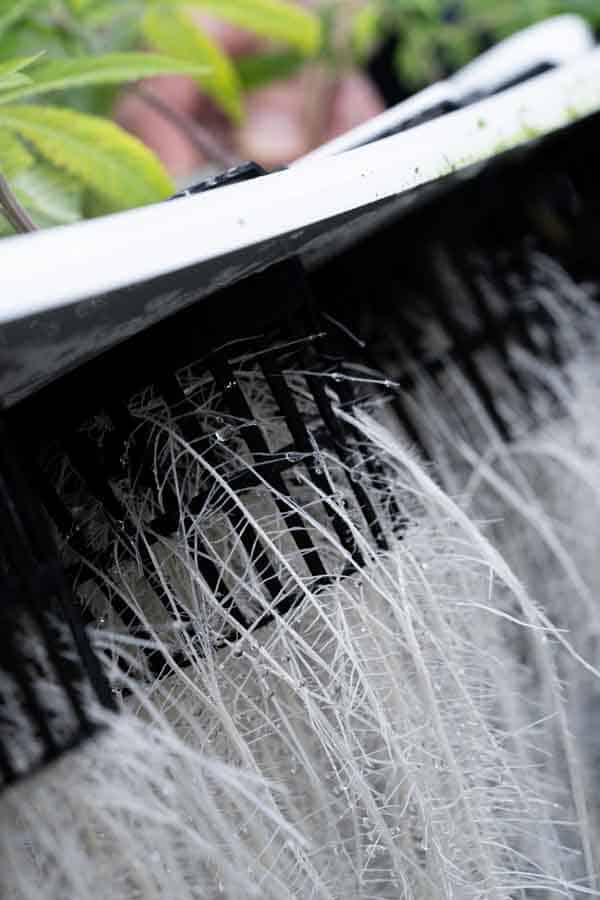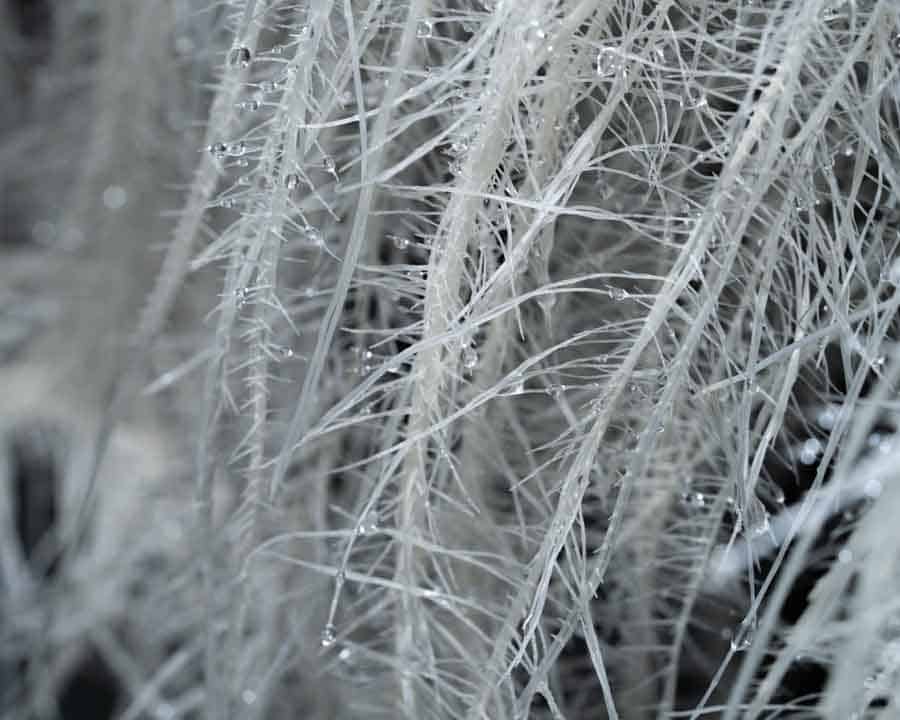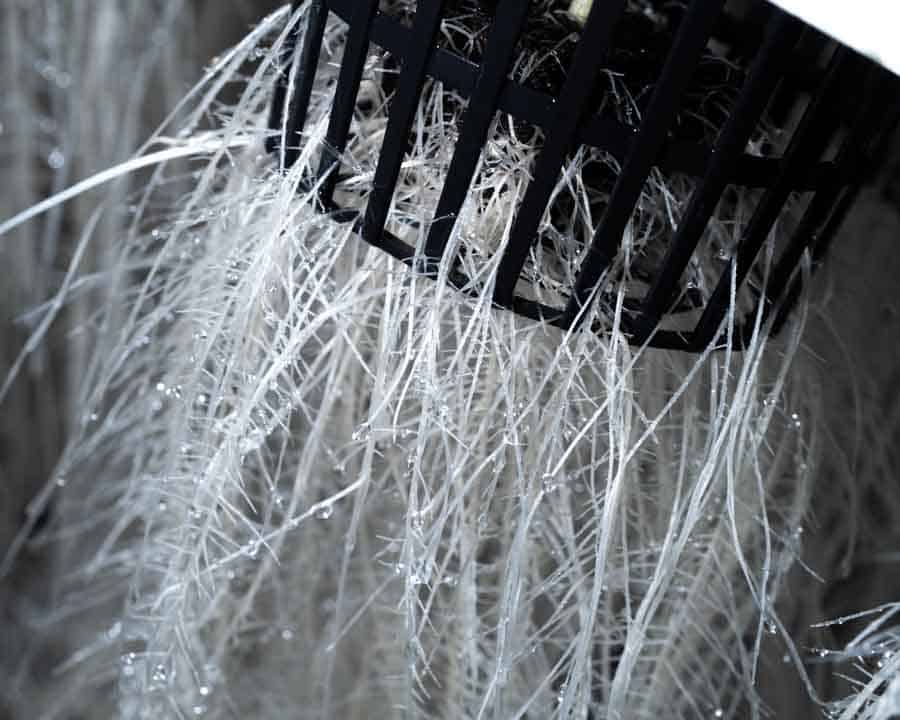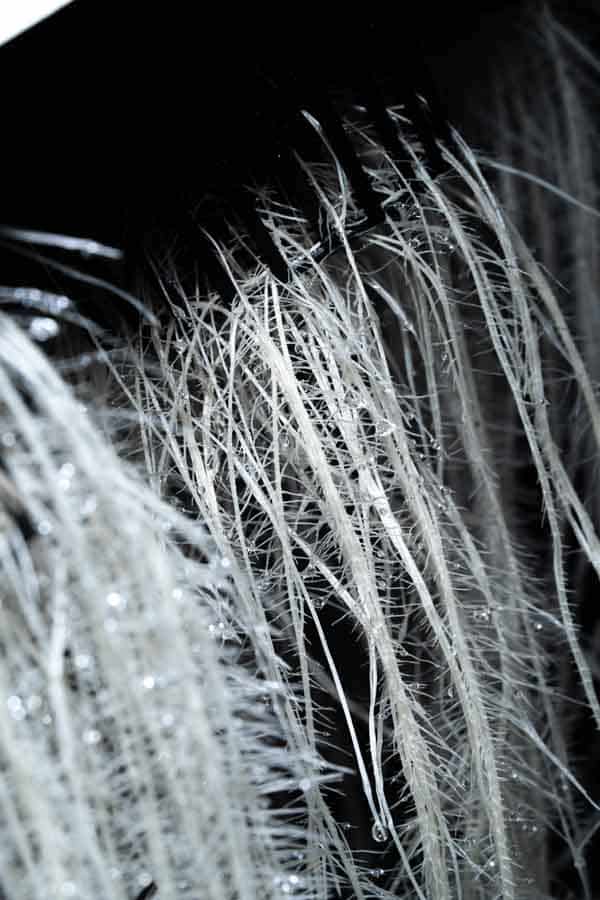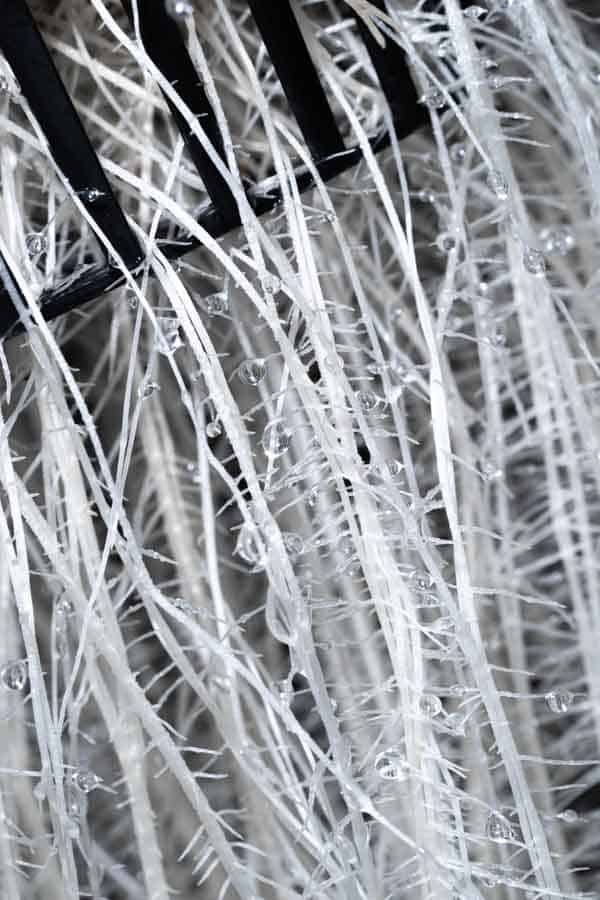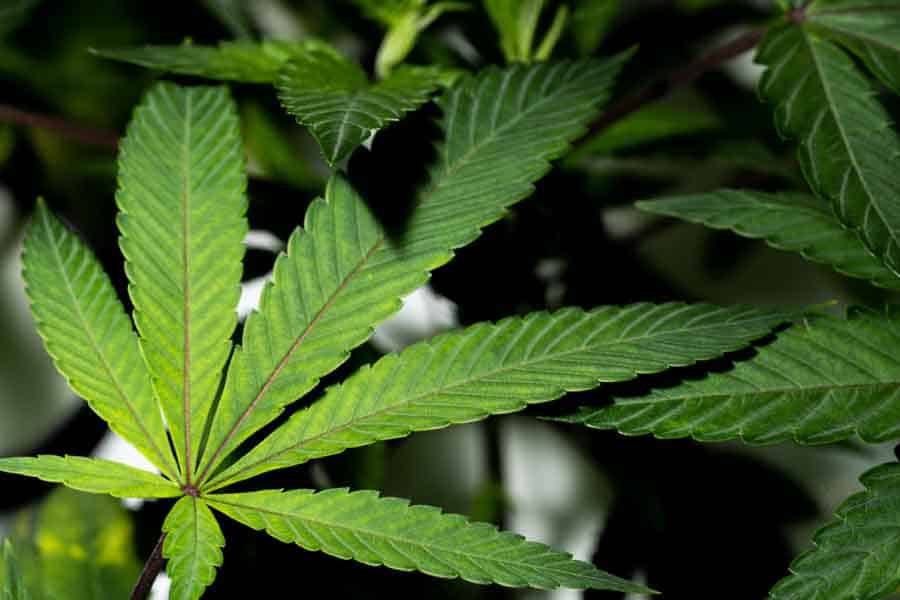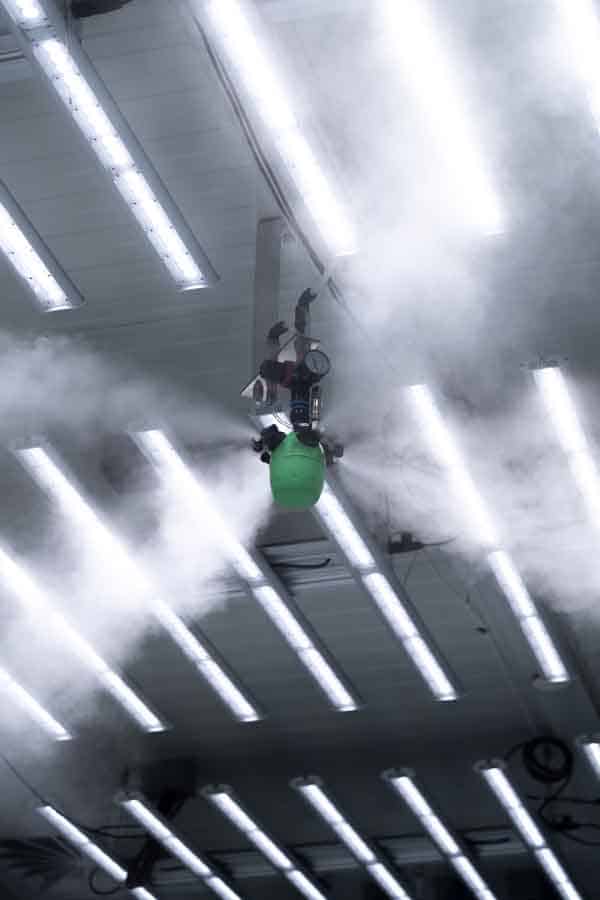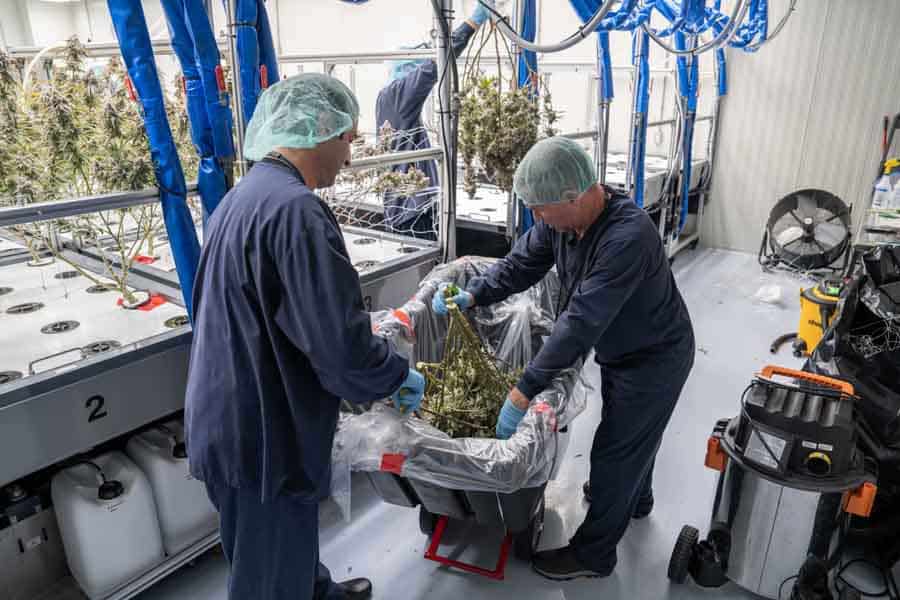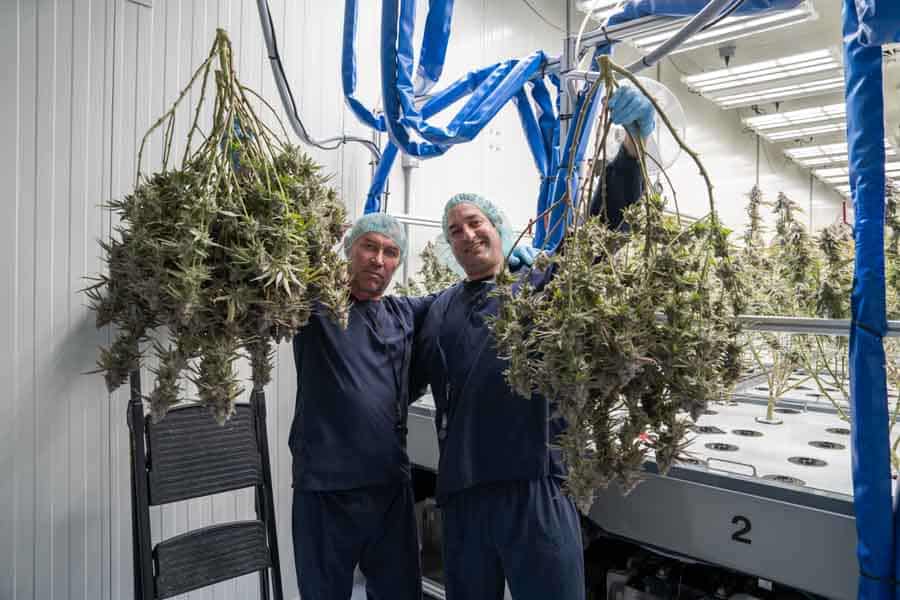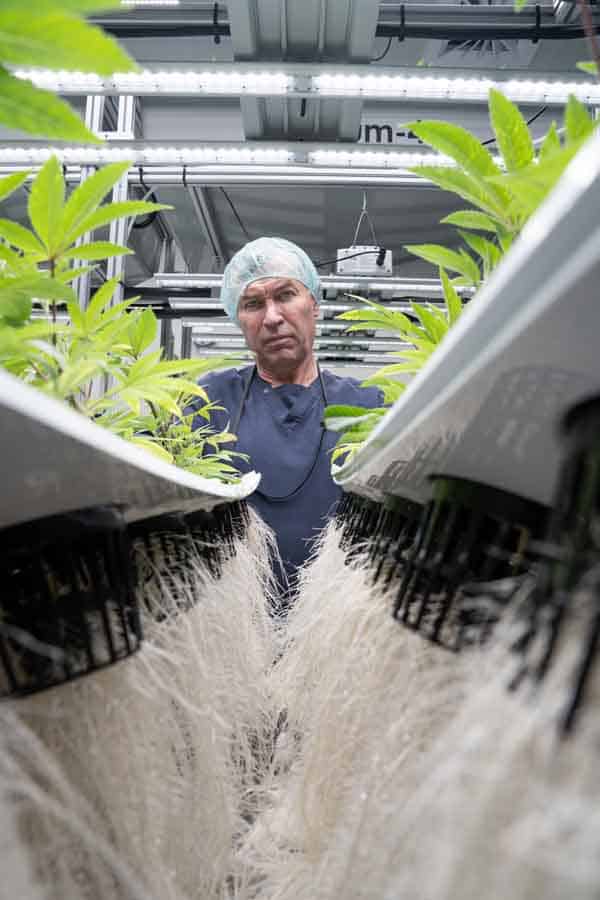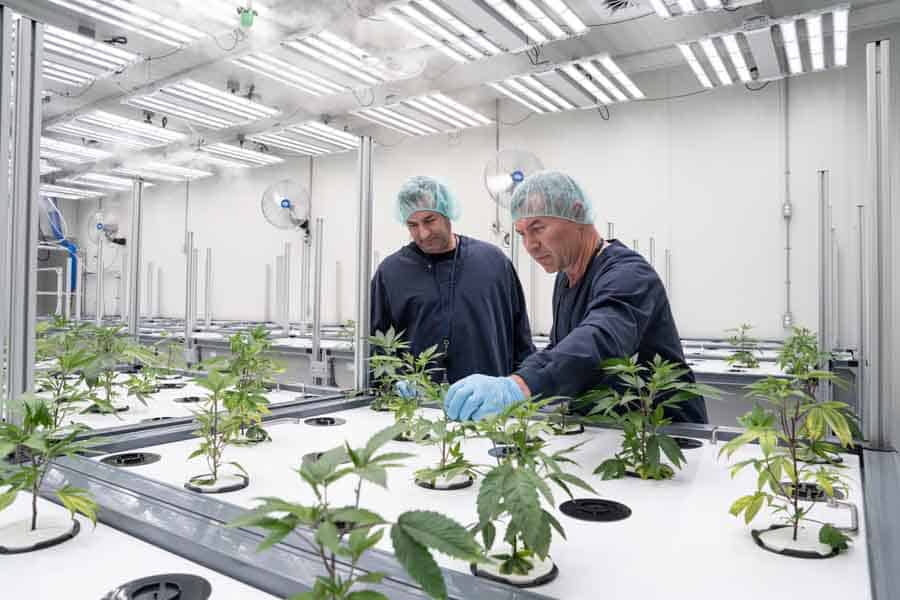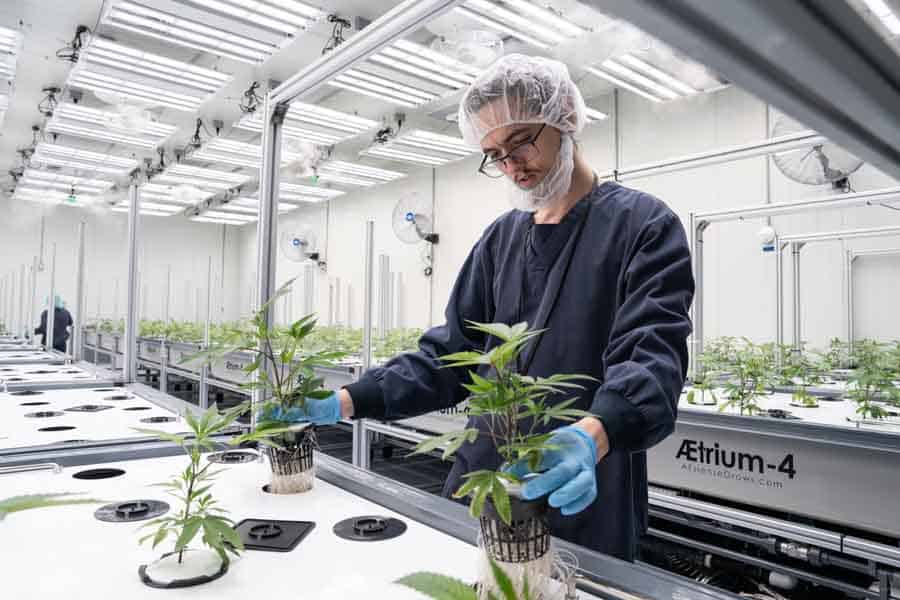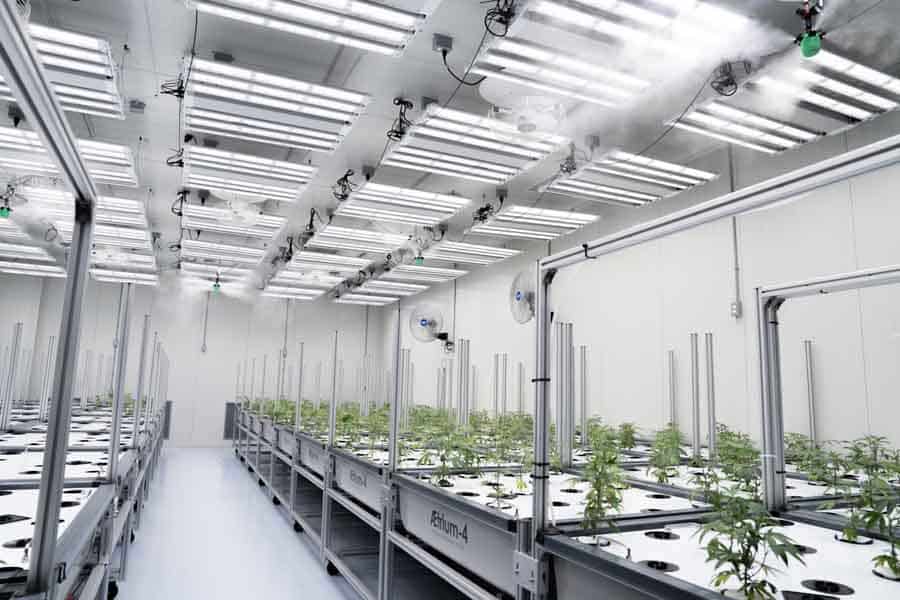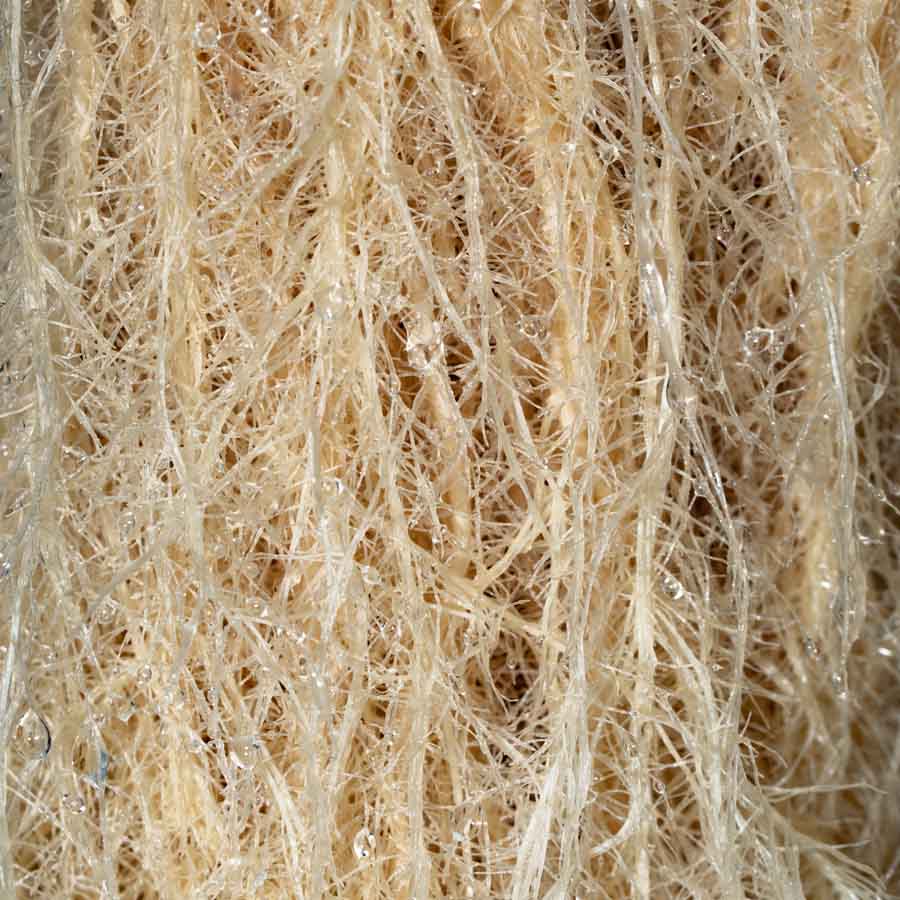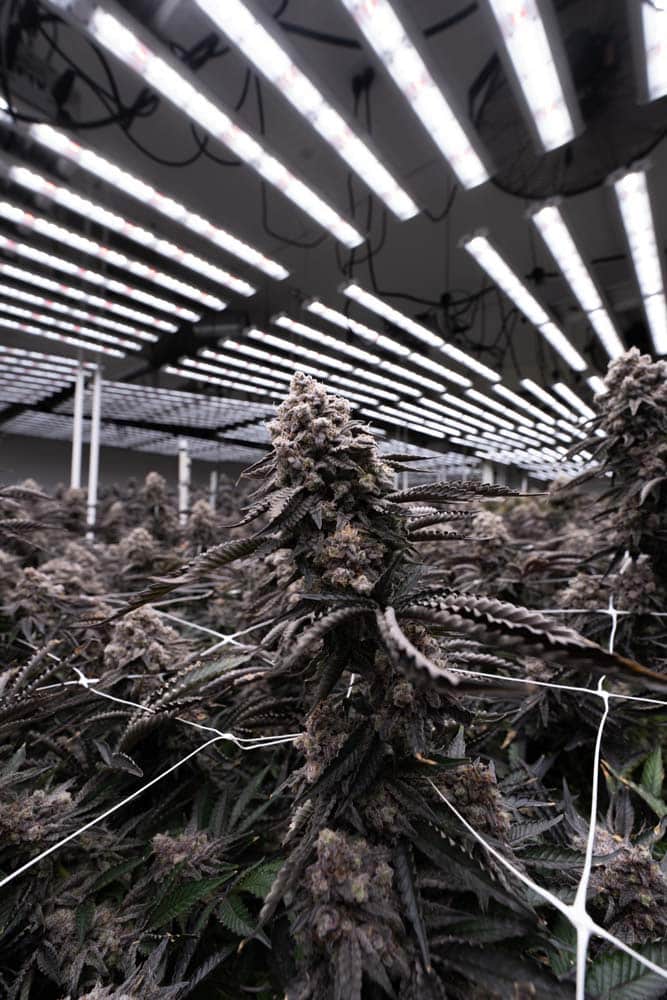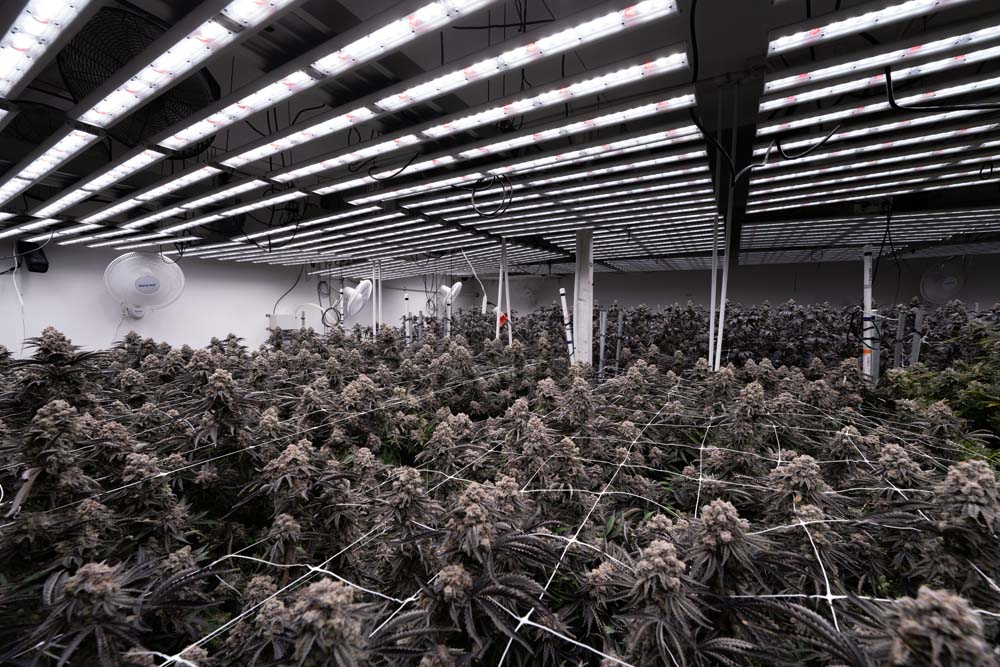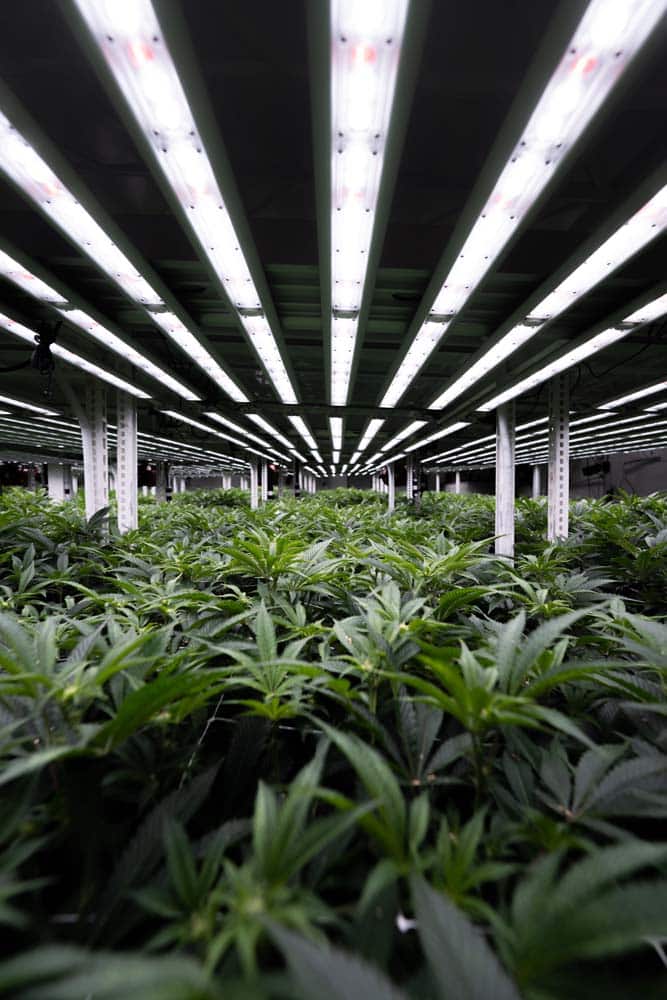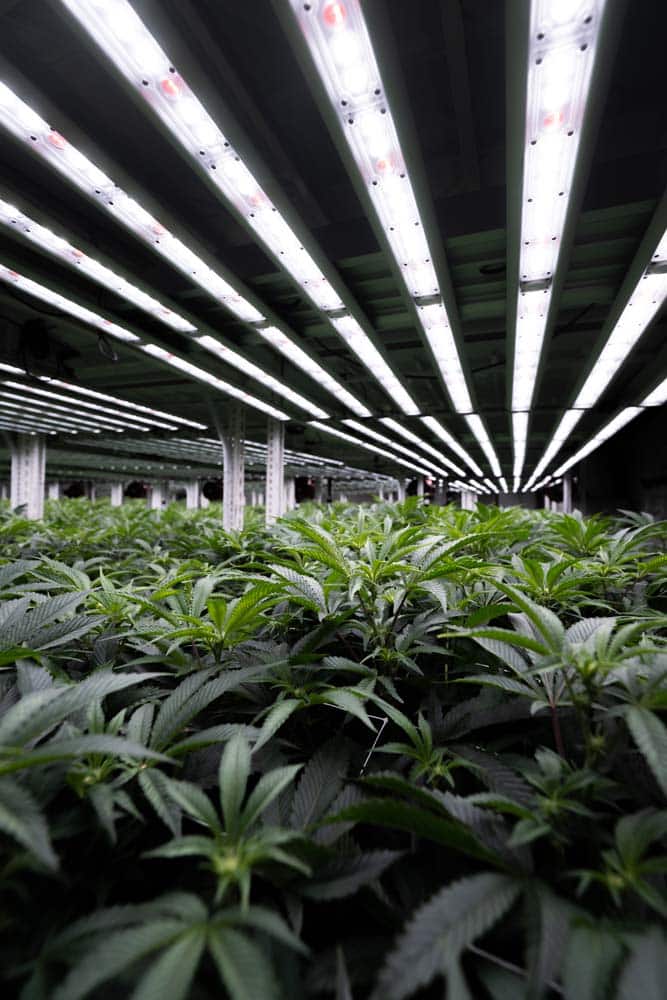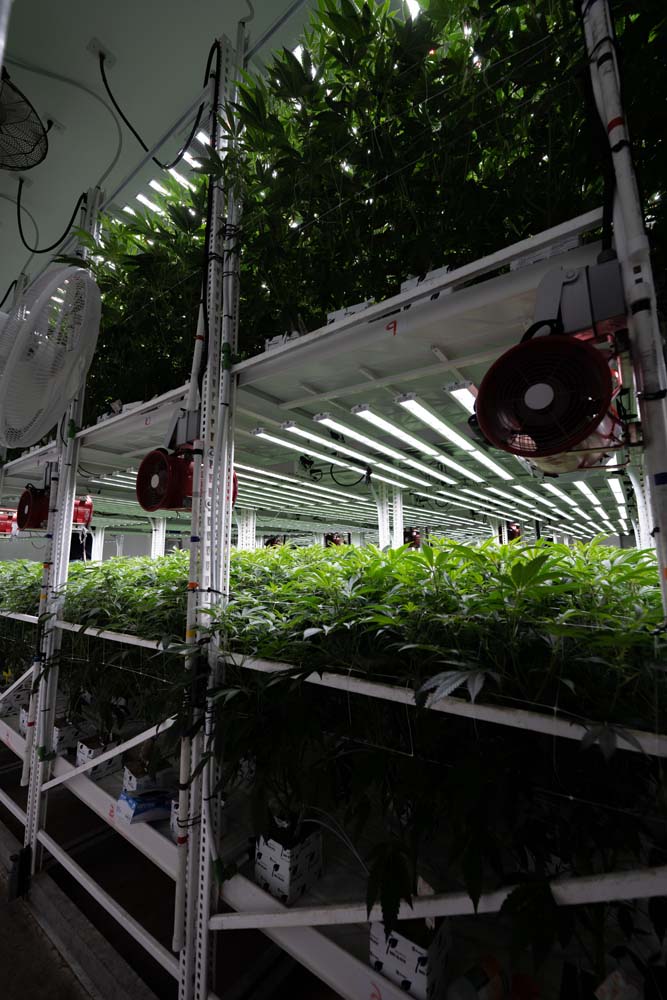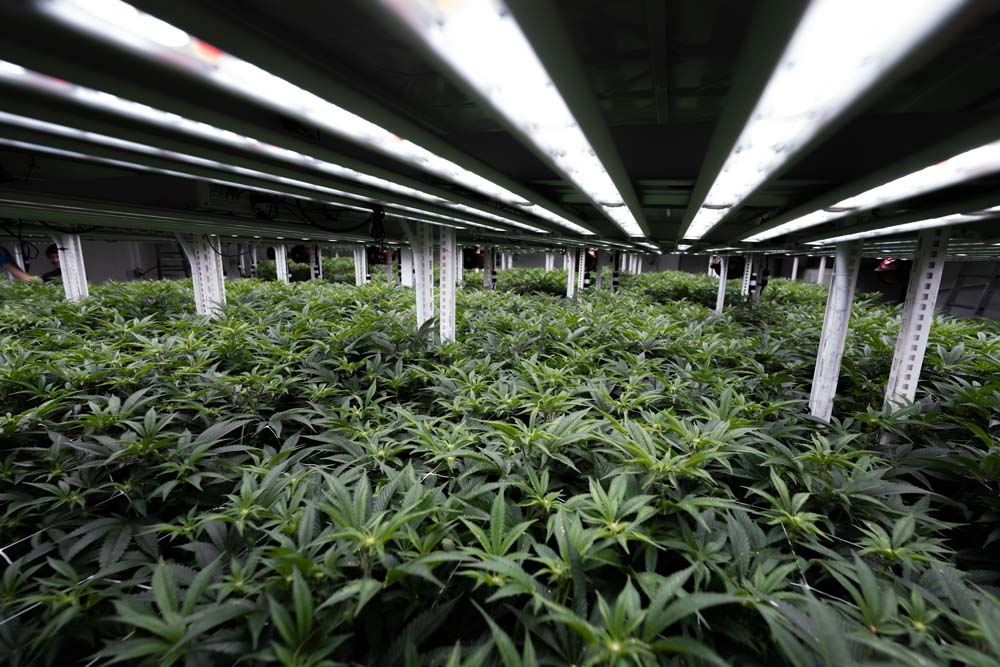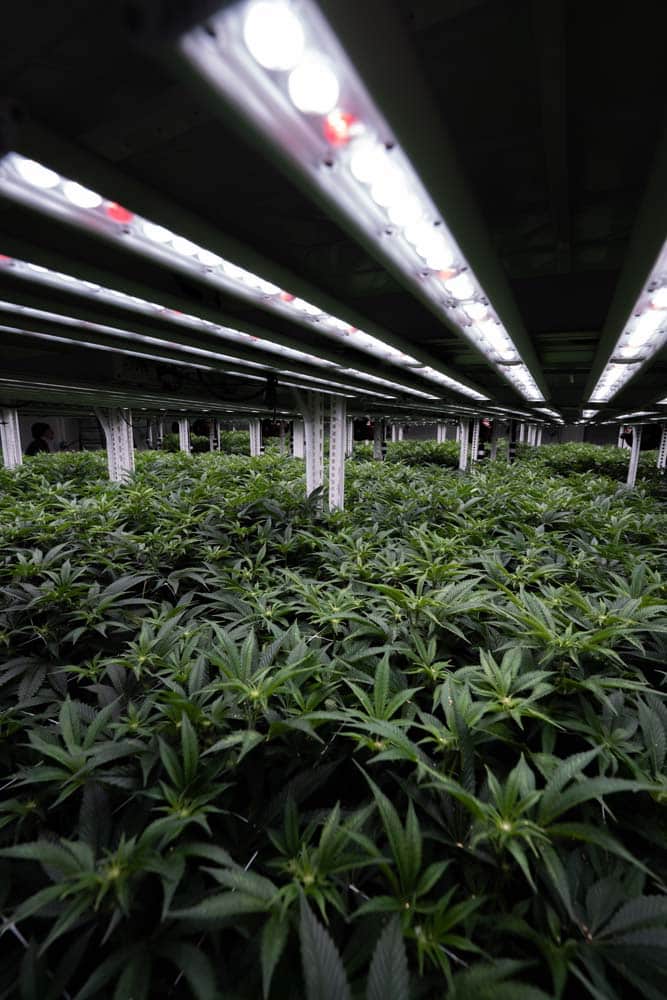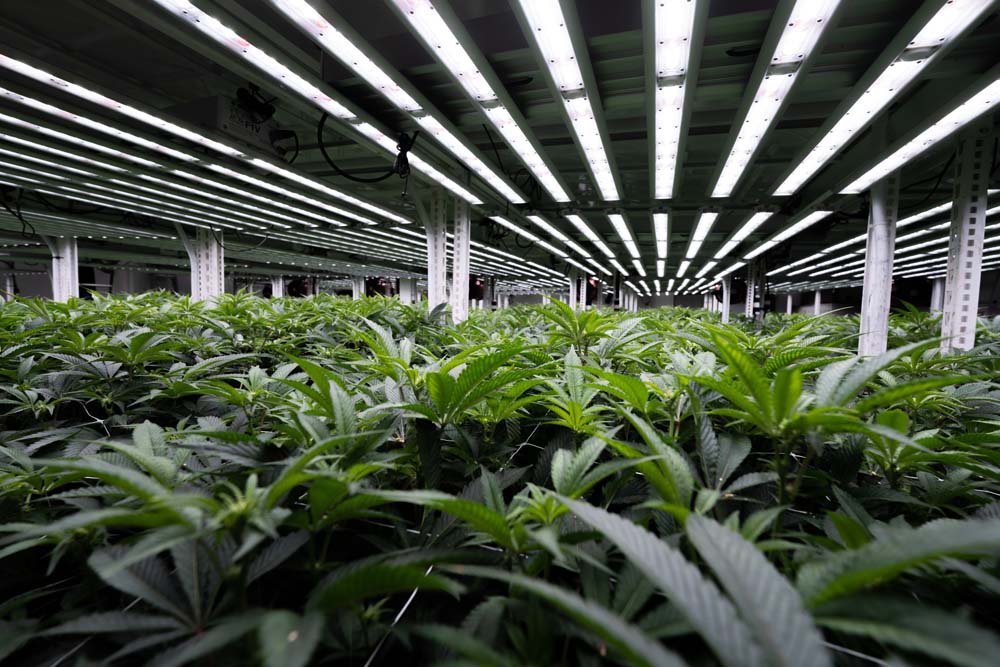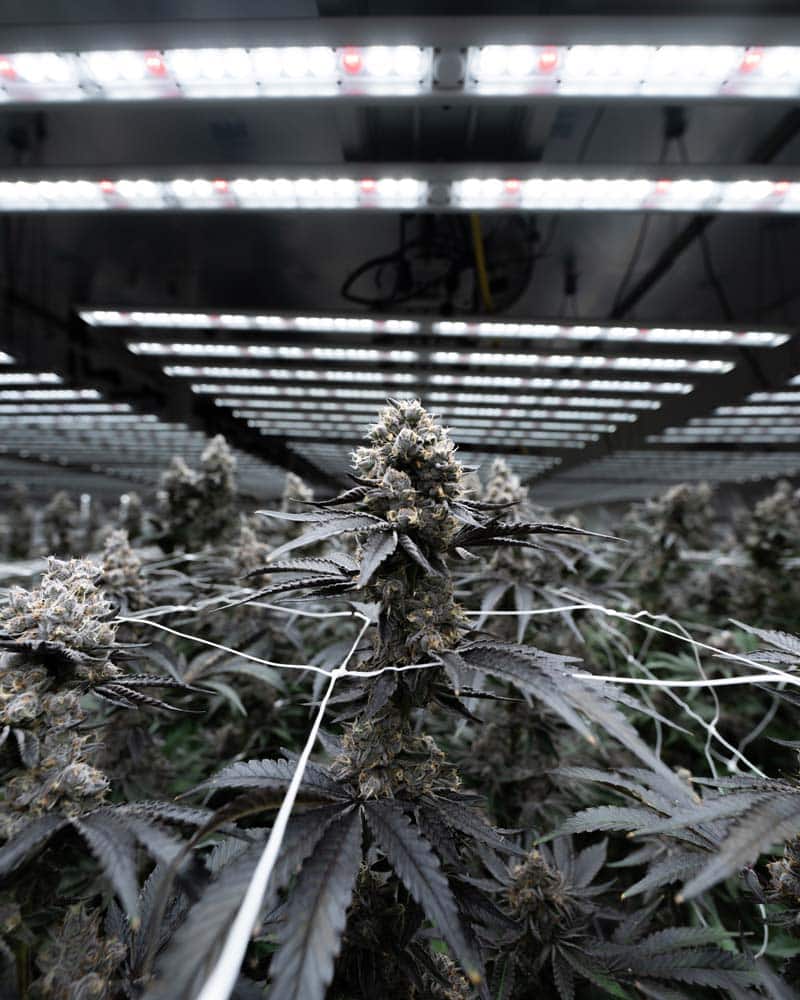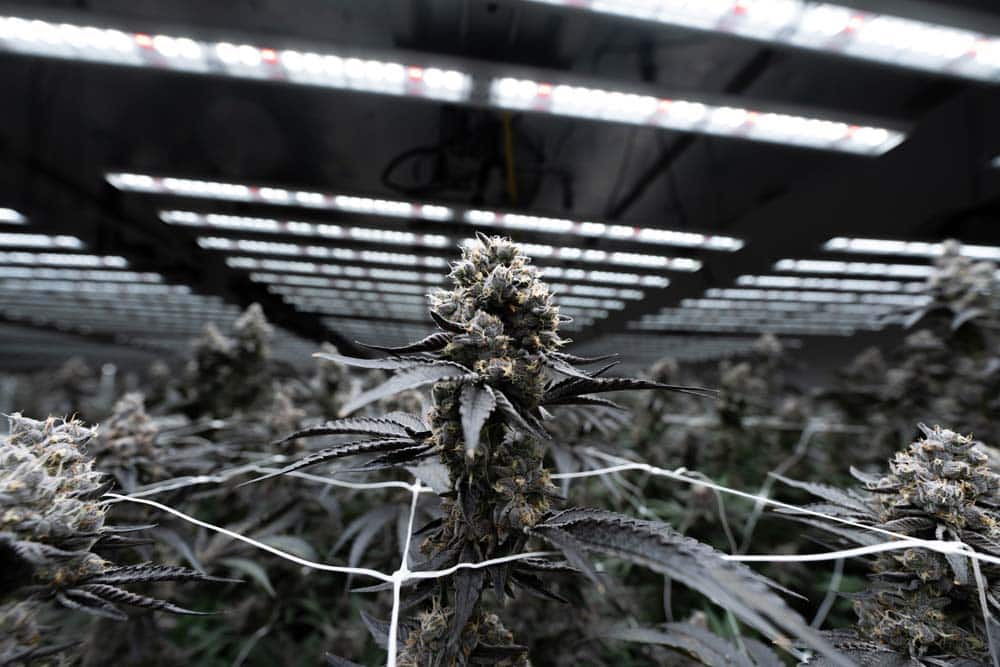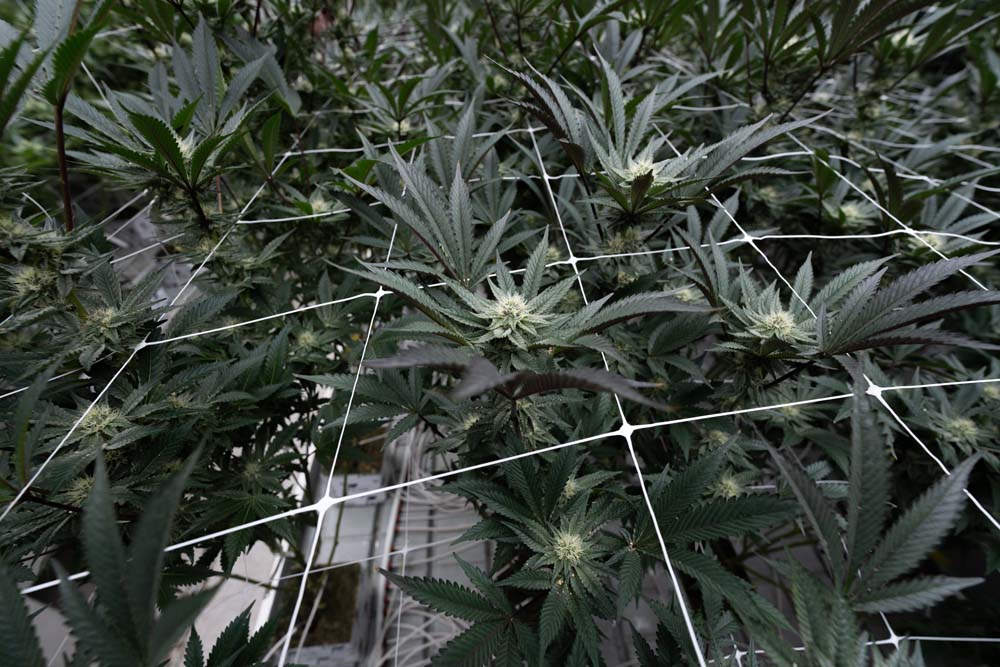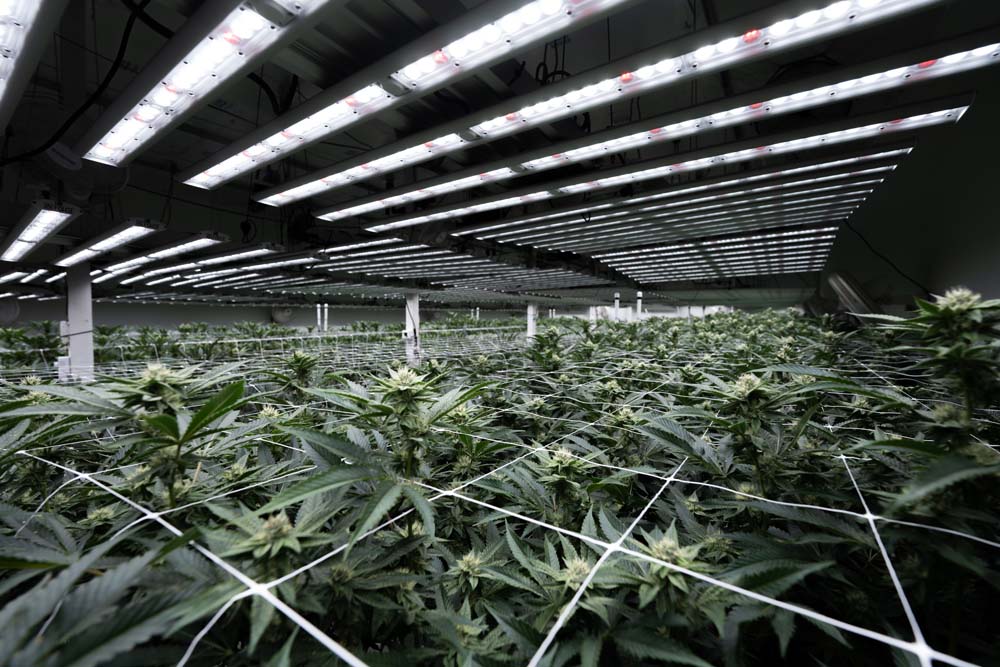Written by Anthony Domangue
Does your growth have limited overhead space? Are you considering multi-tier rack systems to maximize your growth space? Look no further than the F1V series by FOHSE, featuring the best LED grow lights for compact areas.
After developing our flagship series, we began focusing on a light designed for environments with limited space between the fixture and canopy, making it perfect for vertical farming grow lights. A few problems can happen when operating a fixture with an imbalanced spectrum too close to the canopy, such as photobleaching flowers, burning foliage, and adding too much heat to your canopy. This is particularly crucial for those interested in growing lights for cannabis, as the specific needs of this plant require careful management of light intensity and spectrum. Let’s examine why the F1V is ideal for those growing in a single-level space with low ceilings or multi-level rack systems where the distance to the fixture is limited, ensuring your vertical farming or cannabis cultivation is efficient and productive.
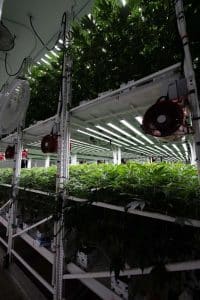
Wattage & Spectrum
Each phase of plant growth requires different light intensities and spectral combinations to optimize the given period of life. Bearing this in mind, especially in the context of the best LED grow lights and vertical farming grow lights, we created a 420-watt and 600-watt rendition of the F1V to meet your needs during veg. Specifically catering to grow lights for cannabis, we’ve also fixed our veg lights with a higher fraction of blues to limit plant height further and maximize the production of growth nodes.
For flowering, particularly critical for those using grow lights for cannabis, we recommend our 800-watt and 1000-watt models. These models are among the best LED grow lights available, providing the intensity needed to create massive flowers. We fix the spectrum of our flowering fixtures with a higher fraction of red and far red to further promote yield and ripening, making them ideal for vertical farming grow lights as well.
Thermal Management
We created this fixture with over 15,000 square inches of thermally-conductive, aircraft-grade aluminum. This technology allows growers to operate the fixture closer to the canopy, saving you valuable headspace. The low heat given off by this fixture also allows growers to preserve the volatile terpenes they work hard to produce.
With our central control module, growers can control the light intensity with the dimming function. With the F1V, growers can set it and forget it. No more hours wasted on raising lights and chasing the canopy.
Lifetime and Durability
We built the F1V series to last, having an IP rating of 65. An IP65-rated enclosure protects against low-pressure water jets from any direction, condensation, and water spray.
The 420-watt and 600-watt fixtures are L90 certified at 46,000 and 47,000 hours, respectively, meaning they will retain 90% of their original luminous flux after this period of time. Our 800-watt and 1000-watt fixtures have L90s at 45,000 hours.
Lensing Technology
The F1V series comes standard with 120-degree polycarbonate lensing around the diode clusters, protecting your diodes from time and weathering. Lensing also has the ability to capture light and re-direct it more efficiently than fixtures with bare didoes. This results in higher light levels to lower growth nodes on the plant.
Best Practices
If you haven’t grown cannabis at high light intensities or under LEDs before, there will be a learning curve when using the F1V series.
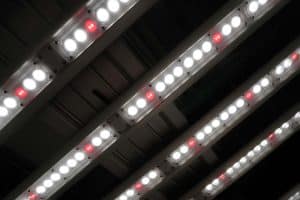
Intensity Recommendations
Based on established research, some cannabis cultivars can handle well above 1800 micromoles. It begins to make sense when you understand that the Sun can deliver over 2200 micromoles on a hot Summer day. For most cultivars, our recommendations are as follows:
- Vegetative: 550 – 900 umol
- Early Flower: 700 – 1000 umol
- Mid Flower: 1000 – 1300 umol
- Late Flower: 800 – 1100 umol
Some cultivars will prefer the lower end of the spectrum listed above, typically maxing out around 1000-1050 micromoles. Other varieties can push light intensities of 1500 micromoles or more! It’s up to each individual to take the necessary data to understand the preferences of each type throughout the stages of growth.
Ramping Intensity
When utilizing high-intensity LEDs for the first time or running a new genetic under LED, growers should take things slowly. Most genetics used today stem from or were bred and selected for their performance under high-intensity discharge or HID systems. This means growers will have to “re-pheno” hunt their genetics under new lights in order to see how each variety responds.
Increasing the amount of usable light in your canopy can present a danger to your plants without understanding that increasing light levels also means increasing the rate of photosynthesis. This increase in the rate or speed of photosynthesis will demand your other inputs to change, and without these adjustments, your plants will suffer.
Increase your room’s light intensity slowly, only increasing by 50-200 micromoles every other day. Increases exceeding 200 micromoles can also damage your plants. The F1V series works with our FOHSE Central Control Module and other third-party controllers to control light intensity increases and decreases.
We do not advocate for “chasing the canopy,” but rather increasing and decreasing intensity via dimming control as opposed to manually moving the light fixtures up and down.
Recommended Height to Canopy
We created the F1V series to take the stress off growers with limited overhead space. Heat is not an issue, so that cannabis plants can be grown within 12” – 24” of this fixture in the vegetative and flowering stages.
The closer you are to the fixture, the greater the light intensity. Growers must remember this, as each cultivar will have its preferences for light intensity. Some prefer lower light intensities, while others prefer higher. It’s up to each grower to understand the varieties they are working with and how they respond to light intensity in order to determine the optimal finishing height from the fixture.
Environmental Conditions
If you are converting to LEDs from an HID system, there are a few things to consider. The ambient heat under LEDs is much lower than HIDs, so your A/C system won’t be working as hard to cool the room down. That being said, you will need to increase the room temperatures to anywhere from 80F-85F to achieve an optimal leaf surface temperature.
Another aspect of your A/C running less frequently is a decreased need for dehumidification. Under HID, the A/C also provided some dehumidification to the room. In LED rooms that will operate cooler, additional dehumidification capacity will be needed to account for greater transpiration rates and less dehumidification help from the A/C system.
You’ll also need to supplement more CO2 than you may be used to. Values of 1200 – 1500 ppm of CO2 can be demanded when pushing light intensities beyond 1200 micromoles.
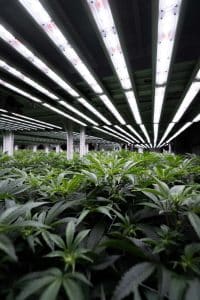
Sanitizing and Cleaning
The most important things to consider when cleaning or sanitizing FOHSE fixtures, including the best LED grow lights, vertical farming grow lights, and grow lights for cannabis, are the aluminum components and polycarbonate lensing. It’s crucial to avoid cleaning solutions containing chemicals that can corrode either of those materials. Heavy oxidizing solutions should be avoided to prevent damage to the aluminum, while products with liquid ammonia can harm polycarbonate. Zerotol, a standard solution used in commercial cannabis production, is both aluminum-safe and polycarbonate-safe, making it an excellent choice for maintaining the performance of grow lights for cannabis, as well as other horticultural lighting solutions.
Dust buildup is the most common issue we see with grow lights for cannabis and vertical farming grow lights. If unserviced for long periods, dust buildup can increase the operating temperature of the fixture, potentially compromising the efficiency of the best LED grow lights.
We don’t recommend “over-cleaning” the fixture; instead, we advise that your facility takes a sensible approach to fixture maintenance for vertical farming grow lights and other horticultural lighting. A visual inspection should be conducted to determine maintenance needs after each cycle. If the fixture is clean upon inspection, it can go without cleaning. Cleaning typically won’t be needed each cycle unless heavy foliar sprays or pesticides adhere to the lensing, a concern that might be particularly relevant for growing lights for cannabis. If it’s determined that the fixture should be cleaned upon review, you can use compressed air and a very gentle cleaning solution for the best LED grow lights and other horticultural fixtures. Try to be cautious when creating your cleaning solution, leaning toward a more diluted than a concentrated one. Yearly cleaning should be conducted at a minimum to maintain optimal performance of vertical farming grow lights, the best LED grow lights, and grow lights for cannabis.
Interested in the F1V Series?
Interested in the F1V series for your facility? Contact us now for more information!
Additional Resources:
Learn how Green Smart Farmer is Growing Three Levels of Success with FOHSE!
There Is a Third Way to Light Your Crop That’s More Efficient and Less Expensive!

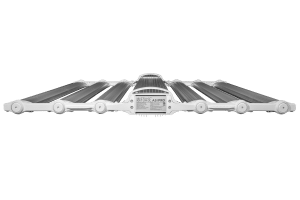

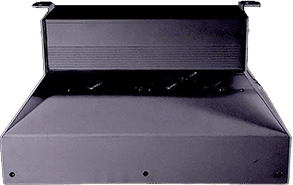

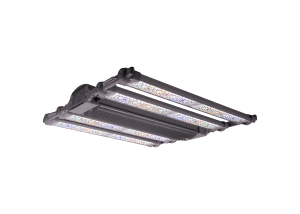


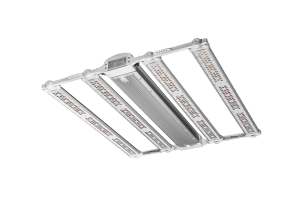
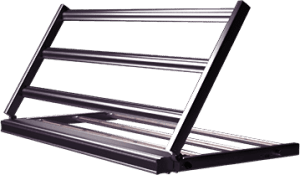
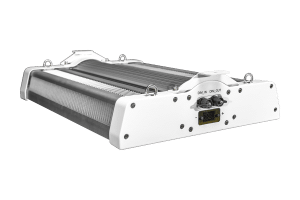
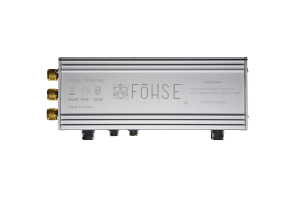

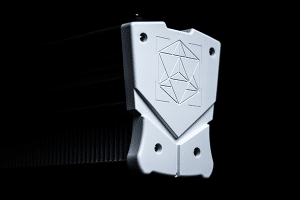

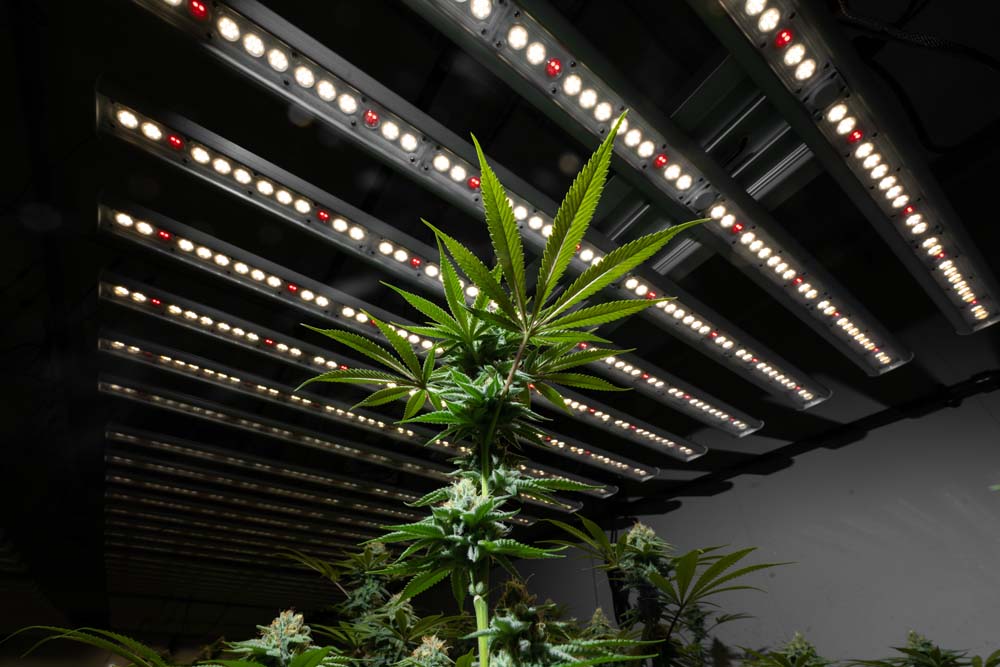
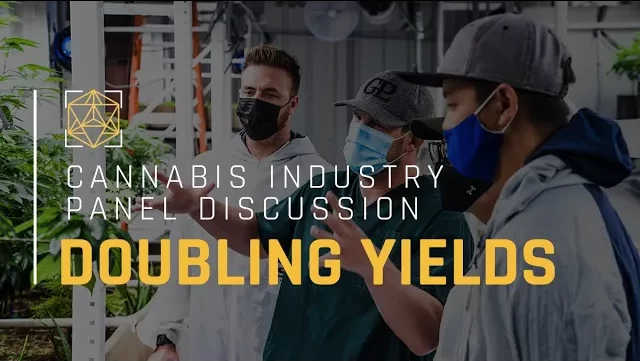
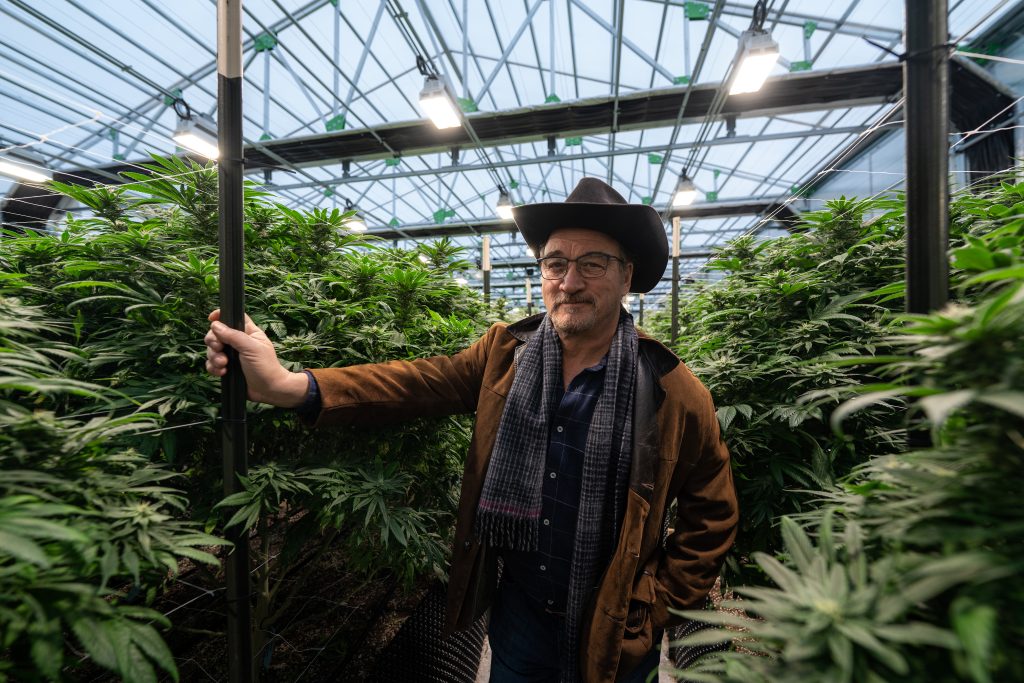
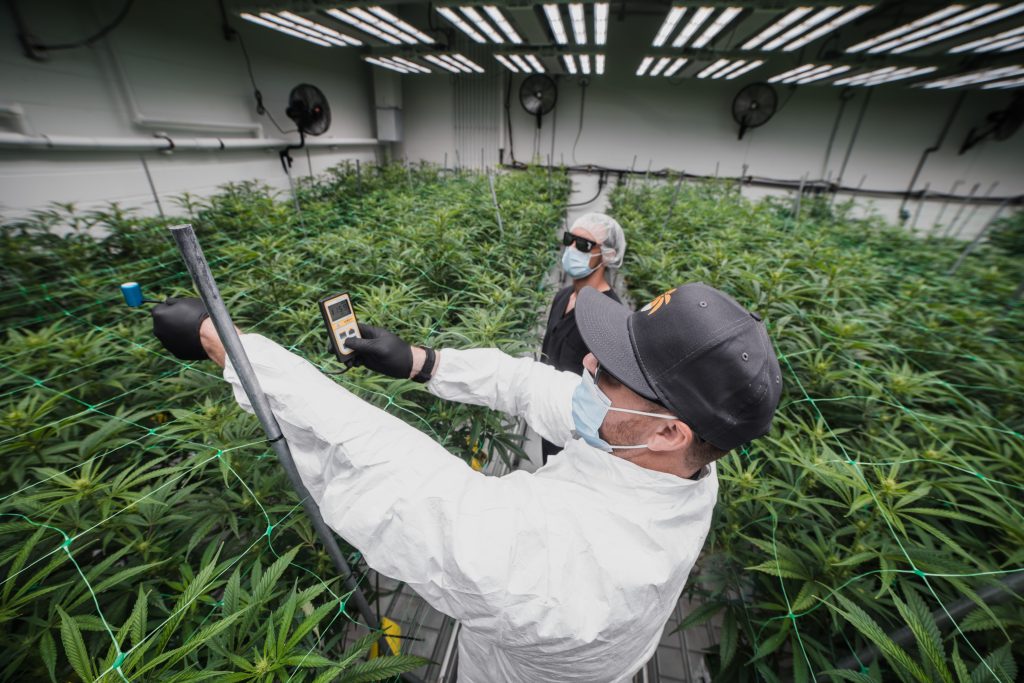
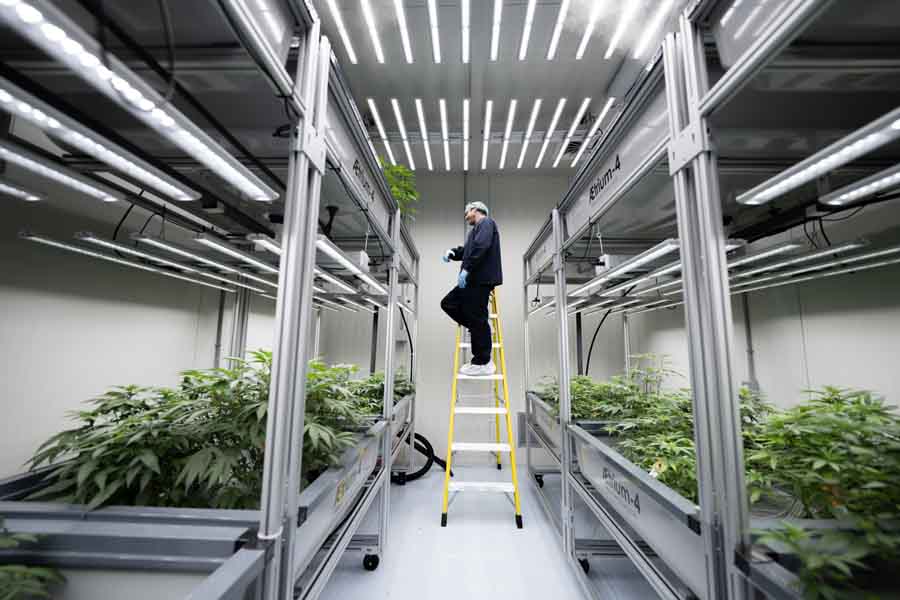
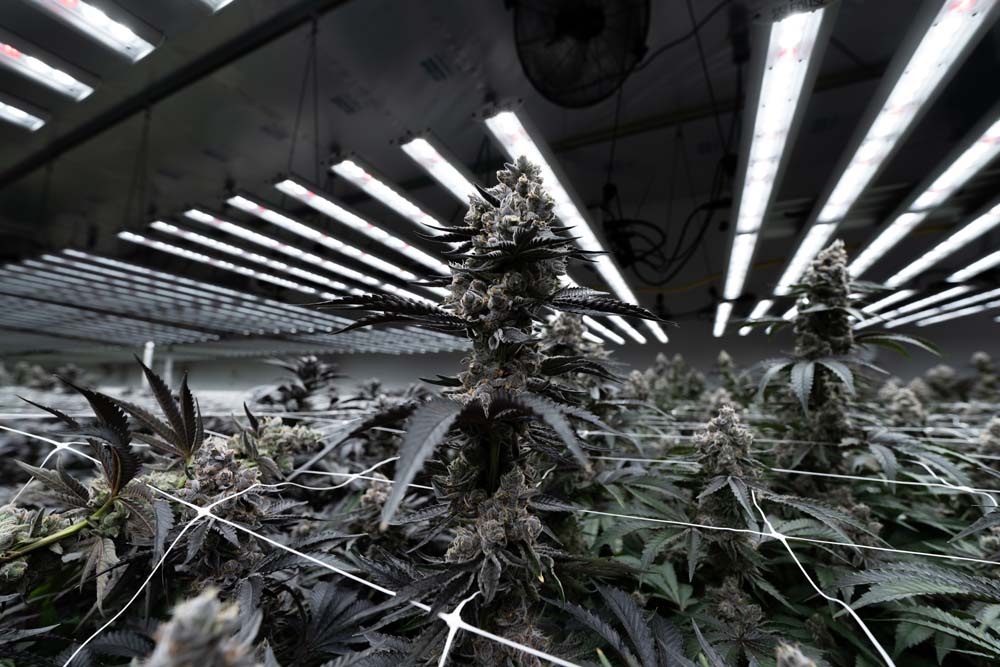
![[WEBINAR] 159 Grams per Sq. Ft.?! Setting Harvest Records with High Intensity LED](https://resources.fohse.com/wp-content/uploads/2022/05/MYWebinar_NorCal_FBLink-1024x538.png)
